MACKINNON
FINE FURNITURE


MACKINNON FINE FURNITURE Mackinnon Fine Furniture 5 Ryder Street St James's London SW1Y 6PY Telephone: +44 (0)20 7839 5671 | Mobile: +44 (0)7725 332 665 | Email: charlie@mackinnonfineart.com www.mackinnonfineart.com

INTRODUCTION
Welcome to our ninth printed catalogue. We are delighted to share this selection of pieces from our current inventory.
Of particular note is the outstanding pair of urns and pedestals supplied by John Linnell and designed by Robert Adam for Shardeloes in 1766, the exceptional pair of rococo armchairs from the Earl of Derby’s collection at Knowsley in Lancashire and the magnificent neo-classical table from Boynton Hall – the provenance of which has only now been pieced together. We include a pair of scarlet japanned side chairs by Giles Grendey from the celebrated Lazcano suite, a giltwood settee from Powerscourt, a pair of chairs from Chesterfield House and the extraordinary pair of oyster veneered mirrors from the Long Gallery at Chirk Castle. The eight George I walnut side chairs previously at Dumbarton Oaks are also particularly noteworthy.
I would like to thank Isabelle Vaudrey, who joined us this year, for her help in the gallery and in compiling this catalogue and also Christopher Coles for his invaluable assistance with our research. Please do let us know if you find something of interest in the catalogue. Do come and visit us in St. James’s if you happen to be in the area.
Cover:
 Charlie Mackinnon Mackinnon
Charlie Mackinnon Mackinnon
3
Fine Furniture
Left: The Drawing Room, Chesterfield House, showing the suite of seat furniture in situ, pp 8-9.
One of a pair of George III Giltwood Armchairs from Knowsley Hall, pp. 54-57.
Inside Covers: Detail of the specimen marble top of the Boynton Hall Table, pp 64-67.
THE CHIRK CASTLE MIRRORS
A PAIR OF CHARLES II MIRRORS
An exceptional and highly important pair of Charles II kingwood oyster-veneered mirrors.

Of magnificent and extremely rare large scale, each with their original bevelled Vauxhall mirror plates within bolection cushionmoulded kingwood frames superbly parquetried in wave-scrolling ‘oyster’ shell scalloped veneer, and ‘oyster’ mosaic roundels.
Height: 51 in (129.5 cm)
Width: 39 in (99 cm)
Provenance
Presumably supplied to Sir Thomas Myddelton (d.1684) for Chirk Castle, Wrexham
Thence by descent at Chirk Castle
Subsequently, Private Collection UK
Literature
Illustrated in situ in the Long Gallery in a watercolour of 1861 by the Hon. Mrs. Mary Wombwell
Illustrated in a late 19th century photograph published in the Chirk CastleNational Trust Guidebook, 1983, p. 25
C. Hussey, ‘Chirk Castle’, Country Life, 5 October 1951, fig. 8 (illustrated)
Thomas Pistor
These outstanding mirrors were possibly made by Thomas Pistor - an ‘oyster-veneered princeswood’ bureau with very similar veneer work was illustrated in Country Life, ‘Buxted Park’, 11 August 1950, p. 44. This bureau was inscribed to the interior ‘Mr. Thomas Pistor, Ludgate Hill, London’, (ref: C. Gilbert, The Dictionary of Marked London Furniture, Leeds, 1996, p. 44). Comparative features include the rare use of exotic kingwood or ‘princeswood’ veneers, the wavy decoration produced in the way that the ‘oyster’ veneers have been laid, the same geometric patterns and the inclusion of circular oyster veneered mosaic roundels.
Possibly by Thomas Pistor England, circa 1675-1685
MACKINNON FINE FURNITURE 4

5
Of exceptional size for their date, these wonderful mirrors were almost certainly supplied for the Long Gallery at Chirk Castle, near Wrexham in Northeast Wales. Commissioned by Sir Thomas Myddelton 2nd Bt. (d. 1684), the Long Gallery was begun in 1670 and was substantially complete by 1678, when the sum of £100 15s 0d was paid to ‘Jonathan Hooke, the Joyner’. On the same day, Thomas Dugdale was paid £30 ‘for carveing all the Carved worke at the Longe Gallery’. The mirrors are likely those recorded as ‘2 Pier Glasses’ in the Long Gallery in the 1795 Inventory. They also appear in a watercolour by the Hon. Mrs. Mary Wombwell of the Long Gallery dated 20th Sept 1861, as well as in an undated late 19th century photograph of the gallery which shows one above the fireplace at the south end. Both these documents show how much of the original 17th century arrangement had survived in spite of alterations carried out in the 1840s. An inventory, circa 1910, describes: ‘1 pier glass over fire place Rose wood frame North End; and ‘1 pier glass over fire place rosewood frame South End’.
The mirrors are veneered throughout in kingwood, a type of rosewood. Often described in early inventories as ‘Prince’s wood’, it was a rare and highly prized timber imported from South America. Extremely dense and hard to cut, it was the most expensive wood to use during the seventeenth century, which in itself underlines the importance and cost of these mirrors when originally commissioned.
Chirk Castle was occupied almost continuously for nearly 700 years. It was probably built by Roger Mortimer, of the powerful Marcher family, who had been granted the land by Edward I after the Welsh defeat in 1282. Built as a defensive castle, some of the walls are over 5 metres thick. In 1595, the castle was purchased by Sir Thomas Myddelton, a son of the governor of Denbigh Castle and a successful London merchant. As a founder of the East India Company, and an investor in the expeditions of Drake, Raleigh and Hawkins, he had the means to convert Chirk into a comfortable Tudor residence. Chirk was besieged and badly damaged during the Civil War. After the Restoration in 1660, the family faced a huge task of rebuilding, decoration and refurbishment. The castle remained in the hands of the Myddelton family, who still own and work much of the estate, until 1978. It is now cared for by the National Trust.
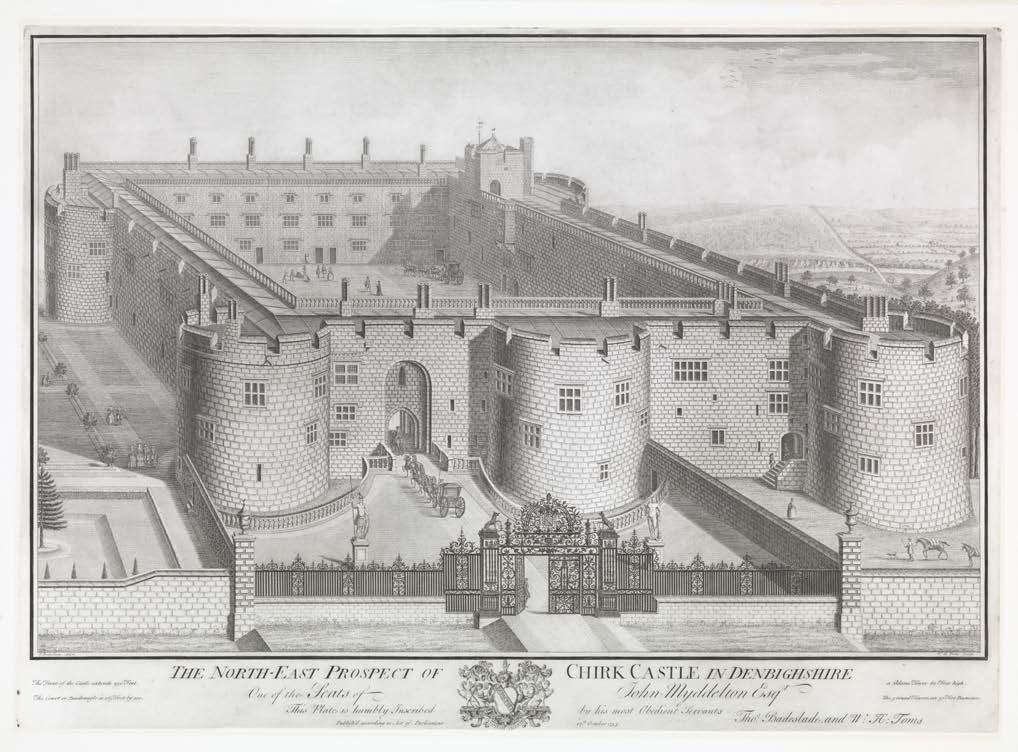
MACKINNON FINE FURNITURE 6
Engraving of The North-East prospect of Chirk Castle © Image; Crown Copyright: UK Government Art Collection
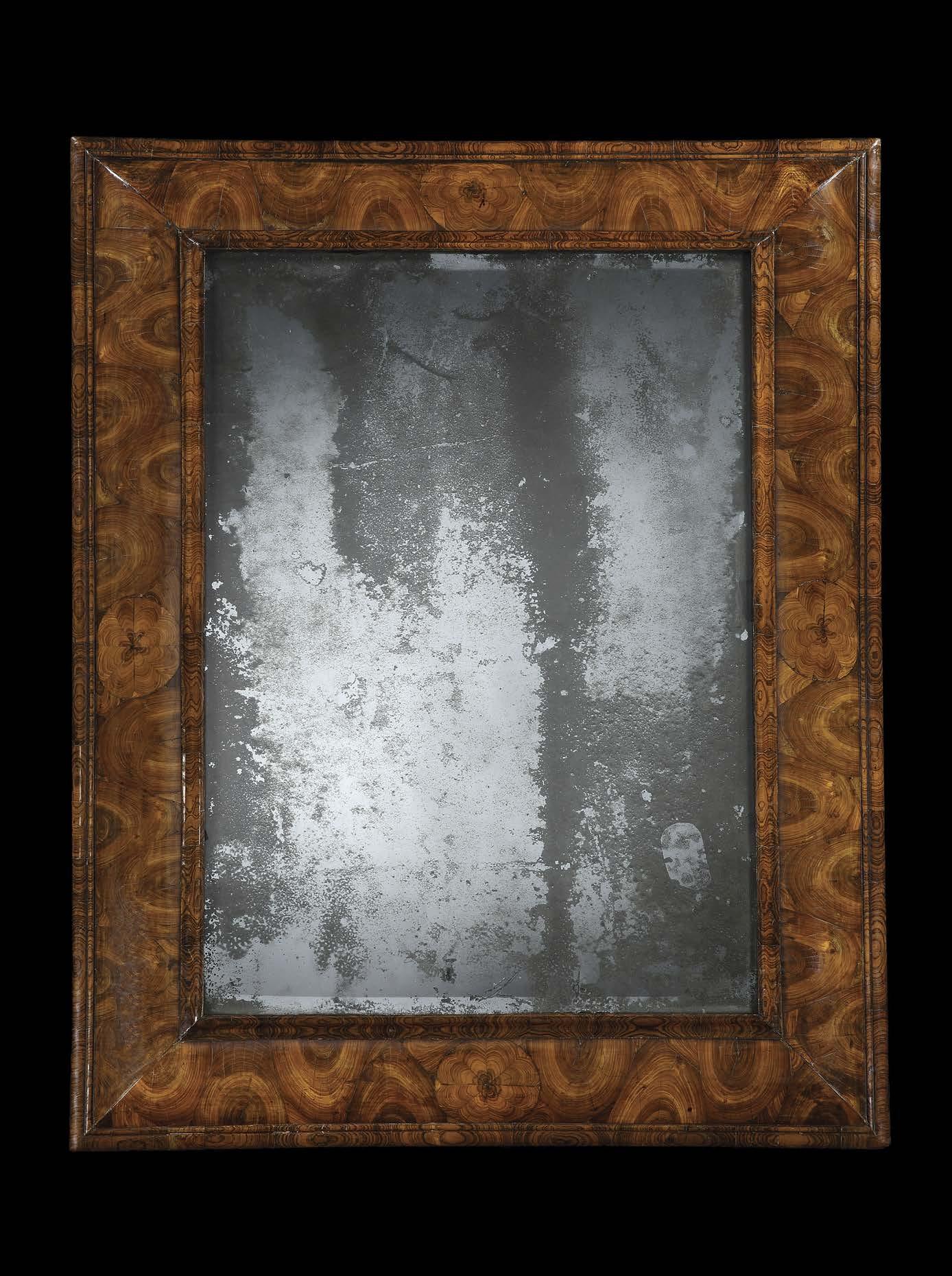
7
THE EARLS OF CHESTERFIELD AND HAREWOOD
THE CHESTERFIELD HOUSE ARMCHAIRS
England, circa 1770
An exceptional pair of George III Chippendale period giltwood armchairs from the collections of the Earls of Chesterfield, and subsequently the Earls of Harewood. In the French neo-classical taste, with superb finely carved giltwood show-frames detailed with shells, acanthus leaves and foliate decoration, standing on elegant cabriole legs similarly carved. The seats, backs and armrests upholstered with fine early 19th century floral needlework in tones of green and pink on a white background, made for the chairs.
Height: 37¼ in (95 cm)
Width: 26 in (66 cm)
Depth: 20½ in (52 cm)
Provenance
Presumably commissioned by the 4th Earl of Chesterfield (d. 1773) or the 5th Earl of Chesterfield (d. 1816) for Chesterfield House, London
Sold from Bretby Hall: Christie’s London, Catalogue of Old English and French Furniture and Porcelain being a portion of The Bretby Heirlooms Passing under the Wills of the 7th Earl of Chesterfield and the Dowager Countess of Chesterfield…..also the Property of the Earl and Countess of Carnarvon, 29 - 30 May 1918, lot 115 described as “A suite of Old English Furniture, of Louis XV design, the frameworks carved with shells and foliage, partly painted and gilt, the seats and backs stuffed, and covered with needlework with flowers and key-pattern in coloured wools, consisting of – Six armchairs Two settees”
Acquired at the above sale by the 6th Earl of Harewood for his newly acquired London residence, Chesterfield House. The 6th Earl wrote to his mother on 2 June 1918 to let her know that he had bought some items from Bretby, including ‘a set of 6 chairs + 2 sofas’. (Credit: Letter from Viscount Lascelles to 5th Countess of Harewood, 2 June 1918, 5th Countess of Harewood Archive, Harewood House Archive)
Part of the suite photographed in situ in Chesterfield House in 1922. Transferred to Harewood House, Yorkshire upon the sale of Chesterfield House in 1932. Sold Christie’s London, 23 May 1968, lot 107, ‘The Property of the Right Honourable the Earl of Harewood’ (six armchairs and two settees)
With Mallett, London Private Collection, UK
Literature
G. Beard and J. Goodison, English Furniture 1500 - 1840, 1987, p. 160
Mallett, English and Continental Antique Furniture and Objets d’Art, 1989, p. 25
L. Synge, Mallett’s Great English Furniture, London, 1991, p. 137, pl. 154
L. Synge, Mallett Millennium, London, 1999, p. 157, pl. 190
We are grateful to the archives team at Harewood House, and in particular to Dr. Gemma Plumpton who has made a study of the 6th Earl of Harewood’s purchases. We are also grateful to Richard P. Merriman for his help working through the 1817 inventory of the contents of Chesterfield House and Bretby Hall.
MACKINNON FINE FURNITURE 8
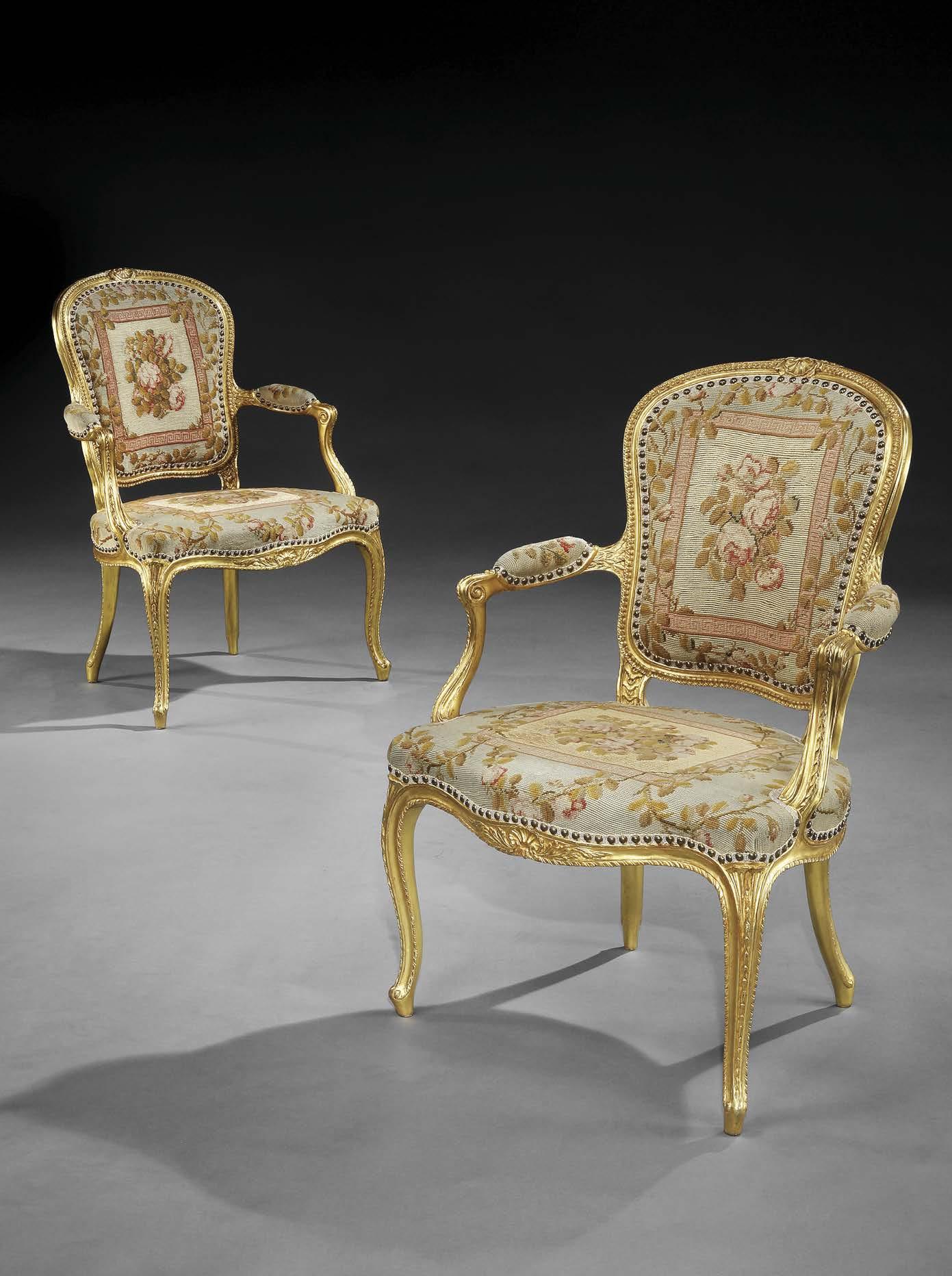
9
A PAIR OF GEORGE I JAPANNED ARMCHAIRS
In the manner of Giles Grendey England, circa 1720
A very fine pair of early 18th century George I japanned armchairs, in the manner of Giles Grendey. Of generous scale with fine gilt chinoiserie decoration on a black japanned background, the seats and backs with caning of exceptional quality, and with silk damask upholstered fitted cushions. With high rounded backs, impressive outswept scrolled arms, and standing on stretchers united by cabriole legs.
One chair with stamped journey-man’s initials ‘RP’ to the rear seat rail.
Height: 47¼ in (120 cm)
Width: 27¼ in (69 cm)
Depth: 25¾ in (65 cm)
Giles Grendey (1693 – 1780), a leading London cabinetmaker, was born in Wotton-under-Edge in Gloucestershire. He was the apprentice to the London joiner William Sherborne before becoming a freeman in 1716. Taking his own apprentices by 1726, Grendey was elected to the Livery of the Joiners’ Company in 1729. His first workshop was at St. Paul’s, Covent Garden, and he subsequently moved to St. John’s Square, Clerkenwell in 1772. He developed a thriving export trade. Grendey’s chair makers are known to have often stamped pieces with their initials and japanned furniture was a particular speciality of his workshops.
Grendey’s most important recorded commission was the celebrated Lazcano Palace scarlet japanned furniture from the collections of the Dukes of Infantado – arguably the most elaborate suite of English furniture made during the 18th century. Commissioned specifically for export to Spain, the ensemble comprised at least seventy-seven pieces including tables, chairs, daybeds, looking glasses, tripod stands, and several desks and bookcases. Pieces from this suite can be seen in leading museums including the Victoria & Albert Museum in London and the Metropolitan Museum of Art in New York. For examples from this suite please see pages 106-107 of this catalogue.
MACKINNON FINE FURNITURE 10
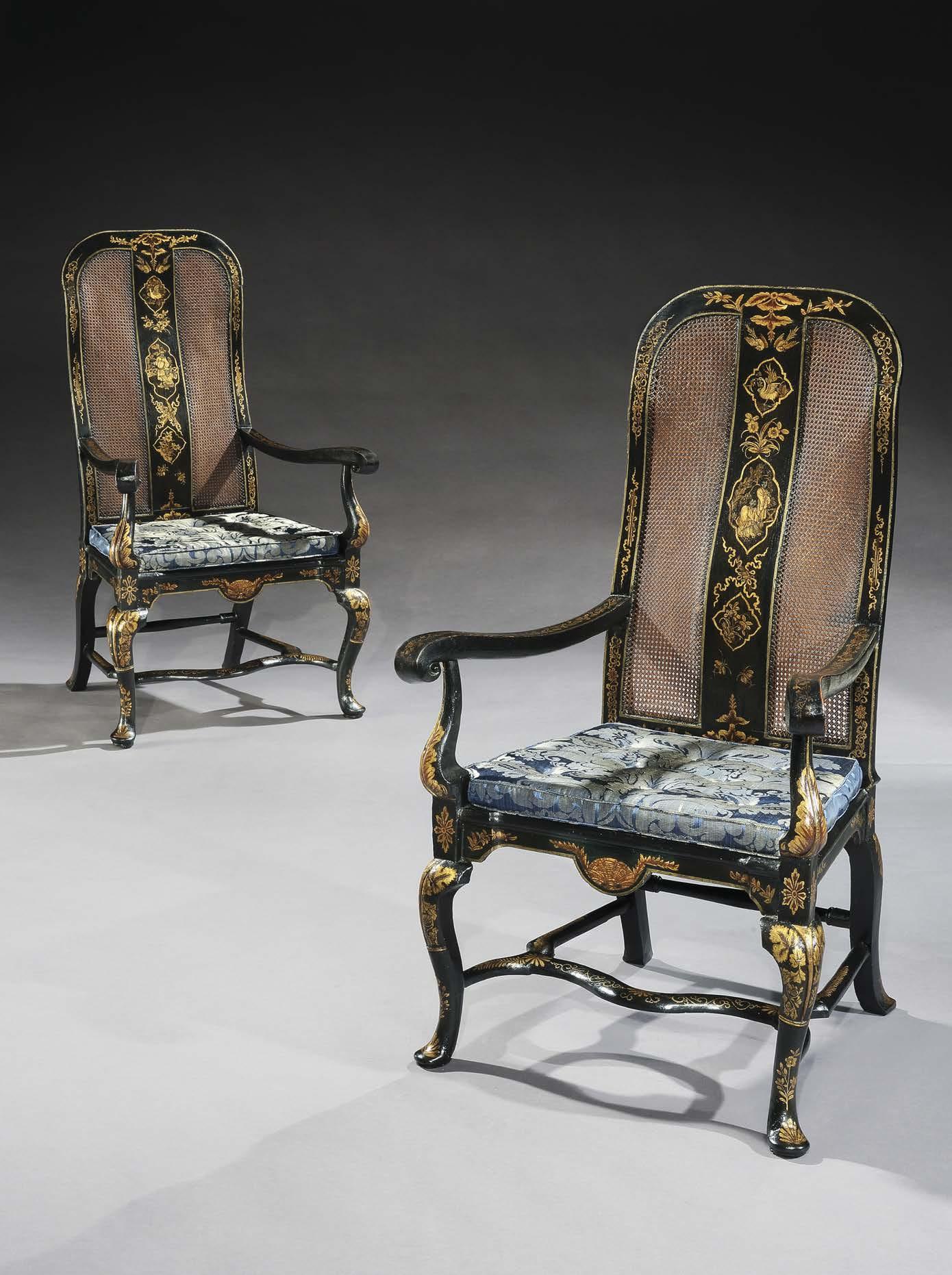
11
A GEORGE III MAHOGANY STRONG BOX
England, circa 1765
An exceptional George III mahogany strong box. Of rectangular form, the figured veneered hinged top with an incurved moulding edged with bead-and-reel, gadrooning, and rope carving, above a conforming case fitted with three locks and heavy brass carrying handles with shaped flat back plates. The front panel inset with a silver plaque with an engraved coat of arms. The base with ribbon and rose-carved mouldings, supported on shaped bracket feet with foliate gadrooned detailing.

With exceptional colour and patina.
Height: 20¾ in (53 cm)
Width: 28 in (71 cm)
Depth: 19 in (48.5 cm)
The engraved arms are those of the Graeme family of Inchbrakie and Aberuthven.
Comparative Literature:
B. Levy, From the Archives: Living with antiques: The Collection of Martin and Gloria Gersh, 17 August 2021, pl. IV
MACKINNON FINE FURNITURE 12

13
A QUEEN ANNE JAPANNED BUREAU CABINET
England, circa 1710
A fine Queen Anne black japanned bureau cabinet of rare small proportions. The upper section with an arched cresting above a single hinged door fitted with the original bevelled mirror plate opening to reveal shelves, pigeon-holes and small drawers. The lower section incorporating a bureau with a writing slope, pigeon-holes, drawers, and secret compartments, all above two short drawers over two long drawers, standing on bun feet.
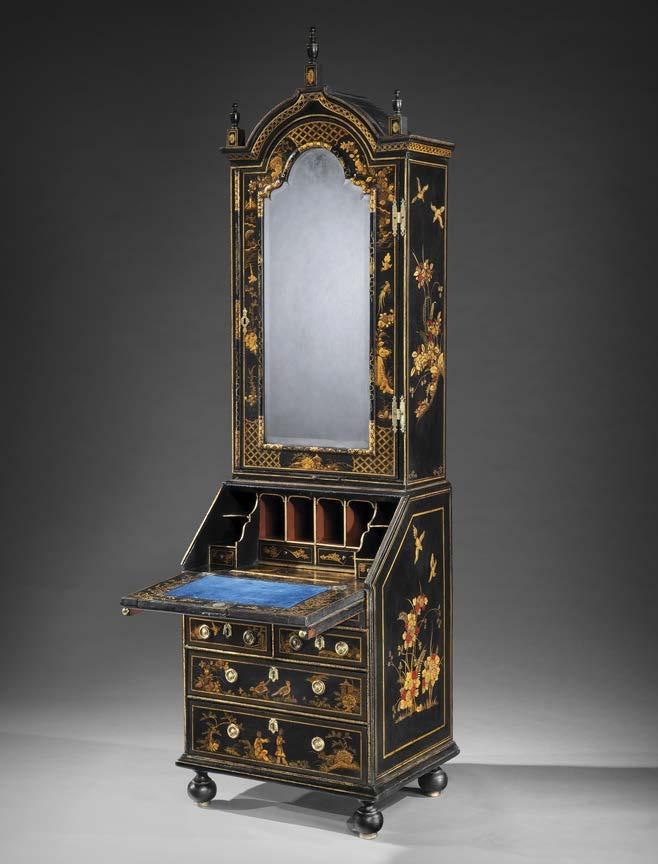
Decorated throughout with fine gilt chinoiseries on a black japanned background in the manner of Stalker & Parker.
Height: 86¾ in (220 cm)
Width: 26 in (66 cm)
Depth: 20¼ in (51 cm)
Literature
J. Stalker and G. Parker, The Treatise of Japanning and Varnishing, London, 1688
The Grosvenor House Art & Antiques Fair Handbook, 1996, p. 131 (for a closely related example)
MACKINNON FINE FURNITURE 14
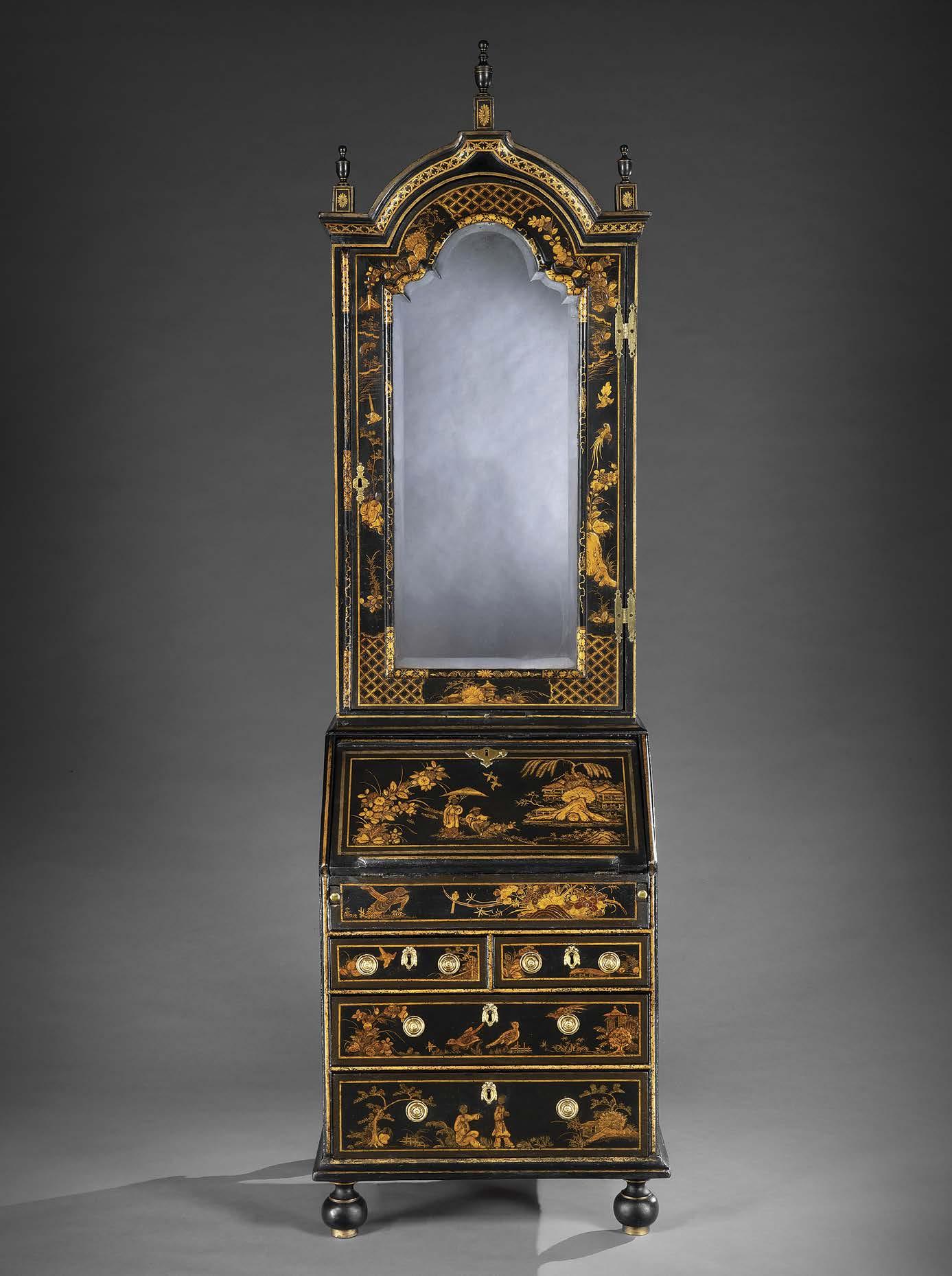
15
A CHARLES II GESSO MIRROR
England, circa 1680
A very rare late 17th century Charles II Baroque frame, with a rectangular antique mirror plate held within a berried stiff-leaf carved slip, encompassed by pierced scrolled acanthus, fruit, flowers and pomegranates, with two opposing cherubs and scallop shell corners, the apron with a central winged cherub mask and floral swag, the cresting comprising a pair of opposing seated cherubs flanking a scrolled cartouche surmounted by a Royal crown. With remnants of the original silver leaf decoration on the carved gesso finish.

Exceptional depth of carving throughout.
Height: 55¼ in (140 cm)
Width: 42½ in (108 cm)
MACKINNON FINE FURNITURE 16
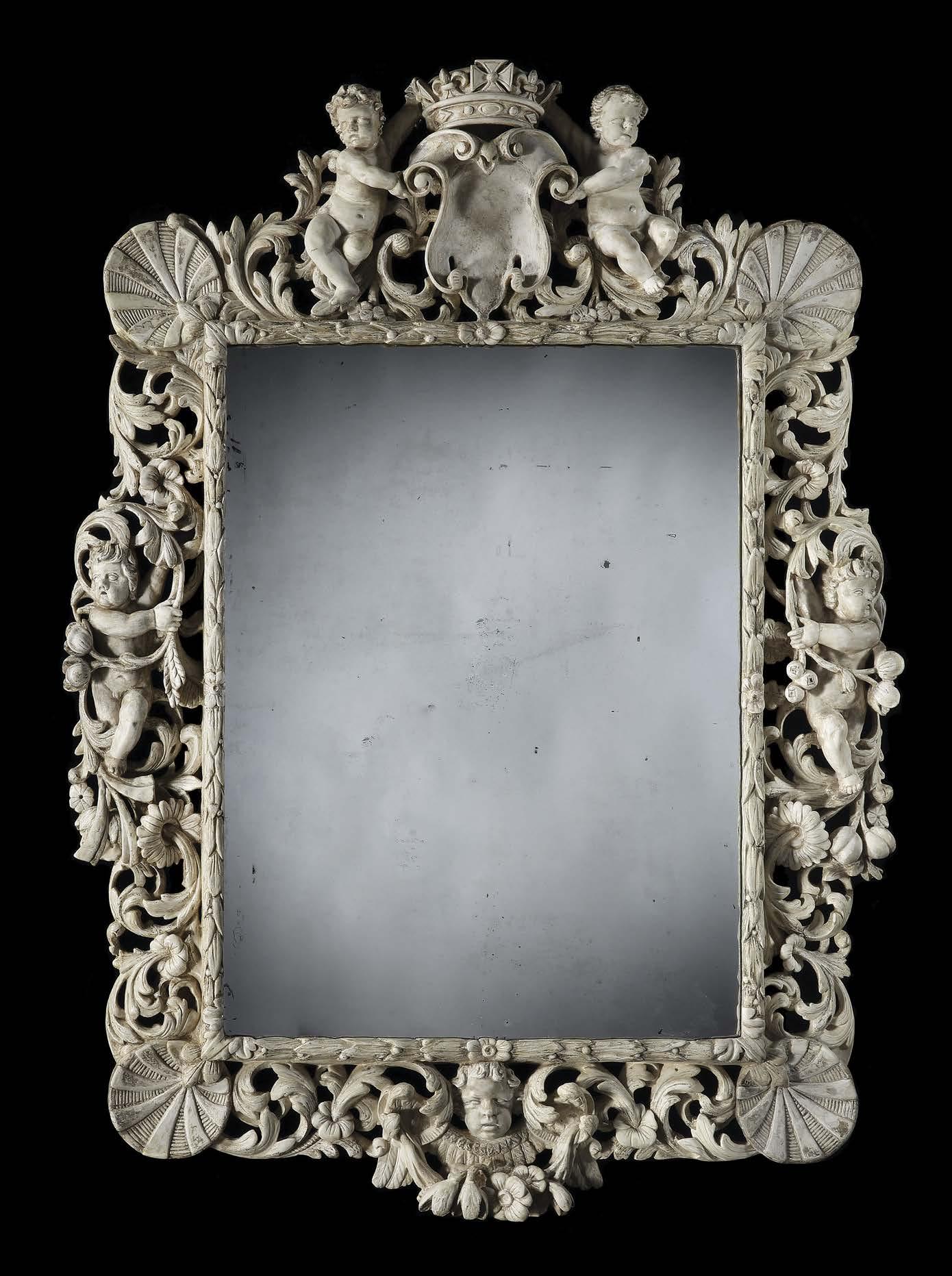
17
A GEORGE III YEW WOOD COMMODE

Attributed to William Gomm
England, circa 1760
A very rare George III yew-wood commode. The serpentine top with bold gadrooning, above two short drawers over three long graduated drawers each cross-banded and with fine brass swan neck handles, all above an elaborately carved lower frieze of elongated horizontal C-scrolls and foliate decoration. The canted corners similarly decorated with carving of outstanding quality, with impressive scrolls, acanthus leaves, harebells and further foliate detailing. Standing on carved short cabriole legs with scroll toes.
The yew-wood of exceptional colour and patination throughout.
Height: 33 in (84 cm)
Width: 44 in (112 cm)
Depth: 21¼ in (54 cm)
Provenance
Stair & Company, The Grosvenor House Art & Antiques Fair, 1999
William Gomm
Gomm was born around 1698, the son of Richard Gomm, a yeoman farmer from Chinnor in Oxfordshire. He served as an apprentice to Hugh Maskall, a leather trader in London, starting in 1713. In the 1730s, Gomm moved his workshop to Newcastle House in Clerkenwell Close, nearby to Giles Grendey’s business in Clerkenwell Square. During this period, Gomm is known to have worked in collaboration with Abraham Roentgen.
Three Gomm manuscript books survive at the Winterthur Library in Delaware, including designs for furniture which draw inspiration from Thomas Chippendale’s Director with the incorporation of gothic, rococo and chinoiserie elements. Of particular note is a serpentine fronted commode whose design features rococo carving on the apron and bold scrolls to the canted corners, similar to our example.
Gomm’s earliest recorded commission was from Richard Hoare of Barn Elms between 1731-33. He also supplied a ‘fine Mahogany Compass Cutwork Tea Table on Castors’ and a ‘mahogany BedChair Stuff’d and finish’d’ to Richard Wedell for his Pall Mall residence. One of Gomm’s most prominent clients was the 5th Lord Leigh for the furnishings of Stoneleigh Park, Warwickshire, beginning in 1763 and totalling over £800, which included a number of serpentine commodes.
MACKINNON FINE FURNITURE
18
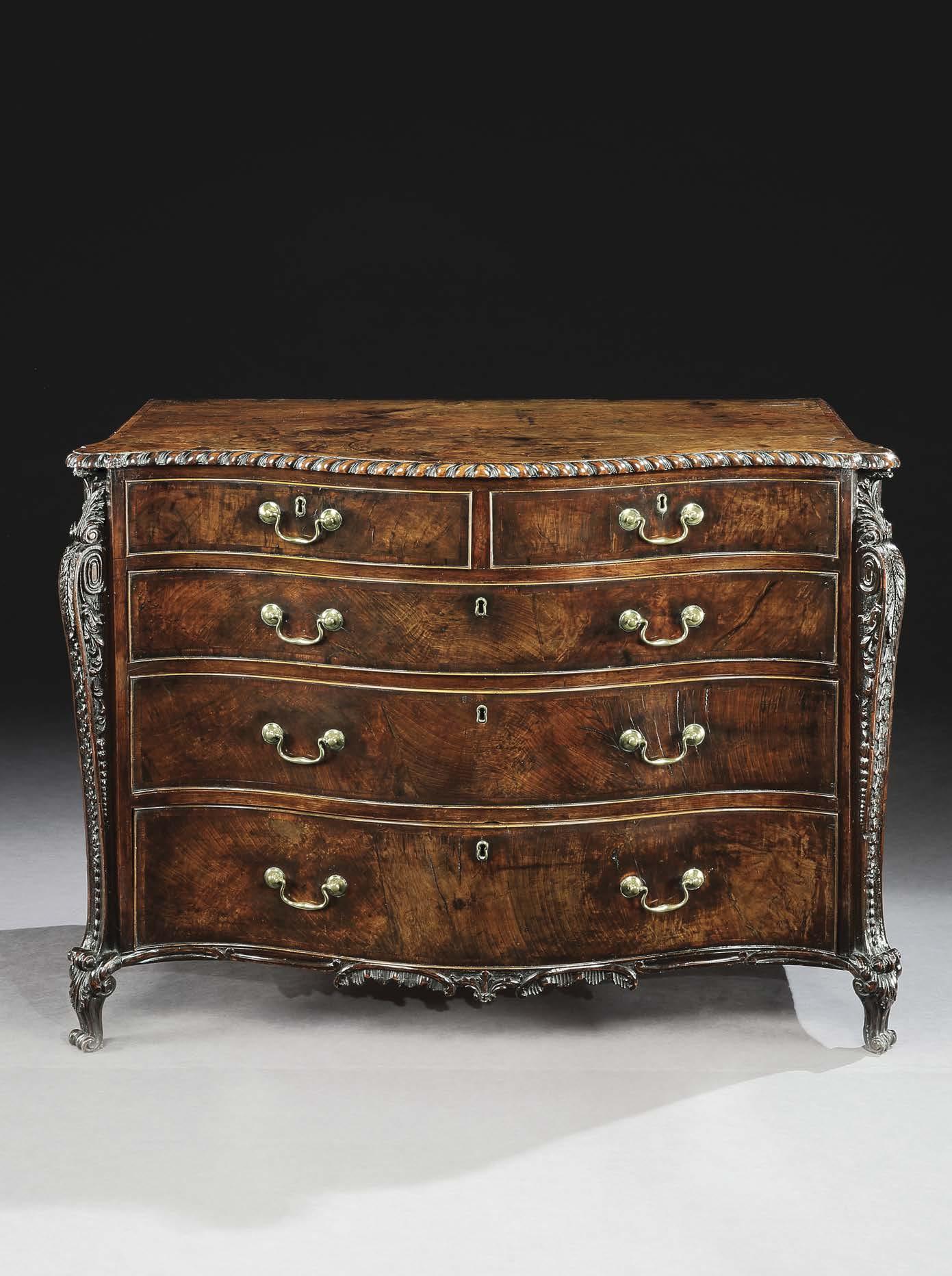
19
A PAIR OF GEORGE III GILTWOOD ARMCHAIRS
England, circa 1780
A fine pair of George III neo-classical giltwood armchairs. The oval back frames centred with carved paterae and foliate swags, the armrests with scrolled and fluted down-swept supports, the padded backs, elbows and seats upholstered with silk damask. The serpentine fronted seat rail carved with conforming decoration. The front legs circular, tapered and fluted and headed by carved paterae, the back legs elegantly outswept.
Height: 38¾ in (98 cm)
Width: 24¼ in (62 cm)
Depth: 18¼ in (46 cm)
In the neo-classical taste, this pair of fine giltwood armchairs epitomise the fashion in England towards the end of the 18th century. The leading cabinet-makers of the day were highly influenced by the designs and work of Robert Adam.
Adam worked in the neo-classical style – a movement in the decorative and architectural arts that drew direct inspiration from the classical art of Ancient Greece and Rome. Adam, and many of his clients, went on a Grand Tour of the continent for inspiration. Examples of Adam’s work in England include historic masterpieces such as Syon House and Osterley in Middlesex, Kedleston Park in Derbyshire and Saltram in Devon. Adam was not only concerned with the architecture of a room, but also all the fixtures and fittings including the furniture, works of art, carpets and lighting, collaborating closely with the leading manufacturers of the day to create harmonious interiors.
These chairs, in the elegant French taste typical of the period, are embellished with carved classical motifs throughout including paterae, acanthus leaves, harebells and fluted columns.
MACKINNON FINE FURNITURE 20
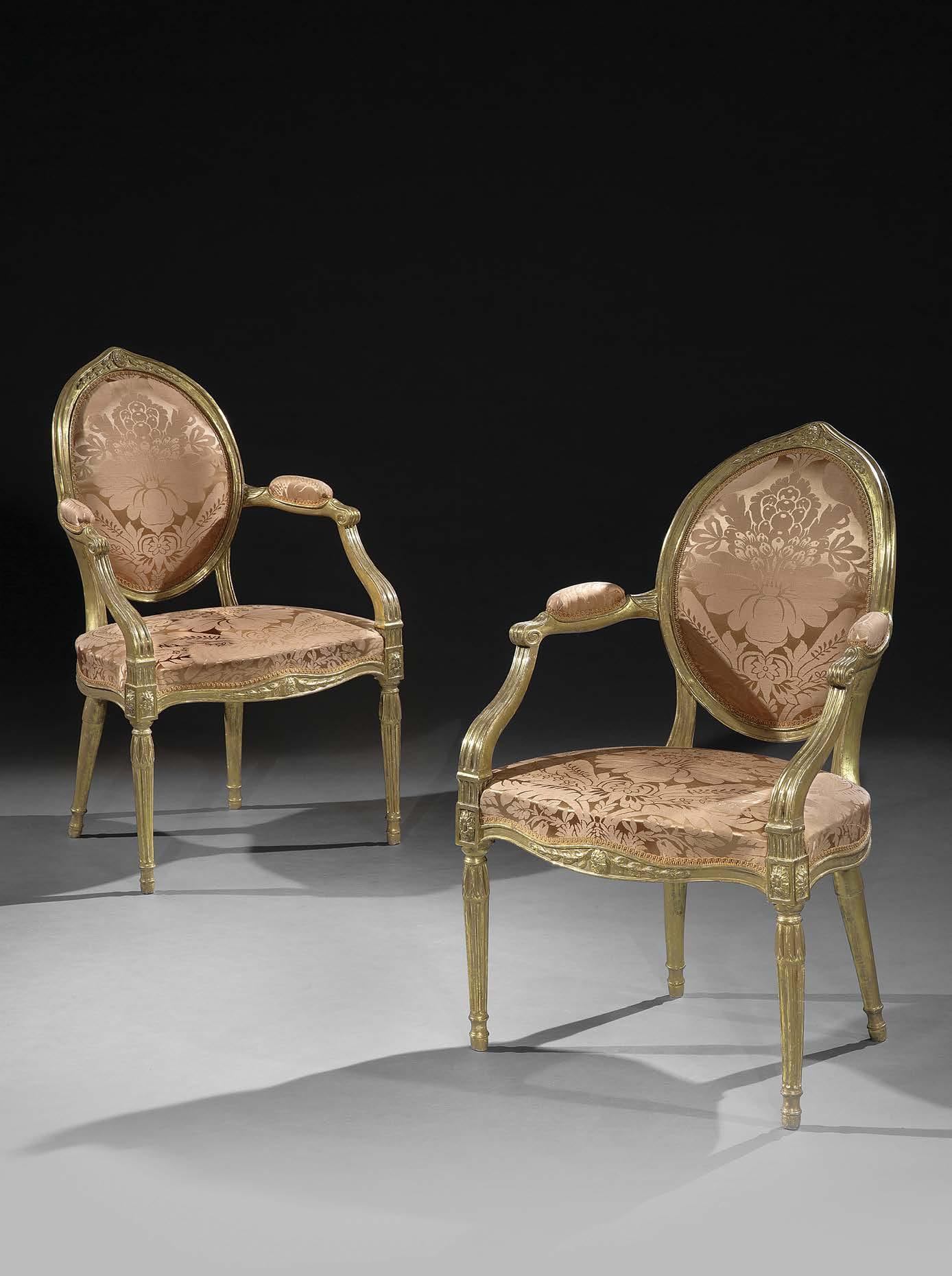
21
A WILLIAM AND MARY WALNUT ESCRITOIRE
England, circa 1680 - 1700
A superb late 17th century William and Mary period walnut escritoire. Of wonderfully figured walnut throughout, the upper section with a moulded cornice above two short drawers in the upper frieze above a fold-down gilt-tooled leather-lined writing surface, opening to reveal a series of smaller drawers and pigeon holders fashioned around a central hinged door. The lower section with pronounced moulded edge above a series of two short over three long graduated drawers. With brass ring handles. Standing on its original turned feet.
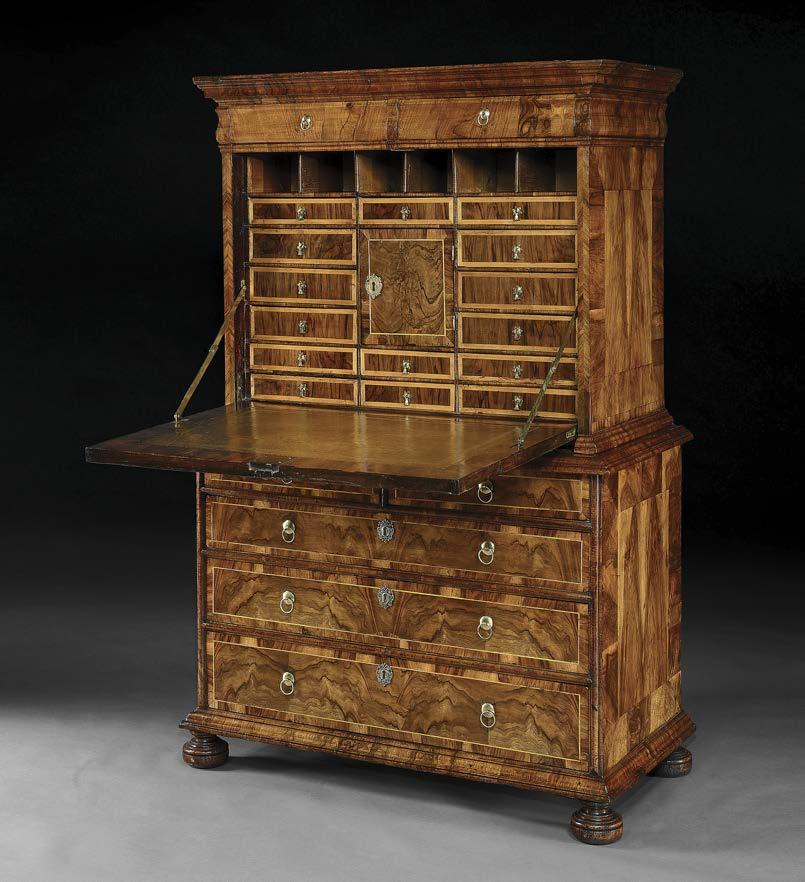
Superbly figured walnut throughout - great colour. Plenty of secret drawers!
Height: 64¾ in (164 cm)
Width: 44½ in (113 cm)
Depth: 22¾ in (58 cm)
MACKINNON FINE FURNITURE 22

23
A PAIR OF CHINESE LACQUER PANELS
China, circa 1820
A magnificent pair of large early 19th century Chinese black and gold lacquer panels, profusely decorated with traditional garden and landscape scenes with mountains, trees, figures, pavilions and terraces, held in superb carved giltwood frames with ivory coloured craquelure inserts.
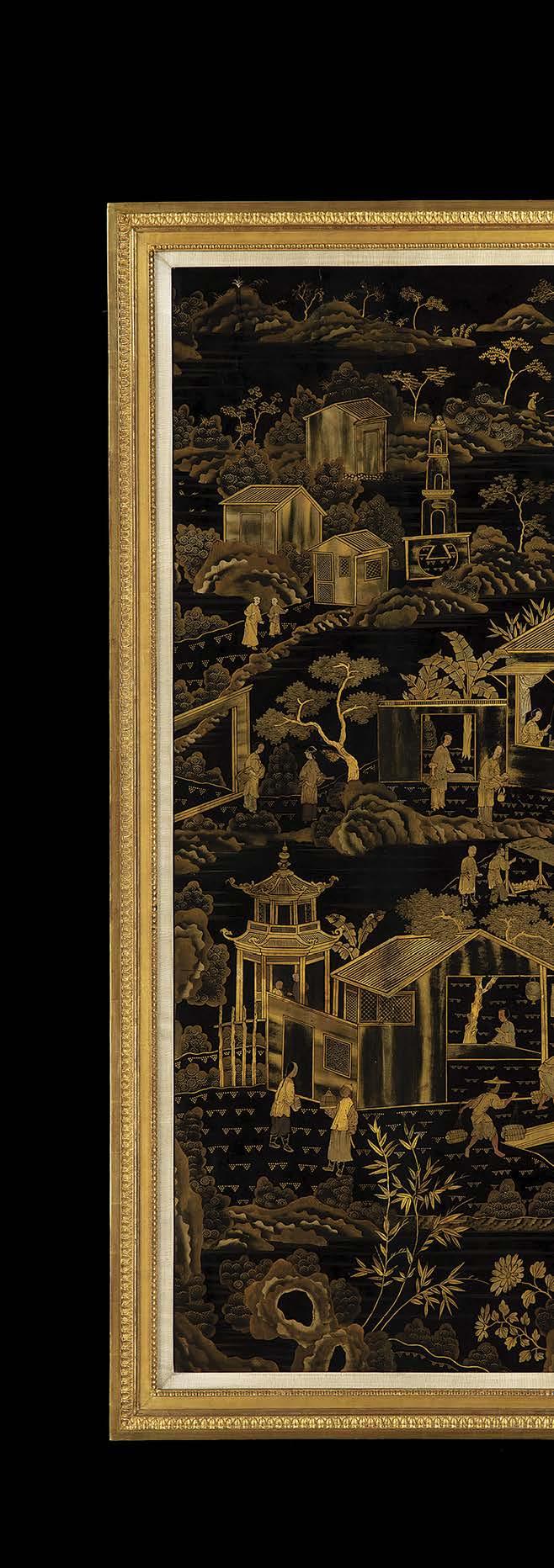
Height: 72¾ in (185 cm)
Width: 41¼ in (105 cm)
Depth: 2¾ in (7 cm)
MACKINNON FINE FURNITURE 24

25
A REGENCY ROSEWOOD WRITING TABLE
In the manner of John McLean England, circa 1820
A fine Regency rosewood writing table of small scale. The rounded rectangular cross-banded top with a gilt tooled inset writing leather above two true and two false opposing drawers with lion head handles. The rectangular end supports united by a high stretcher and each with outswept legs terminating in brass box caps and castors.
Height: 28¾ in (72 cm)
Width: 38¼ in (98 cm)
Depth: 23¾ in (60 cm)
Literature
C. Gilbert, The Pictorial Dictionary of Marked London Furniture 1700 – 1840, 1996, pp. 312-316
John McLean
John McLean (1770-1825), of Upper Marylebone High Street, was one of the preeminent cabinetmakers during the Regency period. His firm secured commissions from some of the greatest patrons of their day, including the 5th Earl of Jersey for Middleton Park, Oxfordshire and his London residence in Berkeley Square, as well as Edward Lascelles for Harewood House, Yorkshire. Thomas Sheraton featured one of McLean’s designs for a table in his The Cabinet-Maker and Upholsterer’s Drawing Book (1803) and noted, ‘The design on the left hand was taken from one executed by Mr. M’Lean in Mary-le-bone street, near Tottenham court road, who finishes these small articles in the neatest manner’. Several pieces of furniture made by McLean retain the firm’s original trade labels affixed to the inside of drawers.
McLean’s work, in the Regency neo-classical taste, can be typically characterised by the use of the finest rosewood veneers together with lacquered gilt-brass mounts. The combination of the rich darkness of the rosewood and the gilded detailing provided an attractive and striking contrast. The lion mask handles are also typical of his work.
MACKINNON FINE FURNITURE 26

27
A SET OF EIGHT WALNUT SIDE CHAIRS
England or Ireland, circa 1720
A highly important set of eight George I walnut side chairs. The shaped rectangular herringbone inlaid vase splat backs each with foliate carved stiles surmounted by a floral and foliate carved cresting, above a drop-in seat covered with 18th century floral needlework panel, on acanthus carved cabriole legs joined by stretchers and terminating in carved lion paw feet.
Wonderful depth of carving throughout.
Height: 40½ in (103 cm)
Width: 24 in (61 cm)
Depth: 22¾ in (58 cm)
Provenance
Mildred and Robert Wood Bliss (1875 – 1962), Dumbarton Oaks, USA
Gifted to Harvard University
Acquired together with a matching settee by French & Company, 13th June 1962,
Acquired by Mr. Nelson M. Davis in 1968
With Mallett, London Private Collection, UK
Christie’s London, Important English Furniture, 20 November 1986, lot 153
With Mallett, London
Thence by descent to the owners of Downton Estate, Shropshire Private Collection, UK
Literature
French & Company stock book ref: E-534/51228-X, held by the Getty Institute Research Library, Los Angeles, California
L. Synge, Chairs in Colour, 1978, pl. 23
L. Synge, Mallett - Great English Furniture, 1991, p. 48 pl. 39 and p. 51 pl. 46
F.L. Hinckley, Masterpieces of Queen Anne and Georgian Furniture, New York, 1991, pl. 2, fig. 5
MACKINNON FINE FURNITURE 28

29
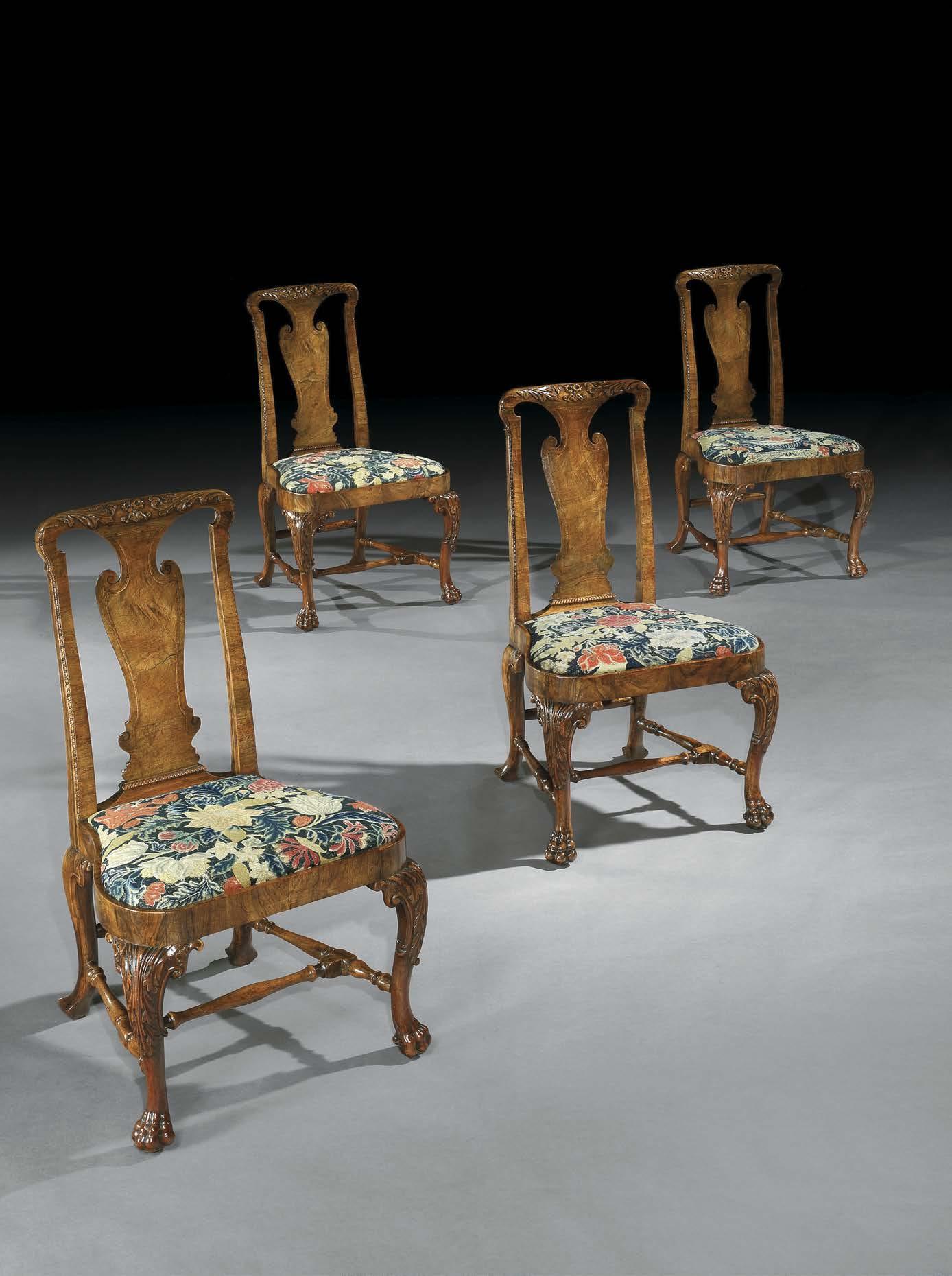
MACKINNON FINE FURNITURE 30

31
This exceptional set of chairs was formerly in the collection of Mildred and Robert Wood Bliss. They purchased Dumbarton Oaks (then called The Oaks) in 1920 and embarked on a full renovation of their new home. The chairs appear in photographs of the First Floor Gallery taken by the photography studio of Lewis P. Woltz of Washington D.C. sometime between 1933 and 1939.
Robert Bliss served in the Diplomatic Corps, receiving posts in Europe and South America, and it was mainly on these diplomatic postings that they added to their collections. However, there is no record of this purchase which may suggest that the suite may have come from Mrs. Bliss’s mother’s estate, Casa Dorinda in Montecito, California in 1935. In 1940, Dumbarton Oaks, its collections and gardens were gifted by the Blisses to Harvard University at which time much of the household furnishings were sold, and many pieces, including these chairs, were consigned to French & Company of New York.
The general form of the back with its foliate scrolls and horizontal joints feature on a chair illustrated on a 1740s tradecard of Landall and Gordon (ref: A. Heal, The London Furniture Makers, p. 93). This type of splat was found on chairs that Cescinsky referred to as ‘Hogarth’. A chair with a similar splat from the collection of Sir John Ramsden is illustrated in R. Edwards, ed., The Shorter Dictionary of English Furniture, London, 1974, p.137, fig.80. Another is illustrated in H. Cescinsky, English Furniture from Gothic to Sheraton, New York, 1937, p.164.
These distinctive chairs exhibit an unusual combination of features which do not appear to be clearly identifiable with the work of a particular maker or region. Whilst the idiosyncratic paw feet have affinities with those on a documented group of Irish tables and chairs (The Knight of Glin and James Peill, Irish Furniture, 2007, pp. 106-119), the scrolls to the inside of the paws are without parallel in this most recent survey of Irish furniture. Furthermore, the turned and square H-shaped stretchers contrast with the more prevalent flat H-shaped stretchers found on Irish chairs of the second quarter of the 18th century. Other atypical details include the herringbone bandings on the splats, the finely carved foliate mouldings surrounding the backs and the gadrooned splat shoes.

MACKINNON FINE FURNITURE 32
Above: The matching settee sold Christie’s New York, Important English Furniture, 18 October 2001, lot 333 ($84,600) © 2001 Christie’s Images Limited Right: The interior of Dumbarton Oaks, showing the suite of chairs in situ © Dumbarton Oaks, Archives, Washington, DC.

33
A GEORGE II MAHOGANY SIDE CHAIR
Attributed to Wright & Elwick England, circa 1755
A rare George II Chippendale period carved mahogany side chair, attributed to Wright & Elwick. The serpentine seat and back upholstered and close-nailed, with finely carved scrolled mahogany seat frames, the legs carved with bound acanthus leaf decoration to the knees and cabochons with further acanthus to the inverted scroll feet.
The mahogany of particularly good colour and patina throughout.
Height: 37 in (94 cm)
Width: 25¾ in (65 cm)
Depth: 24¾ in (63 cm)
Literature
E. Lennox-Boyd, The Wentworth Cabinet-Maker: Wright and Elwick, Christie’s London, 8 July 1998, pp. 110 -112
M. Hall, ‘Powis Castle’, Country Life, 21 October 1993, p. 891, figs. 5 - 6
D. Fennimore et al., The David and Peggy Rockefeller Collection: Decorative Arts, New York, 1992, vol. IV, p. 284, no. 291
S. Goodman, “The 9th Earl of Lincoln (1720 - 1794) and the refurbishment of Exchequer House, 10 Downing Street”, The British Art Journal, Winter 2017/2018, pp. 3 - 7
This finely carved side chair relates particularly closely to three suites of documented seat furniture; from Hackwood Park, Wentworth Woodhouse and Powis Castle respectively. These suites include sofas, armchairs, side chairs and stools.
The Wentworth suite was supplied by the celebrated Yorkshire cabinet-makers Wright & Elwick to Charles, 2nd Marquess of Rockingham (d. 1782). The firm of Wright & Elwick provided a significant amount of furniture for Wentworth Woodhouse during the 1750s and 1760s.
A second suite was supplied by Wright & Elwick to the 5th Duke of Bolton (d. 1765) for either Hackwood Park, Hampshire or the family’s Yorkshire residence, Bolton Hall. The suite does not appear in any 18th century inventories for Hackwood Park, which suggests that these chairs were originally supplied to Bolton Hall – the proximity of location in Yorkshire again making this more likely. The chairs do appear in a 1905 Hackwood Park inventory – likely they had been relocated to Hackwood after a devastating fire at Bolton Hall. The 1905 inventory of Hackwood by Hampton & Sons refers in the Saloon to: ‘The finely carved mahogany Old English suite with shaped seats and backs on cabriole legs & upholstered in crimson flowered cretonne comprising: ‘3 armchairs, 4 ‘occasional’ chairs, and 2 ‘24 in shaped stools’ en suite’. Much of the furniture remained at Hackwood after William Berry, 1st Viscount Camrose purchased the estate in 1935. Three of the side chairs were included in the Hackwood Park House Sale, Christie’s 20-22 April 1998, lots 119-120: lot 119 a pair in solid mahogany (£43400) and lot 120 a single chair with beech side rails inscribed ‘Bolton’ (£7475).
A further suite of this pattern, comprising settees, armchairs and side chairs was likely to have been commissioned by Henry Herbert, 1st Earl of Powis (d. 1772) for Powis Castle, Wales or Oakly Park, Shropshire. Herbert employed the Cheshire architect William Baker (d. 1771) to carry out improvements on both properties in the 1750s. The National Trust attributes these to the manner of Paul Saunders (1722 – 1771) or William Bradshaw (d.1775) – as they share characteristics with a suite supplied in 1757 to the 1st Earl of Leicester at Holkham Hall, Norfolk by the cabinet-maker, upholsterer and ‘Tapestry Maker to His Majesty’ Paul Saunders.
MACKINNON FINE FURNITURE 34
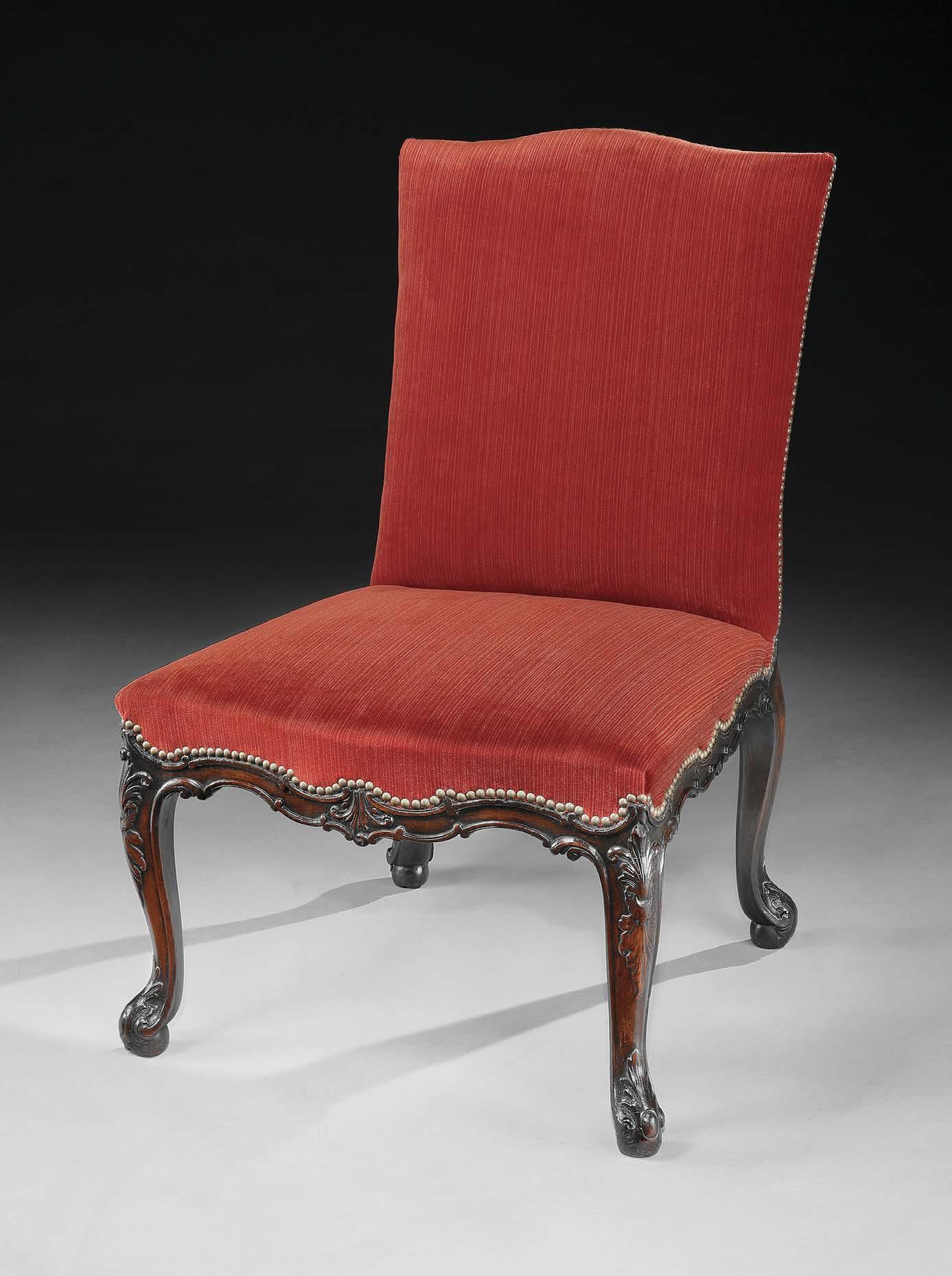
35
A GEORGE III MAHOGANY SECRETAIRE CABINET
England, circa 1761
An exceptional and important George III Chippendale ‘Director’ period mahogany secretaire cabinet on stand. The pierced fretwork gallery above a pair of hinged panelled doors opening to reveal a fully fitted interior of drawers and a pull-out leather lined secretaire, with mirrored central cupboard door flanked by cluster column sides and leaf carved decoration, revealing a further fitted section with small drawers backed by secret compartments, standing on a shallow friezed base with tapering panelled square legs, shaped fish scale carved feet and leaf carved corner brackets.
The mahogany of exceptional colour and patina throughout. Retaining fine ormolu handles with original gilding. This cabinet shares many features included by Thomas Chippendale in his The Gentleman and Cabinet-Makers Director

Inscribed in pencil: ‘Made in London. 1761’
Height: 67¼ in (171 cm)
Width: 41¼ in (105 cm)
Depth: 23¼ in (59 cm)
MACKINNON FINE FURNITURE 36
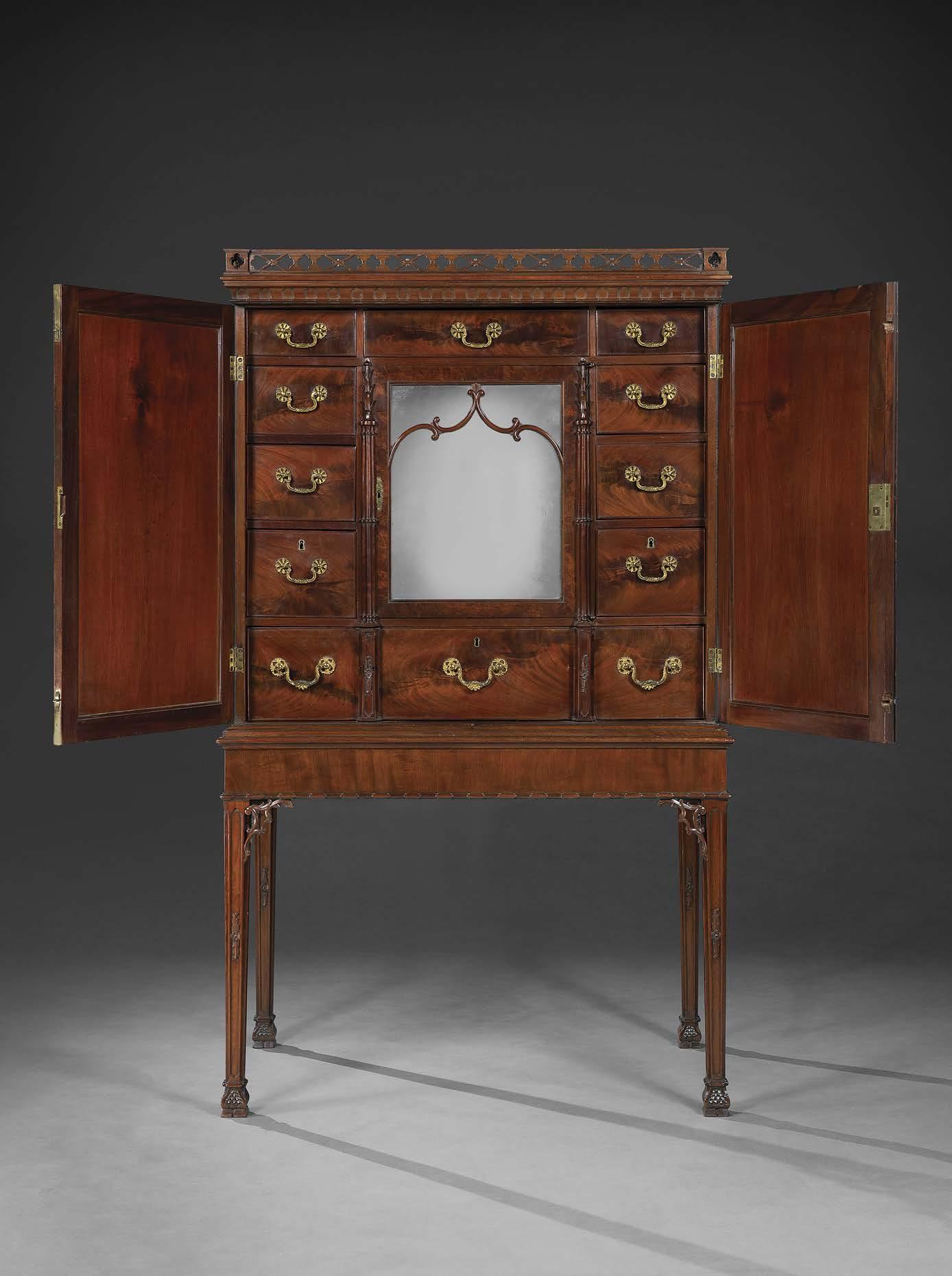
37
A PAIR OF GEORGE II PARCEL GILT MIRRORS
England, circa 1740
A rare pair of George II parcel gilt and walnut architectural pier glasses. Each with their original rectangular bevelled mirror plate surmounted by a gilded swan neck pediment with carved acanthus detailing flanking an elaborate gilt gesso cartouche.
Provenance
Originally commissioned by and retained in the ownership of the same Old English landed family until now.
Height: 50¼ in (128 cm)
Width: 27½ in (70 cm)
MACKINNON FINE FURNITURE 38

39
A GEORGE III MAHOGANY PIECRUST TABLE

England, circa 1760
An extremely fine and beautifully patinated George III Chippendale period mahogany tripod table with a piecrust tilttop, raised on a turned baluster stem with a spiral knop and elegantly drawn cabriole legs crisply carved with acanthus leaves and ending in pad feet.
Superb colour and patination throughout.
Height: 27½ in (70 cm)
Diameter: 26 in (66 cm)
Provenance
With Norman Adams, Knightsbridge (2000) Private Collection, England
MACKINNON FINE FURNITURE 40
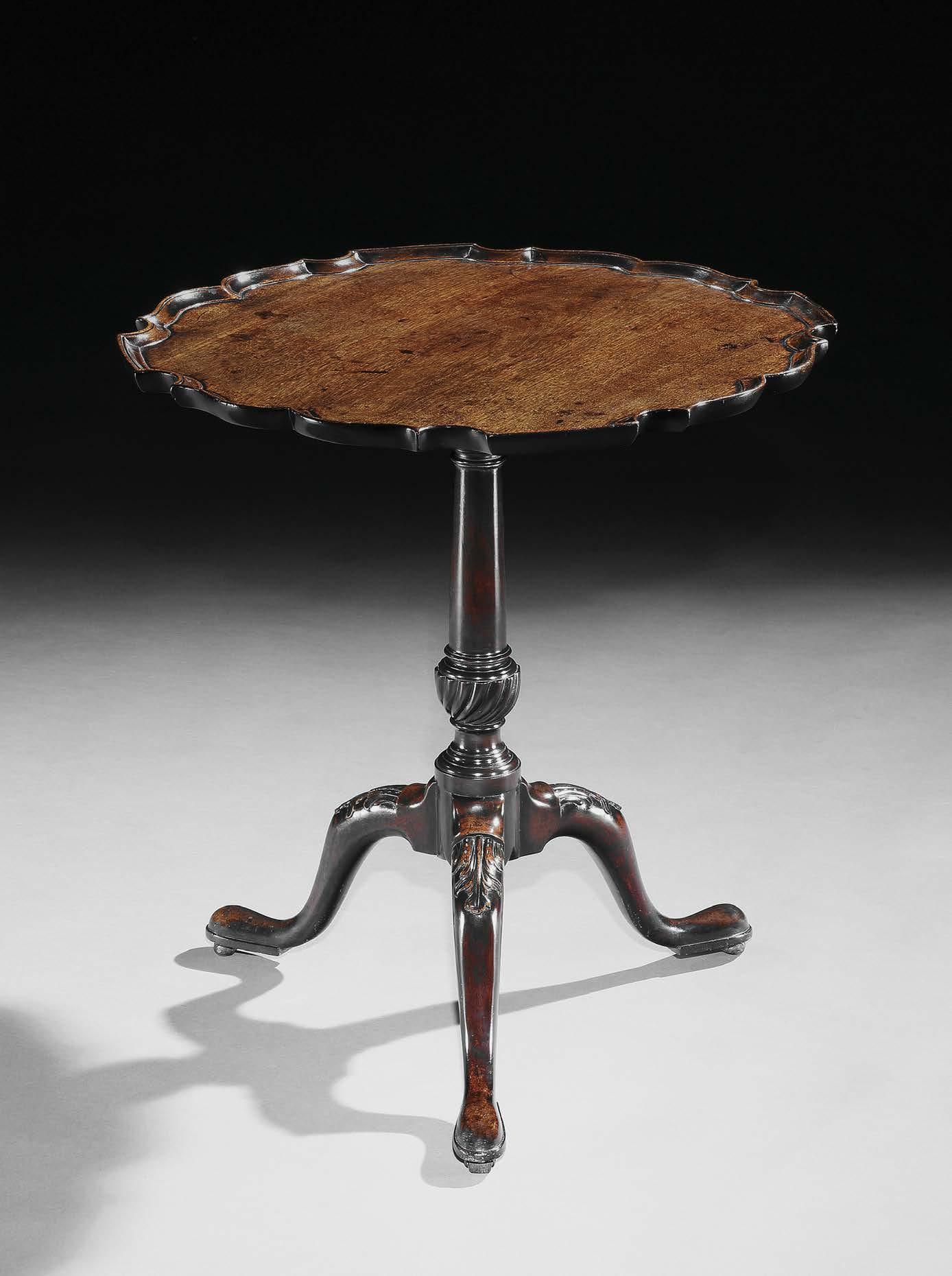
41
A GEORGE II GILT GESSO MIRROR
England, circa 1730
A very fine George II carved giltwood and gilt gesso pier mirror. The original bevelled rectangular mirror plate within a foliate and strapwork border against a finely punched ground, surmounted by a cartouche within a broken pediment, with a shaped apron centred by a stylised scrolled shell, with brass candle arms.
Height: 52¼ in (132.5 cm)
Width: 30¾ in (78.5 cm)
MACKINNON FINE FURNITURE 42
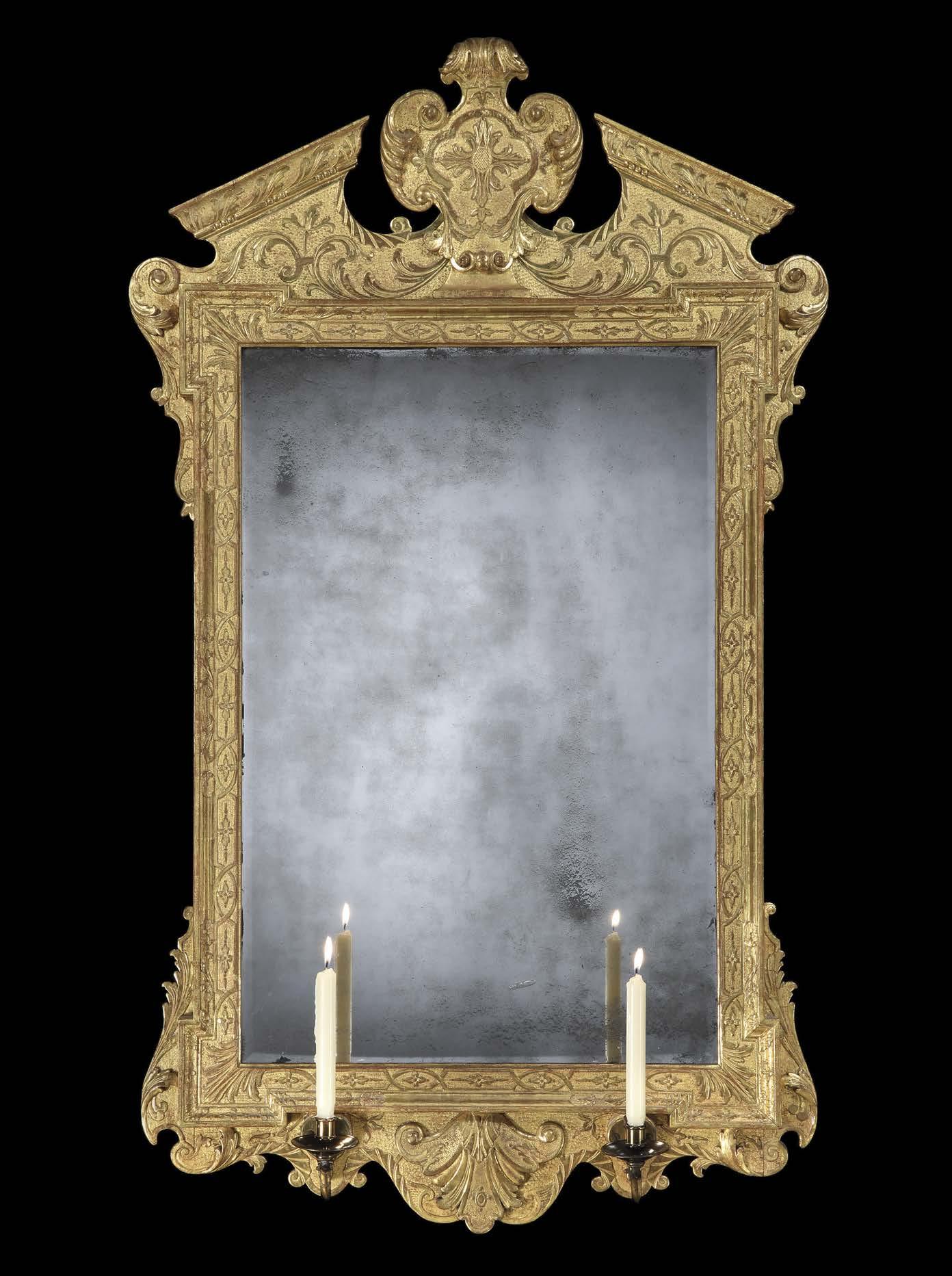
43
THE MARQUESSES OF TOWNSHEND
A GEORGE III BEDSIDE TABLE
An exceptional and extremely rare George III mid 18th century Chippendale period chinoiserie bedside table. Of rectangular form with a panel top with asymmetrical pierced galleries, with latticework sides and standing on pierced square tapering legs. On castors.
The mahogany of superb colour and patina throughout.
With ‘Balls Park’ and ‘Raynham Hall’ inventory labels to the underside.
Height: 24¾ in (63 cm)
Width: 19½ in (49.5 cm)
Depth: 14¼ in (36 cm)
Provenance
Balls Park and Raynham Hall - the collections of the Marquesses of Townshend

With Phillips of Hitchin (illustrated in their catalogue and archive)
Private Collection, UK
Literature
Michael Ridghill, Raynham Hall - An English Country House Revealed, Woodbridge, 2008, pp. 55 and 106
Probably by Thomas Chippendale England, circa 1765
MACKINNON FINE FURNITURE 44
Raynham Hall
Credit: Country Life / Future Publishing Ltd
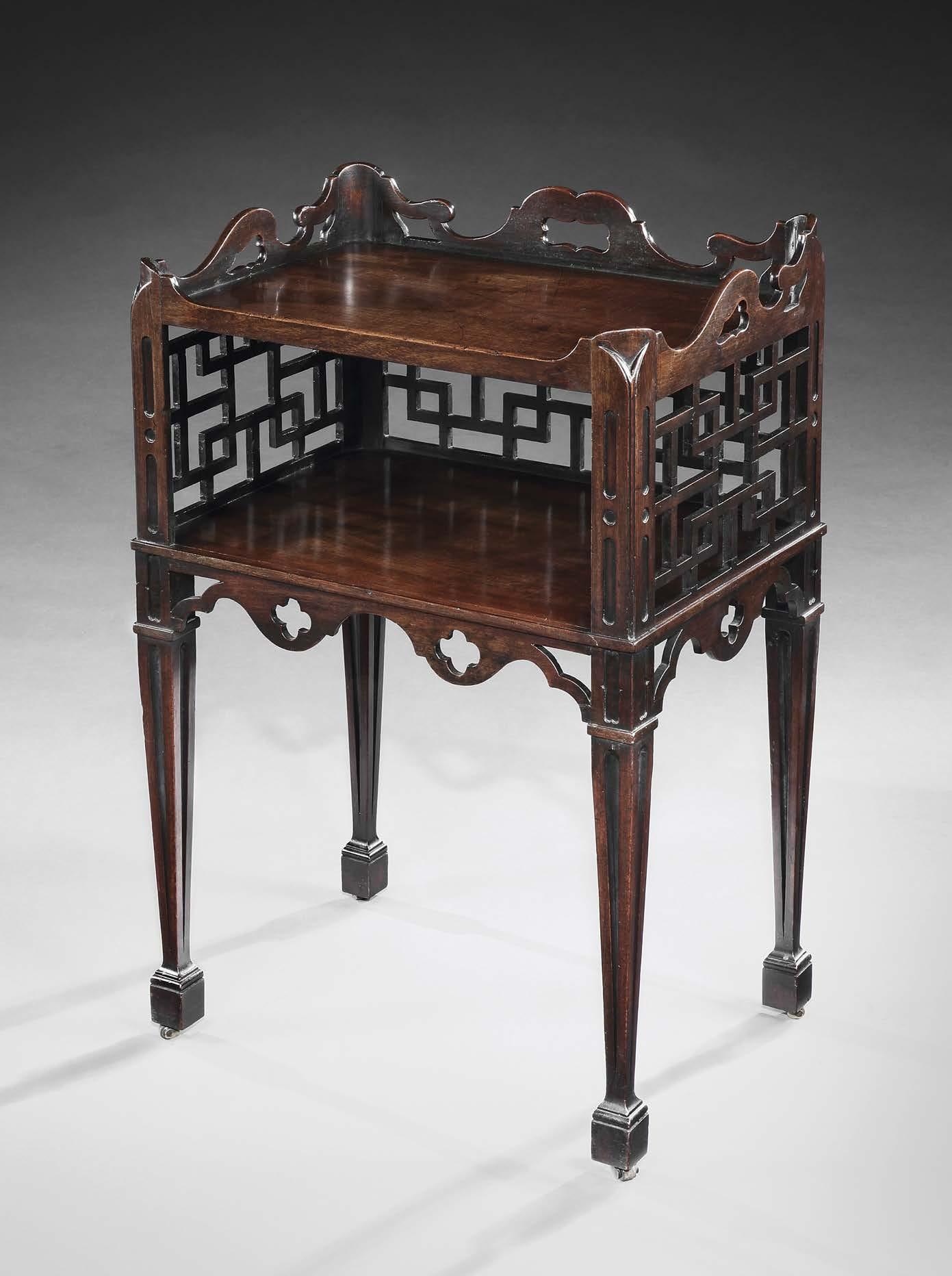
45
A GEORGE III SERPENTINE CHEST OF DRAWERS
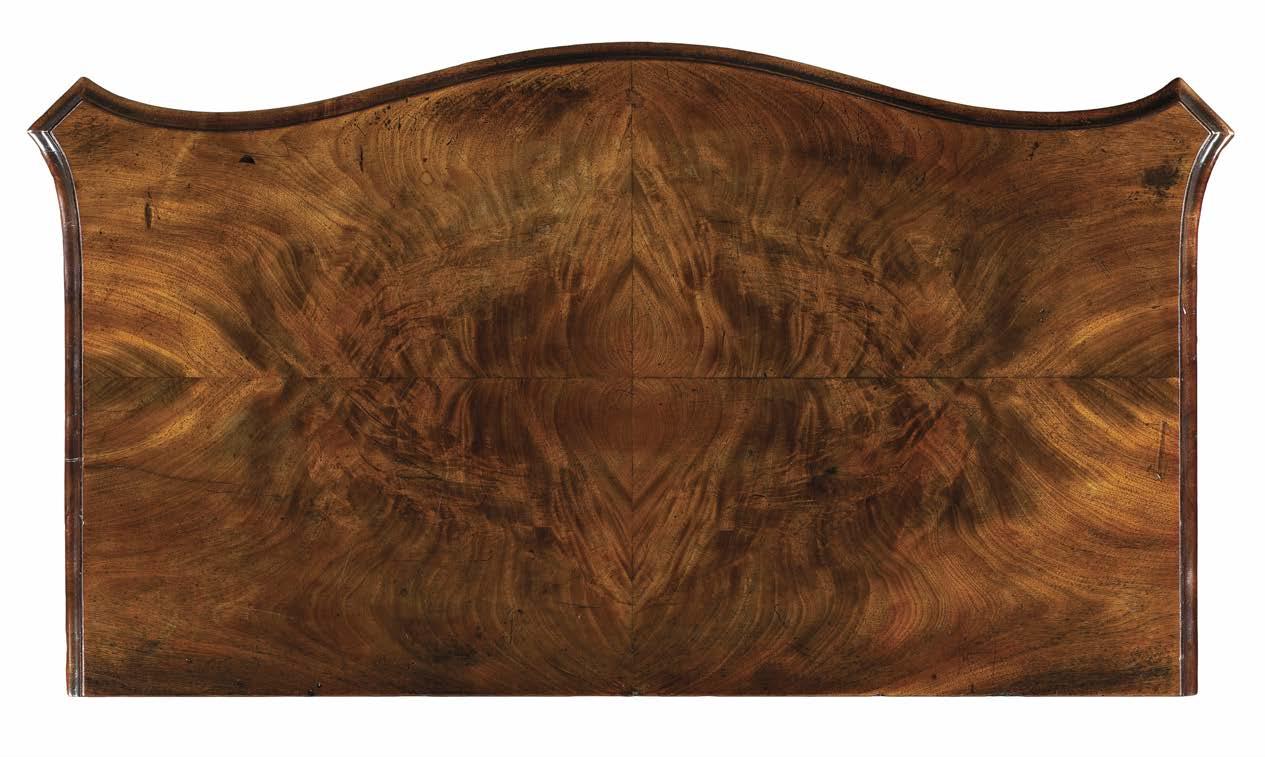
An exceptional George III Chippendale period mahogany serpentine-fronted chest of drawers, with quarter-veneered top, canted corners carved with entwined laurel leaves, four crossbanded graduated long drawers, a baize-lined brushing slide to the top drawer, with original gilt brass handles and shaped bracket feet.
Outstanding colour and patina throughout.
Height: 33½ in (85 cm)
Width: 41¼ in (105 cm)
Depth: 22¼ in (56.5cm)
Provenance
With Jeremy Ltd., Belgravia Private Collection, UK
This exceptional serpentine chest of drawers relates very closely to one from the celebrated Blackwell collection, which was most recently sold at Christie’s London, Thomas Chippendale – 300 Years, 5 July 2008, lot 13 (£137,500), and a further example in the collections at Dumfries House. The pattern of the handle and escutcheon is typical of Chippendale’s documented furniture, as seen on a mahogany serpentine chest of drawers dated 1774 supplied to Ninian Home at Paxton, and another in the dressing room of Lady St. Oswald’s bedroom at Nostell Priory, Yorkshire.
Probably by Thomas Chippendale England, circa 1765
MACKINNON FINE FURNITURE 46

47
A GEORGE III SATINWOOD BREAKFRONT CABINET
England, circa 1770
An important and very rare George III Chippendale period satinwood, amaranth and marquetry breakfront secretaire cabinet. The fan-shaped central pediment surmounting an upper section consisting of a central cabinet enclosed by two glazed doors and two side cabinets with glazed panel doors, the lower section with a central secretaire drawer containing an arrangement of drawers and pigeonholes and a gilt-tooled leather surface, above two panel doors enclosing three marbled-paper lined trays, flanked by two side banks of four drawers, on a plinth base.
The satinwood of superb colour and figuring throughout.
Height: 99¼ in (252 cm)
Width: 85¾ in (217. 5 cm)
Depth: 20¾ in (53 cm)
Provenance
With Sidney Letts Esq., by 1923
The collection of Mr. R. G. Hobson, 1 Bedford Square London, by 1932 With Mallett, London
Anonymous sale, Christie’s London, 25 June 1981, lot 112
A Distinguished Private Collection, sold Sotheby’s New York, 26 October 2012, lot 297
Literature
Country Life, “London Houses of the XVIIIth Century - No.1 Bedford Square - the Residence of Mr. G. D. Hobson, M.V.O.”, 6 February 1932, pp. 150 – 156
Country Life, “Late Georgian Furniture”, 8 July 1933, the bookcase prominently described
M. Jourdain, English Decoration and Furniture of the Later XVIIIth Century, (1760-1820), London, 1923, fig. 401
L. Synge, Mallett’s Great English Furniture, Toronto, 1991, p.130, fig.147
Apollo Magazine, 1975 - Mallett advertisement
Country Life, 10 July 1975 - Mallett advertisement
Beard and Goodison, English Furniture 1500 - 1840, p. 229, fig. 4
This superlative cabinet shares features associated with both the leading 18th century cabinet-making firms of Ince & Mayhew and Thomas Chippendale. Of particular note are the wreathed swags immediately below the central half-fan cresting which is repeated in Thomas Chippendale’s documented pieces supplied to Lord Lascelles at Harewood House and to the Ibbetson family at Denton Hall. The inlaid flower swirl paterae and the marbled paper lined trays are also features associated with Chippendale’s workshop.
MACKINNON FINE FURNITURE 48
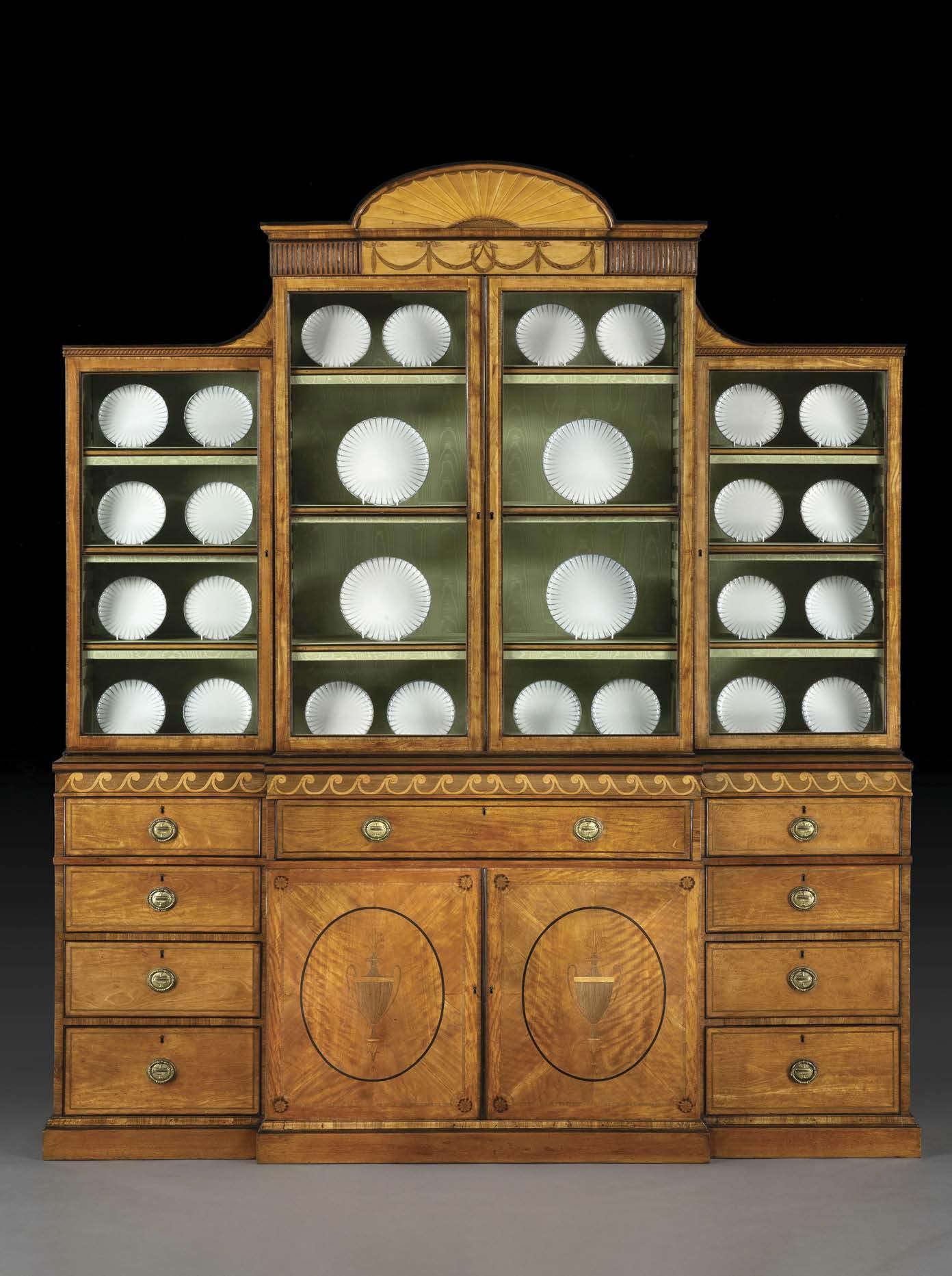
49
A CHARLES I CARVED OAK TRUNK

England, dated 1627
A fine Charles I period carved oak chest, initialled TP and dated 1627. With a triple panelled hinged top over a guilloche carved frieze, fern pattern carved panels with arcaded headers and a cushion moulded drawer, on carved stile supports. The central panel with heraldic armorial between carved initials. The sides with large carved floral roundels between carved initials TP and dated 1627 and a continued moulded edge.
Superb colour and patination throughout.
Height: 29¼ in (74 cm)
Width: 50 in (127 cm)
Depth: 24 in (61 cm)
MACKINNON FINE FURNITURE 50
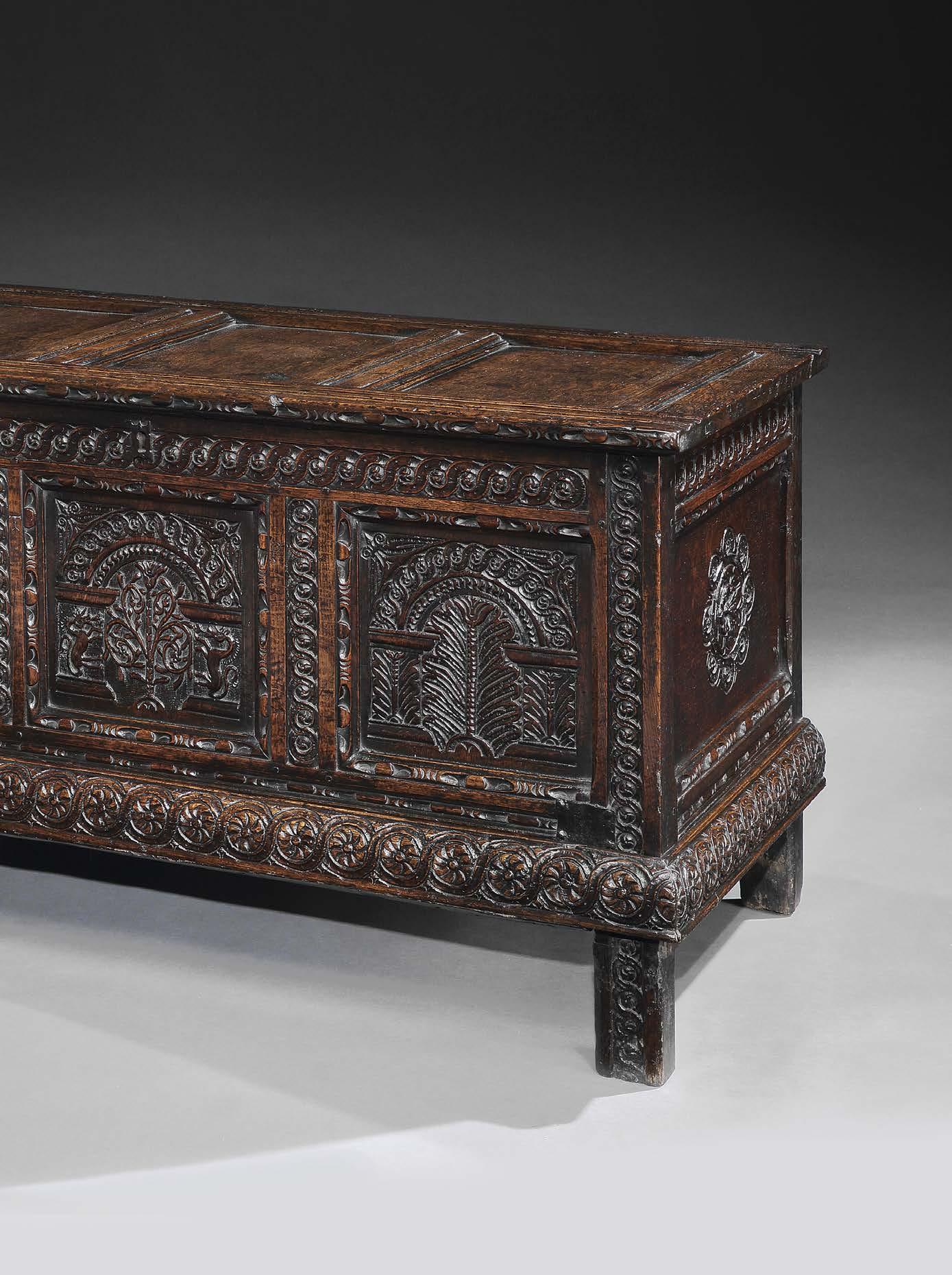
51
A GEORGE III ROSEWOOD SOFA TABLE

Attributed to Gillows of Lancaster & London England, circa 1800
A very fine George III rosewood and crossbanded sofa table attributed to Gillows of Lancaster and London. Of superb colour and patina throughout. The beautifully figured top with dropdown leaves, above two frieze drawers, supported on splayed end supports joined by a high arched stretcher. The reverse with false drawers. The feet terminating in brass box castors.
Height: 28 in (71 cm)
Width: 61¾ in (157 cm) open
Depth: 28 in (71 cm)
Literature
Susan E. Stuart, Gillows of Lancaster and London 1730 - 1840, pp. 264-267
A pair of closely related rosewood sofa tables was supplied by Gillows of Oxford Street to Stephen Tempest of Broughton Hall in 1803. They were invoiced as: ‘....2 large rosewood sofa tables with drawers in do. and on claw & castors 14 gns. 29-8-0d’.
In 1801, Gillows first introduced the sofa table, a new design specifically to be placed besides a sofa, into their Estimate Sketch Book. They advised their client Lady Gardiner of Clerk Hill ‘the most fashionable form now used are what we call sofa tables’ and enclosed a drawing to show how ‘the 2 leaves fall down like a Pembroke table’. Sofa tables could be adapted to suit many purposes - for example as games, tea and writing tables. The fitted knob handles were supplied either in ivory, brass or exotic woods.
MACKINNON FINE FURNITURE 52

53
THE KNOWSLEY HALL ARMCHAIRS
A PAIR OF GEORGE II ROCOCO ARMCHAIRS
After a design by Matthias Lock England, circa 1755
A highly important pair of large mid 18th century George II period rococo giltwood armchairs. After a design by Matthias Lock, the serpentine top rails with foliate enclosed cabochon crestings above cartouche shaped, upholstered backs with leaf and ‘C’ scroll carved mouldings, the upholstered arm rests with accentuated outward scrolling hand rests, the serpentine seat rails with leaf and stylised shell decoration and raised on foliate carved cabriole legs terminating in scroll toes.
Height: 42¼ in (107 cm)
Width: 31¾ in (80.5 cm)
Depth: 30¼ in (76.5 cm)
Provenance
Presumably supplied to Edward, 11th Earl of Derby (1689 - 1776) for Knowsley Hall, Lancashire
Thence by descent at Knowsley Hall
With Mallett, London, 1963
Acquired from Mallett in 1964 by John Fowler for Notley Abbey
With Mallett, London, 2005 Private Collection, France
Literature
‘Knowsley, Lancashire’, Country Life, 12 July 1913, p. 56 (illustrated)
C. Hussey, ‘Knowsley Hall, Lancashire’, Country Life, 12 March 1937, p. 280
Connoisseur, October 1963, p. XVIII advertised with Mallett
M. Binney, ‘Floors Castle, Roxburghshire - II’, Country Life, 18 May 1978, p. 1372
C. Aslet, ‘Titania’s kingdom (Floors Castle, Kelso, Roxburghshire)’, Country Life, 23 April 2014, pp. 56-61
Mallett, Mallett Catalogue, 2005, pp, 42 - 44
These magnificent armchairs are amongst the grandest known examples of mid 18th century English seat furniture conceived in the French ‘Rococo’ taste. Of particularly generous bold proportions and having broad, cartouche shaped backs, they are robust and yet their lines are sinuous and flowing throughout, the wonderful downward and outward scroll of the arm being particularly well accentuated. Their form is derived from French fauteuils à la reine of the Louis XV period, the ‘picturesque’ style interpreted so eloquently by Thomas Chippendale in his Gentleman and Cabinet-Maker’s Director. Chippendale used the image of one of his ‘French chairs’ on his own trade label, highlighting such designs as the epitome of sophisticated fashionable taste.
The closest known design for this particular chair was by the master carver and designer Matthias Lock, who drew it for the artist Richard Cosway. The original rendering, circa 1755, is preserved in the Victoria & Albert Museum as part of the Lock collection of drawings. The collection also includes some drawings by Chippendale, with whom Lock is believed to have had a working relationship.
These chairs were part of a suite most likely commissioned by the 11th Earl of Derby for Knowsley Hall, near Liverpool. Originally a medieval hunting lodge, Knowsley was extensively remodelled by the 11th Earl in the 18th century. To this day, the family remain in residence and the house contains a notable collection, including a pair of these chairs. The remainder of the suite of seat furniture appears to have been dispersed, and six can be seen today in the collections of the Dukes of Roxburghe at Floors Castle, Roxburghshire.
MACKINNON FINE FURNITURE 54

55

MACKINNON FINE FURNITURE 56
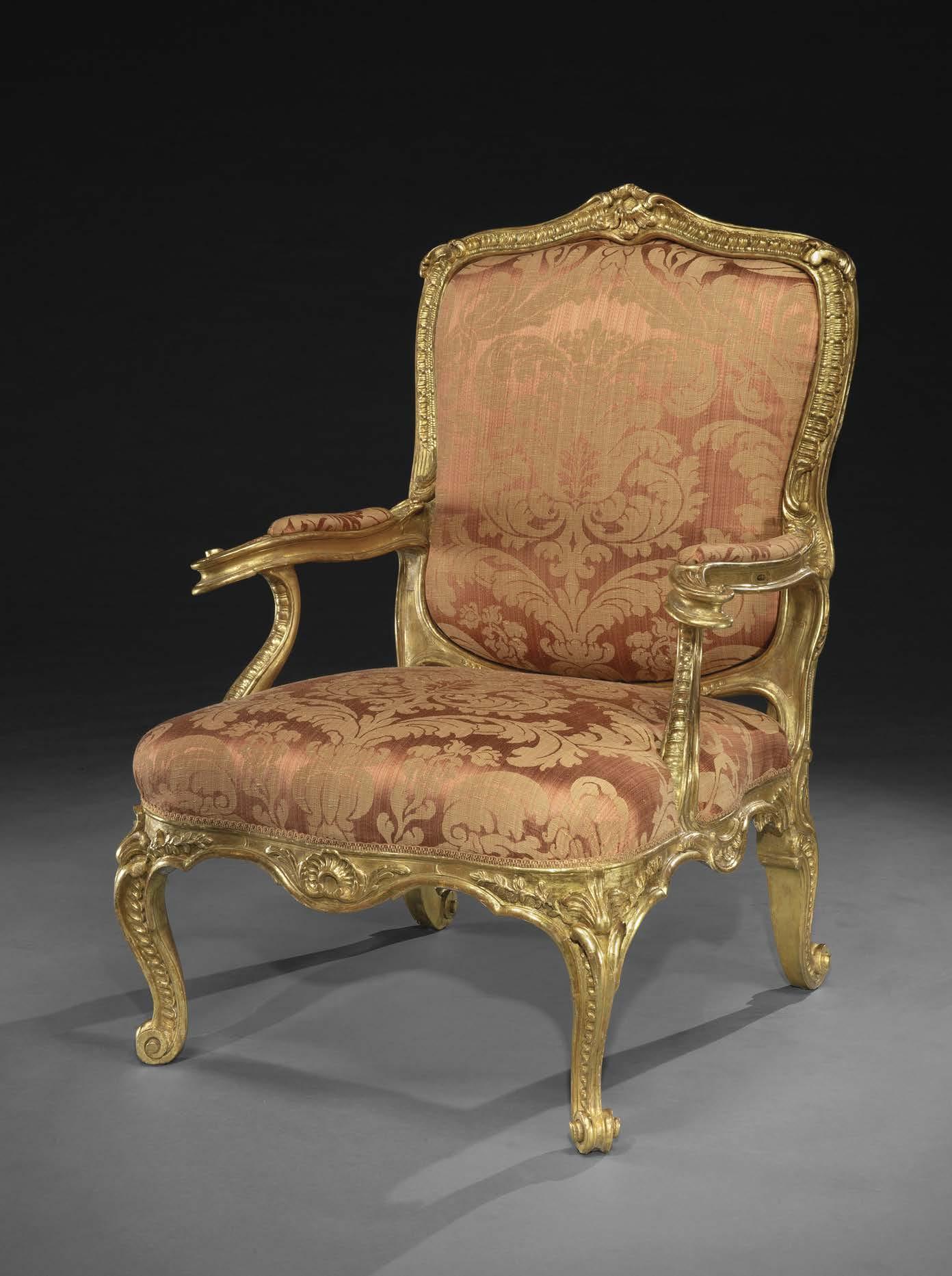
57
A GEORGE III MAHOGANY STOOL
An exceptionally fine George III Chippendale period mahogany X-frame stool, the slightly concave seat with wonderfully thin profile, the frame carved with superbly detailed paterae and central foliate decoration.
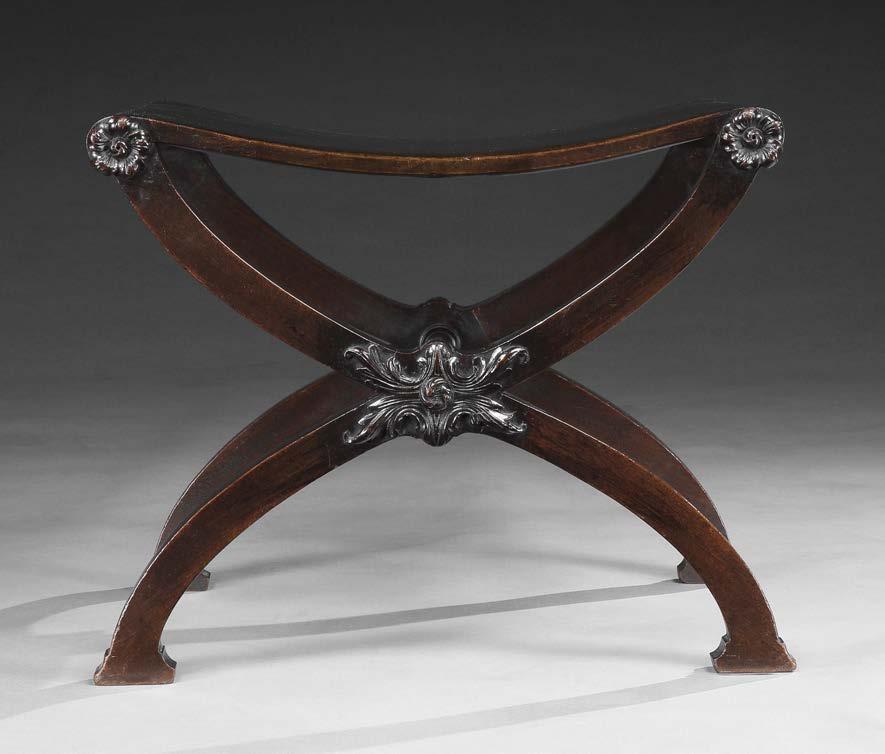
With outstanding colour and patination.
Height: 16¾ in (43 cm)
Width: 20¾ in (53 cm)
Depth: 16¾ in (43 cm)
A very closely related stool from the collections of the Dukes of Northumberland, Syon House is illustrated in The Dictionary of English Furniture, vol. III, p. 182, fig. 69 and E. Harris, The Furniture of Robert Adam, 1963, p. 13.
Possibly by Thomas Chippendale England, circa 1770
MACKINNON FINE FURNITURE 58

59
A PAIR OF GEORGE III MAHOGANY CARD TABLES

England, circa 1780
A fine pair of George III period mahogany D-shaped card tables, each with satinwood crossbanded fold-over tops, enclosing a green baize playing surface, on square tapering legs.
The mahogany of particularly fine colour throughout.
Height: 29¼ in (74 cm)
Width: 36¼ in (92 cm)
Depth: 17 in (43.5 cm)
Provenance: With Mallett, London Private Collection, London
MACKINNON FINE FURNITURE 60

61
A GEORGE III SECRETAIRE COMMODE
In the manner of William Gomm England, circa 1765
A very fine and rare George III Chippendale period mahogany secretaire-dressing commode of exceptional scale and quality. The shaped serpentine cross-banded top with acanthus carved leading edge, with canted corners carved with impressive scrolls and acanthus leaves, the top drawer opening to reveal a fitted secretaire with baize lined writing area, pigeon-holes and small drawers, above three further long graduated drawers, all with gilt bronze handles in the rococo taste. Of very good colour and patina throughout.
Height: 39¼ in (100 cm)
Width: 51¼ in (130 cm)

Depth: 26 in (66 cm)
Literature
Connoisseur, June 1955, ‘A Chippendale Secretaire-Commode’, pp. 256-257 (illustrated)
Connoisseur (as advertised with G. Jetley Ltd of 24 Bruton Street) L. Boynton, ‘William and Richard Gomm,’ The Burlington Magazine, vol. 122, no. 927 (June 1980), pp. 395-402
This magnificent commode was displayed at Temple Newsman House, Leeds in 1951 as part of the exhibition ‘Thomas Chippendale (1718-1779): A Festival of Britain Exhibition’ (ex. no. 88). At the time, Margaret Jourdain, a leading Chippendale scholar, attributed the commode to Thomas Chippendale on the basis of its exceptional craftsmanship and similarities to designs in Chippendale’s Director. Recent scholarship has now allowed us to suggest a more likely attribution to William Gomm.
MACKINNON FINE FURNITURE 62
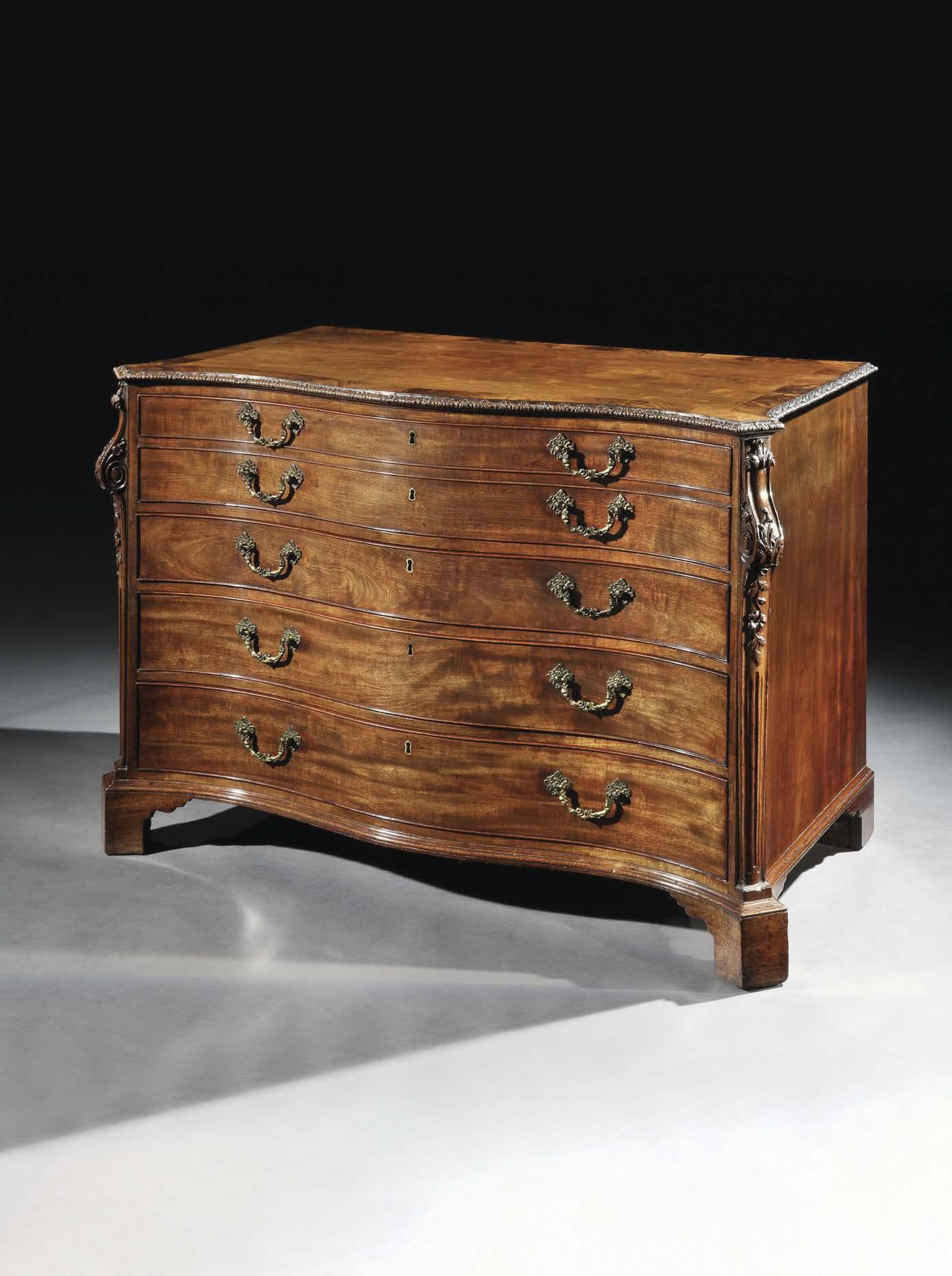
63
THE BOYNTON HALL TABLE
A GEORGE III NEO-CLASSICAL SIDE TABLE
England, circa 1770
A highly important late 18th century Chippendale and Adam period neo-classical mahogany side table, the frieze decorated with applied carvings, the central tablet decorated with winged griffins, their paws resting on rams heads with a central flaming torchere. Flanked on each side with panels embellished with vases, household utensils, bucrania, shields and helmets. The side friezes are carved with husk festoons and sphinx-like heads. The tapering legs are panelled and carved with bands of fluting and the headers carved with urns, terminating in square toes carved with palm leaves. With an exceptional 18th century Italian vari-coloured specimen marble top composed of hexagonal panels with black banded borders.
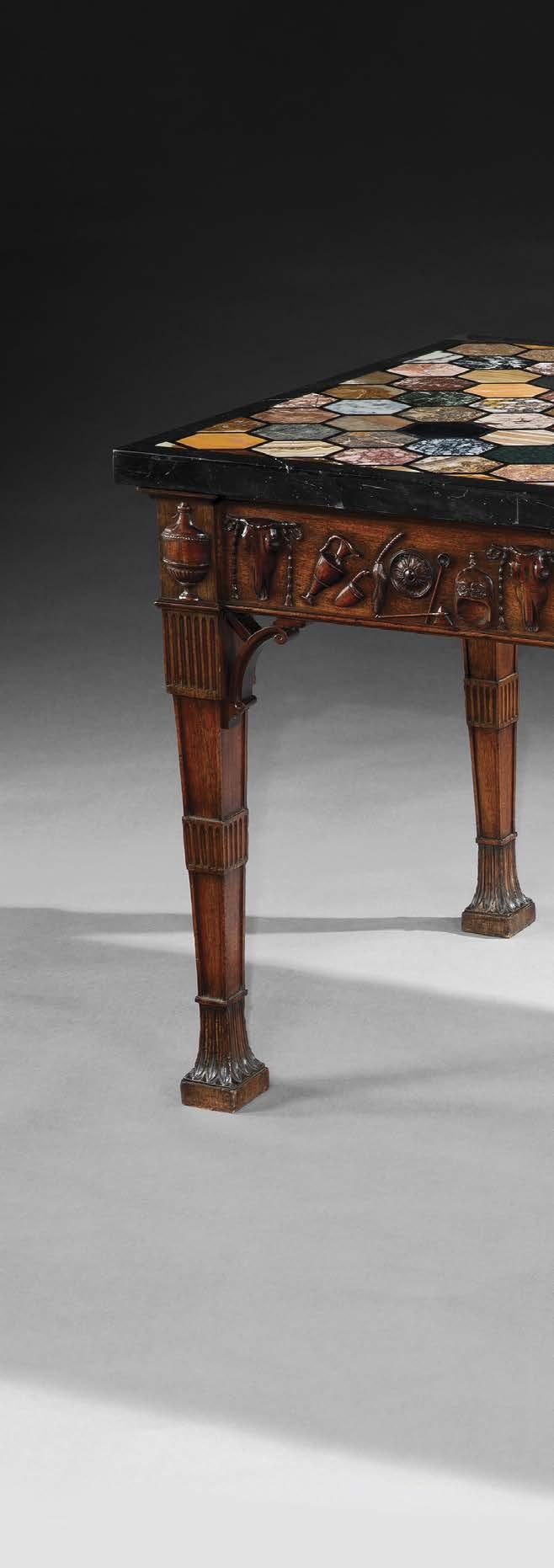
Height: 32¾ in (83.5 cm)
Width: 60 in (152 cm)
Depth: 30 in (76 cm)
Provenance
The collections of the Strickland Family, Boynton Hall Yorkshire Listed in the 1938 Inventory of Boynton Hall: “Adam mahogany side table, the frieze decorated with applied carvings, with centre tablet decorated winged griffins, the paws resting on rams heads with centre flaming torchere. The sides are decorated with vases, household utensils, skeleton masks and paterae. The side friezes are carved with husk festoons and sphinx like heads. The tapering legs are panelled and carved with bands of fluting and the squares carved with urns, terminating in square toes carved with palm leaves. There is a vari-coloured marble top composed of hexagonal panels. 5ft wide by 2ft 6in deep”.
By family descent at Gouray Lodge, Jersey
With Jeremy Ltd., Belgravia London
Sotheby’s New York, The Collection of Mr. and Mrs. Edwin H. Herzog, 12-13 April 1985, lot 335 Private Collection, USA
Related Literature
Arthur Oswald, ‘Boynton Hall, Yorkshire’, Country Life, 22 and 29 July 1954
B. Wragg and G. Worsley, The Life and Works of John Carr of York, 2000, p. 119
MACKINNON FINE FURNITURE 64
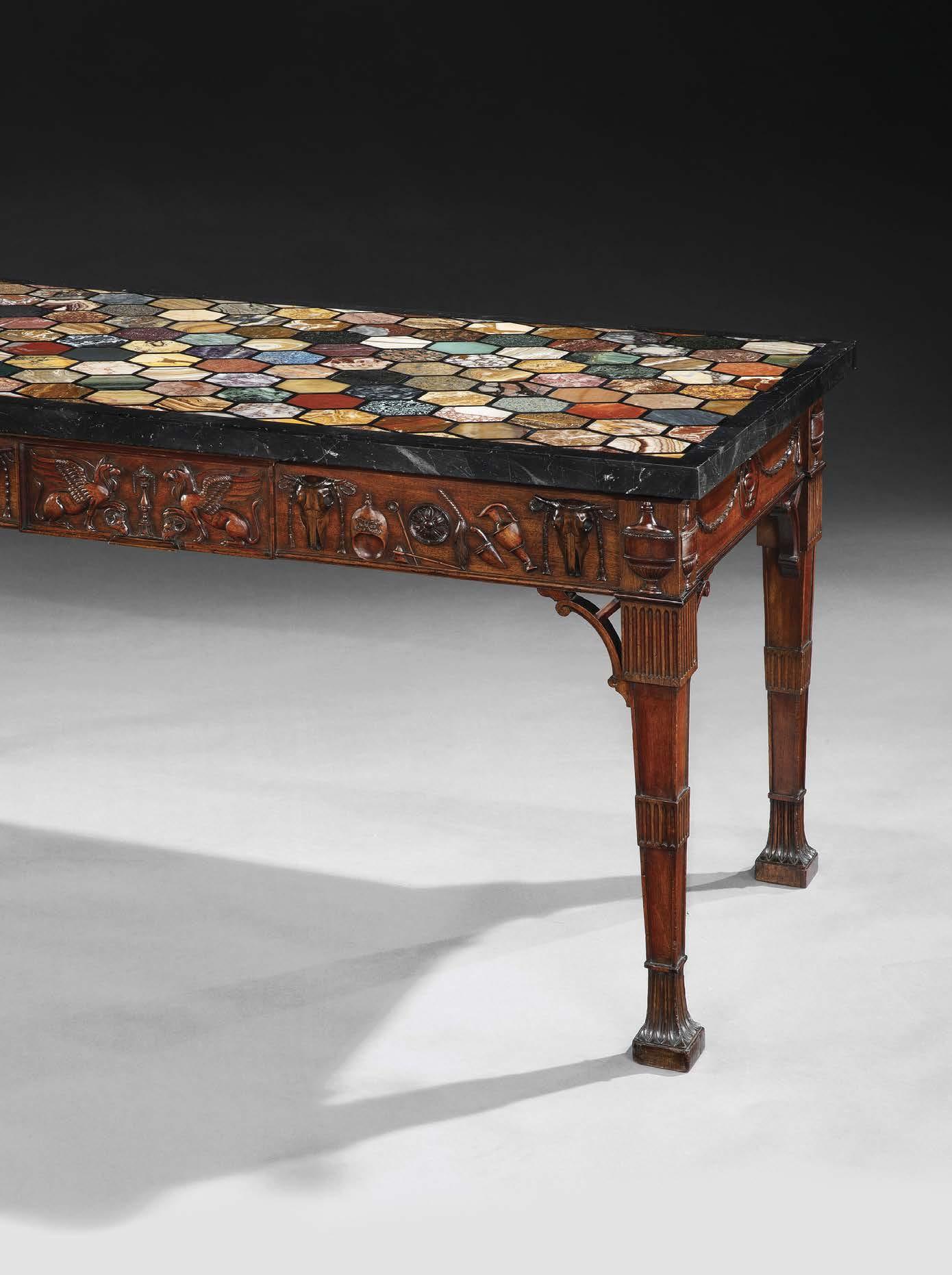
65
Sir George Strickland, 5th Bt. (1729 -1808) commissioned Carr of York to make alterations to Boynton Hall, Yorkshire between 1765 and 1780. Drawings for a grand Palladian mansion show that as a young man Strickland had grand ideas for a new house on the site. Instead, he modernised the existing Tudor house, which Lord Burlington had previously improved. There are unsigned drawings, probably by Carr, for most of the work carried out. The newly designed hall in the mansion was also to serve as a Sculpture Gallery. Tantalisingly vague records of payments to leading cabinet-makers including Chippendale and Cobb survive in the family archives.

Sir George travelled to Italy on the Grand Tour with his wife Elizabeth (née Winn, of Nostell Priory) and his two daughters arriving in Genoa in November 1778. They were in Naples in January and later visited Paestum with John Soane in February of that year. They left Rome in 1779, where Sir George had purchased an inlaid marble table from James Byres, a dealer in antiquities and paintings, and various other objects from Thomas Jenkins, an agent for many English collectors and a dealer in antiquities, paintings and sculpture. Strickland’s correspondence concerning his Grand Tour acquisitions and their dispatch to Boynton Hall is probably one of the most complete of its kind. The archive includes a receipt by Francesco Piranesi for prints of statues and the Antichita di Pesto, by his father G.B. Piranesi.
The outstanding carving on the frieze of this unique table is taken directly from the Temple of Vespasian and Titus, also known in the 18th century as the Temple of Jupiter Tonans (Thundering Jove), in the Roman Forum - it was reproduced in Les edifices antique de Rome dessinés et mesurés très exactement (Paris 1682) by the French artist Antoine Babuty Desgodetz who had been sent to Rome by Louis XIV to record the city’s ancient monuments. The Strickland family are known to have owned a copy of this publication in their library - and it is conceivable that they chose the design for the table from these engravings when ordering the base to display the magnificent specimen top they had perhaps acquired on their Grand Tour.
MACKINNON FINE FURNITURE 66
The Temple of Thundering Jove, showing the frieze pattern Vedute di Roma, Giovanni Battista Piranesi (1779)
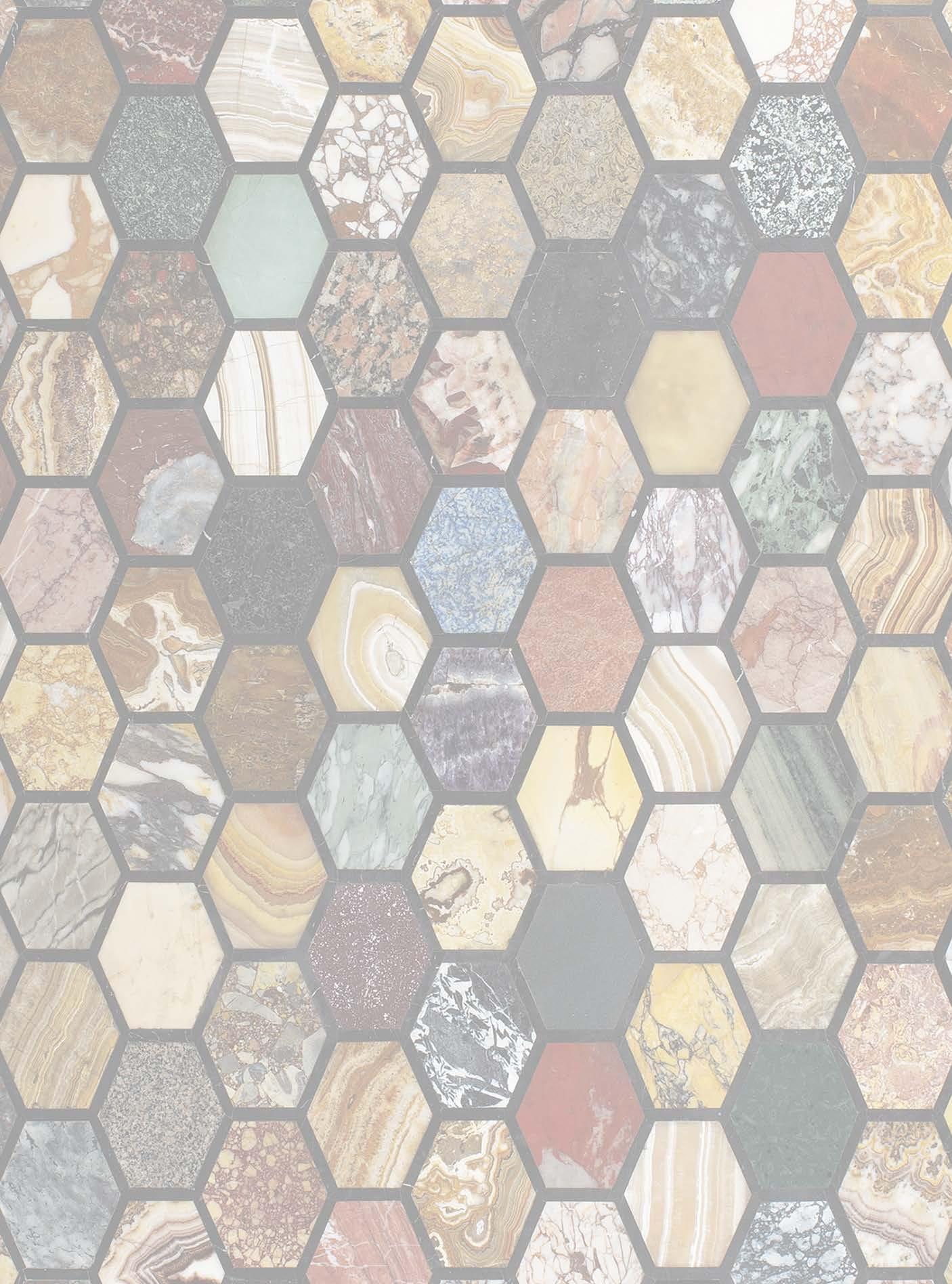



67
A GEORGE II WALNUT SIDE CHAIR
England, circa 1730
A fine George II walnut side chair with particularly good colour and patina. The scrolled crest rail carved with a central shell and foliate decoration, the vase shaped back splat carved with leaves, a rare feature, above a rounded seat frame, standing on shell carved cabriole legs that terminate in claw and ball feet. The drop-in seat upholstered with 18th century period needlework retaining exceptionally good colours.
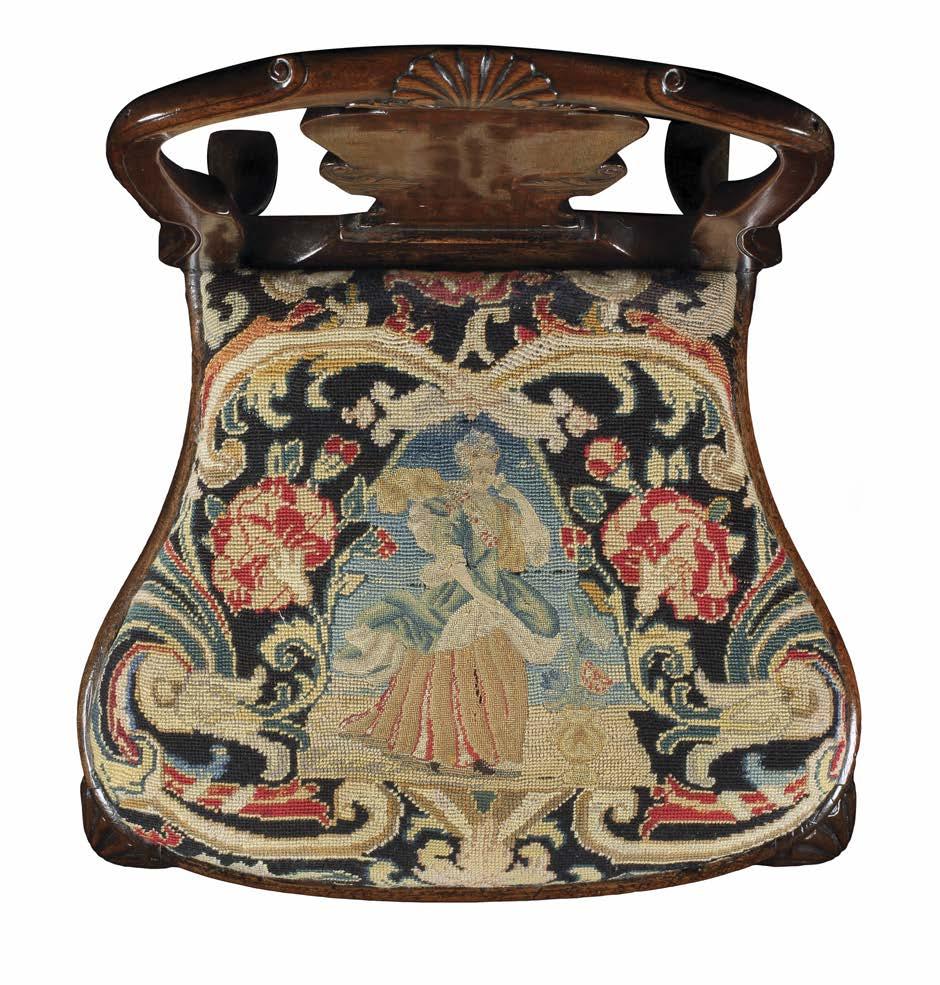
Height: 38¼ in (97 cm)
Width: 22 in (56 cm)
Depth: 22 in (56 cm)
MACKINNON FINE FURNITURE 68
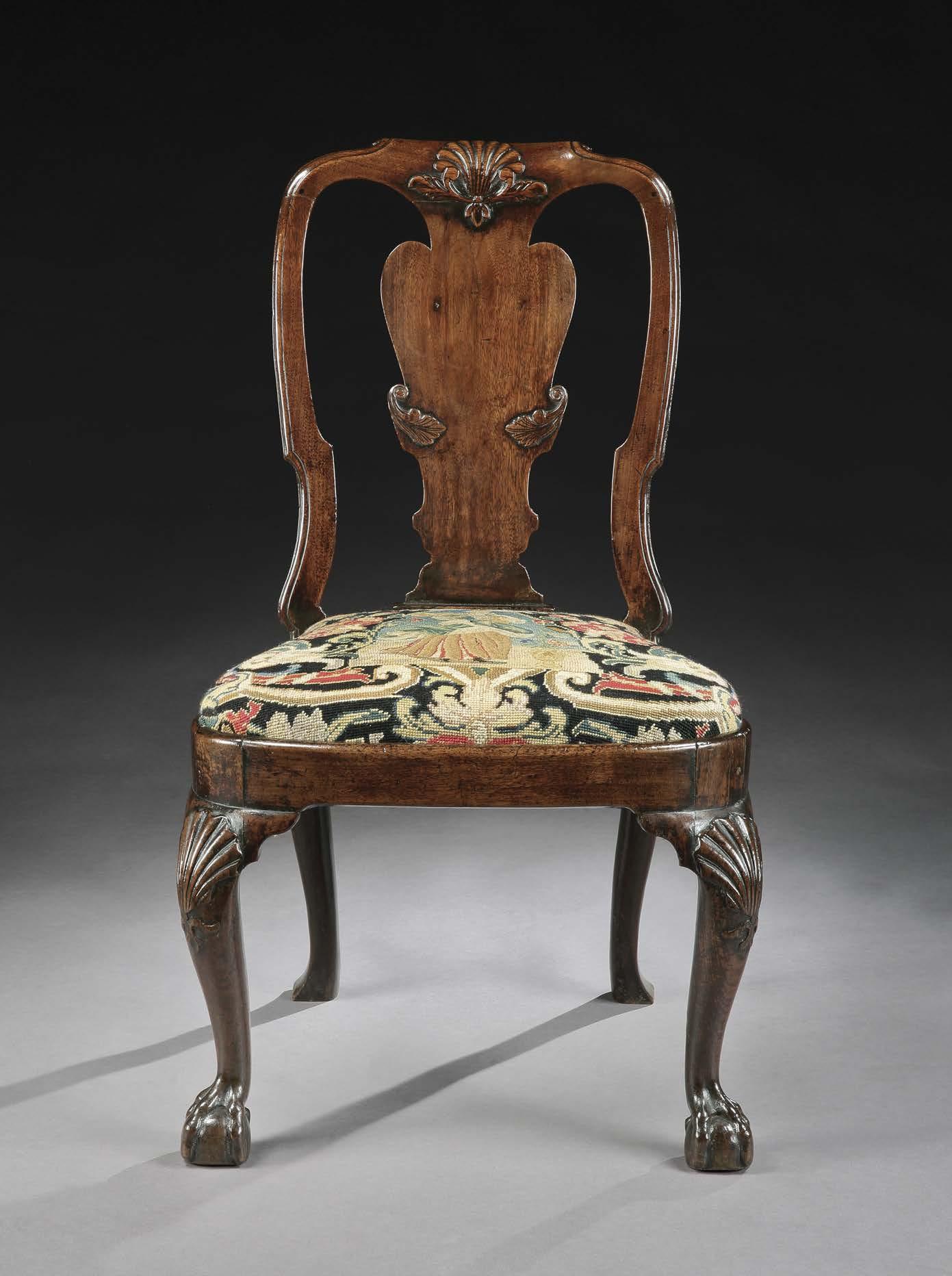
69
A GEORGE III SABICU COMMODE
Attributed to Henry Hill of Marlborough
England, circa 1765
A magnificent George III sabicu and kingwood ormolu mounted serpentine commode. In the French taste, the serpentine top cross-banded with kingwood around central panels of bookmatched sabicu, above three graduated serpentine drawers similarly veneered, each drawer with its original ormolu foliate handles, the leading corners of the commode and the outswept feet also ormolu mounted.
Height: 34½ in (88 cm)
Width: 57 in (145 cm)
Depth: 24 in (61 cm)
Provenance
Sotheby’s London, French, English and Continental Furniture, Clocks, Works of Art, Tapestries and Rugs and Carpets, 9 July 1976, lot 49 Private Collection, USA
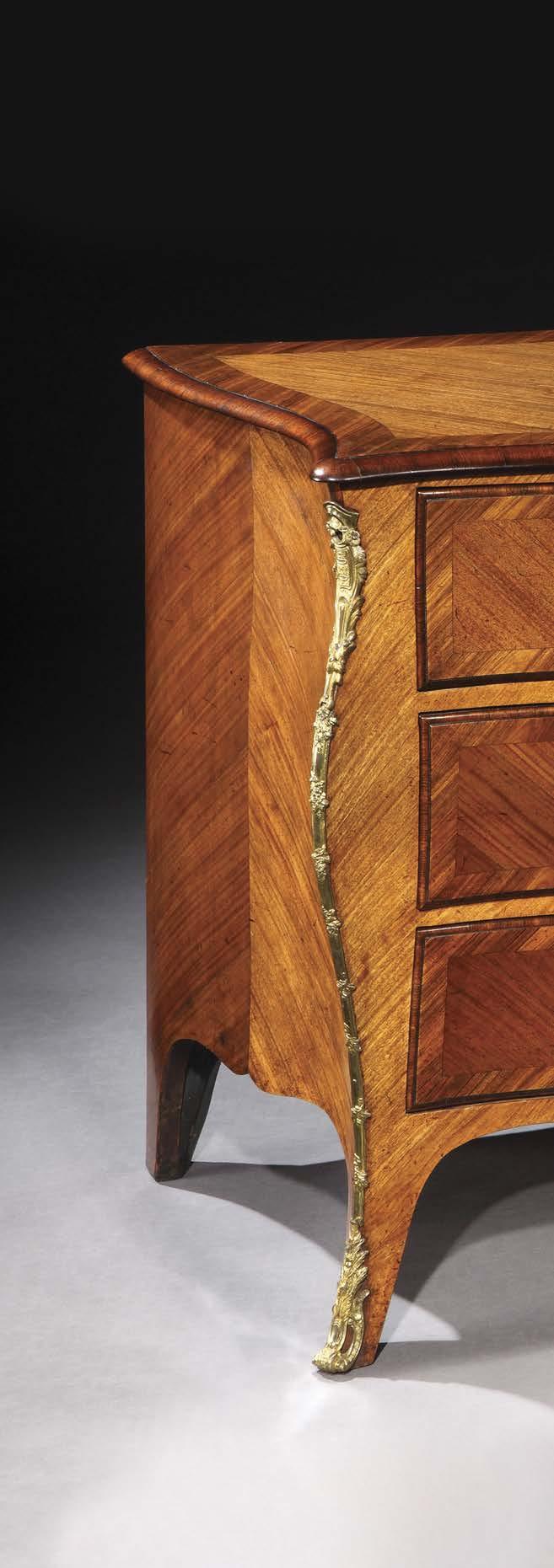
Henry Hill of Marlborough
Henry Hill was a Georgian cabinetmaker working in Marlborough, Wiltshire from the 1740s until his death in 1778. Throughout his career he was prolific in the art trade as a cabinetmaker, decorator, auctioneer, and estate agent. Benefitting from his location in Marlborough as a stopping point on the Great West Road between London and the fashionable town of Bath, Hill advertised his services to include delivery to London at more attractive rates than the London cabinetmakers. His major clients included Lord Delaval as well as the 9th Duke of Somerset at Maiden Bradley, Paul Methuen at Corsham Court, and Henry Hoare at Stourhead.
MACKINNON FINE FURNITURE 70
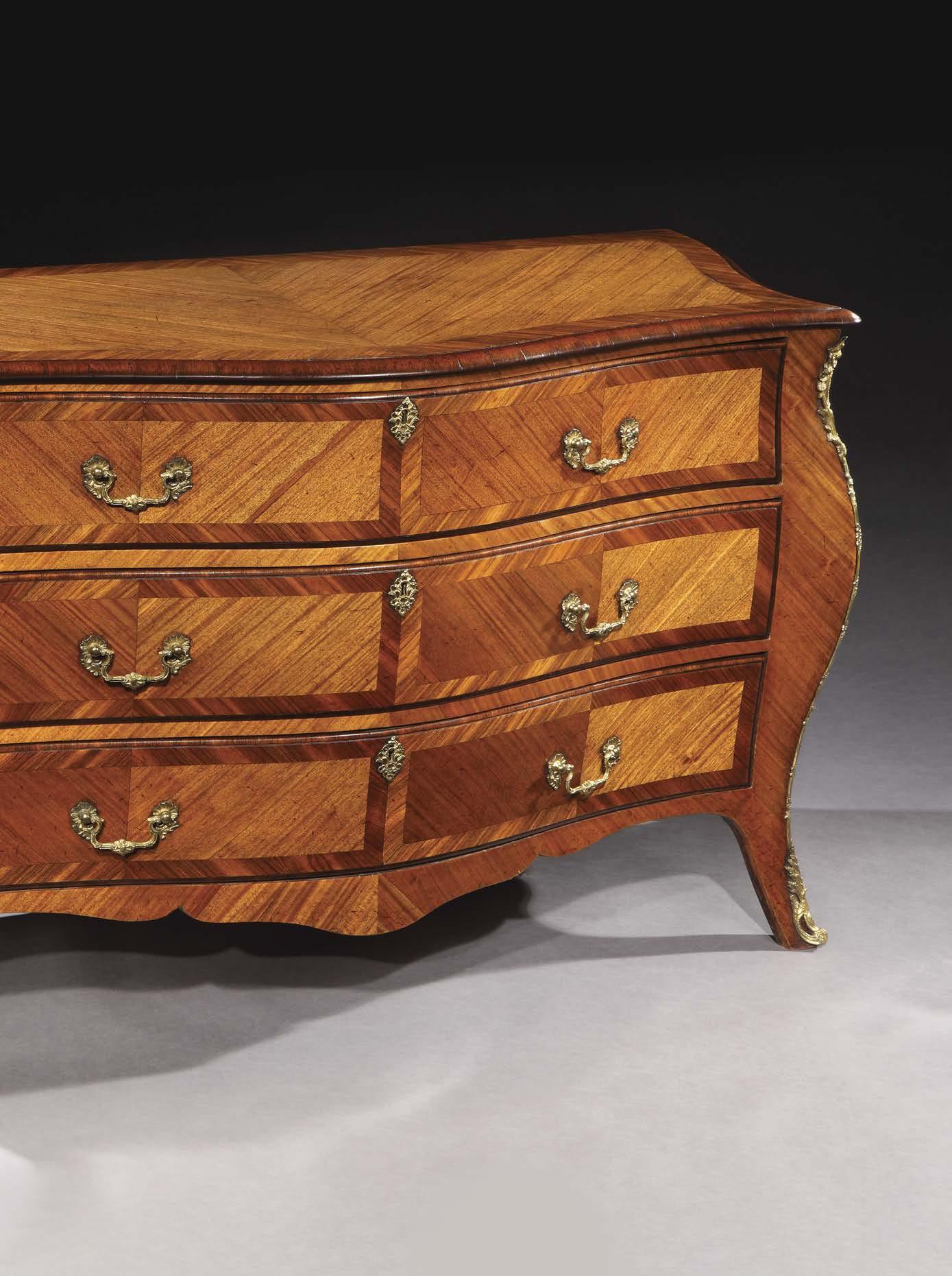
71
A GEORGE II MAHOGANY TALLBOY
England, circa 1750
An exceptional George II Chippendale period carved mahogany secretaire tallboy. The upper section with a carved cornice over two short and three long cock-beaded drawers, flanked by canted corners with superb carved detail. The lower section comprising three long graduated drawers, including a secretaire opening to reveal an arrangement of drawers and pigeon-holes. The bottom moulding further carved and standing on bold cabriole legs with hairy paw feet.

Height: 76 in (193 cm)
Width: 44½ in (113 cm)
Depth: 22¼ in (57 cm)
Provenance
With Jeremy, Belgravia, London (1953)
Private collection, UK
Literature
Connoisseur Magazine Coronation Edition, 1953 (illustrated)
MACKINNON FINE FURNITURE 72
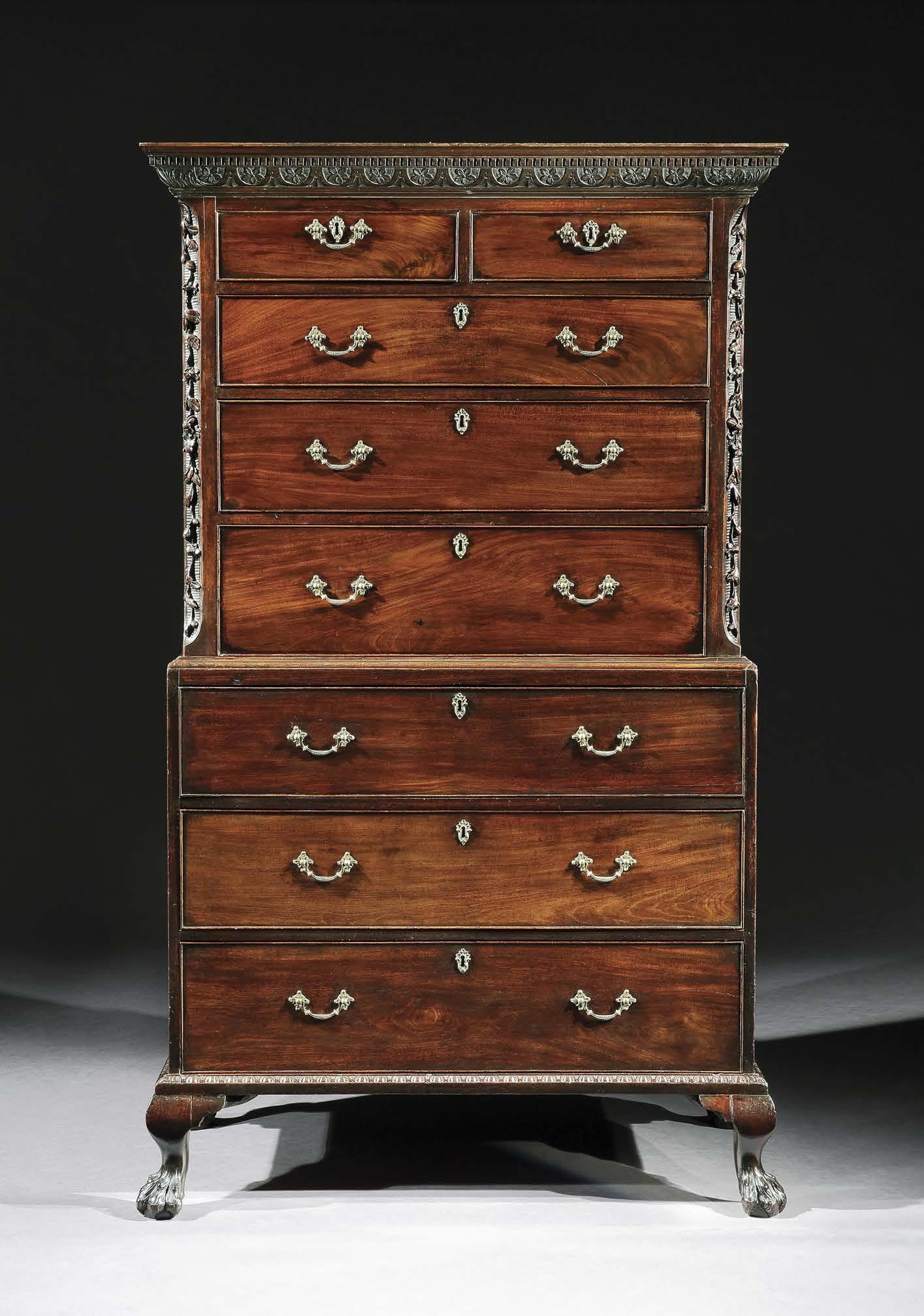
73
A PAIR OF GEORGE III ORMOLU MOUNTED COMMODES
Attributed to John Cobb England, circa 1770
A fine and rare matched pair of George III ormolu-mounted kingwood, tulipwood, harewood and marquetry commodes attributed to John Cobb.
Each of serpentine bombé form, with quarter-veneered top inlaid with a marquetry bouquet of flowers, above three serpentine drawers, the front corners headed by pierced ormolu rockwork mounts. The lower shaped frieze similarly mounted and the splayed feet with sabots. The sides with book-matched veneers. Minor variations.
Height: 32¼ in (82 cm)
Width: 37¾ in (95.5 cm)
Depth: 19¾ in (50 cm)
Provenance
The collection of Mrs Audrey Pleydell-Bouverie (by 1947 at the latest)
Thence by family descent
In the French taste, with their richly figured and marquetry inlaid quarter-veneered tops, ormolu mounts and boldly drawn cabriole form, these rare commodes can be confidently attributed to John Cobb.
A closely related pair of commodes was sold from the collections previously at Stowe House, Buckinghamshire. Almost certainly supplied to George Grenville, Marquess of Buckingham (17551813), this pair of commodes passed through the family by descent until sold Sotheby’s London, Treasures, 6 July 2016, lot 35 (£75,000).
MACKINNON FINE FURNITURE 74
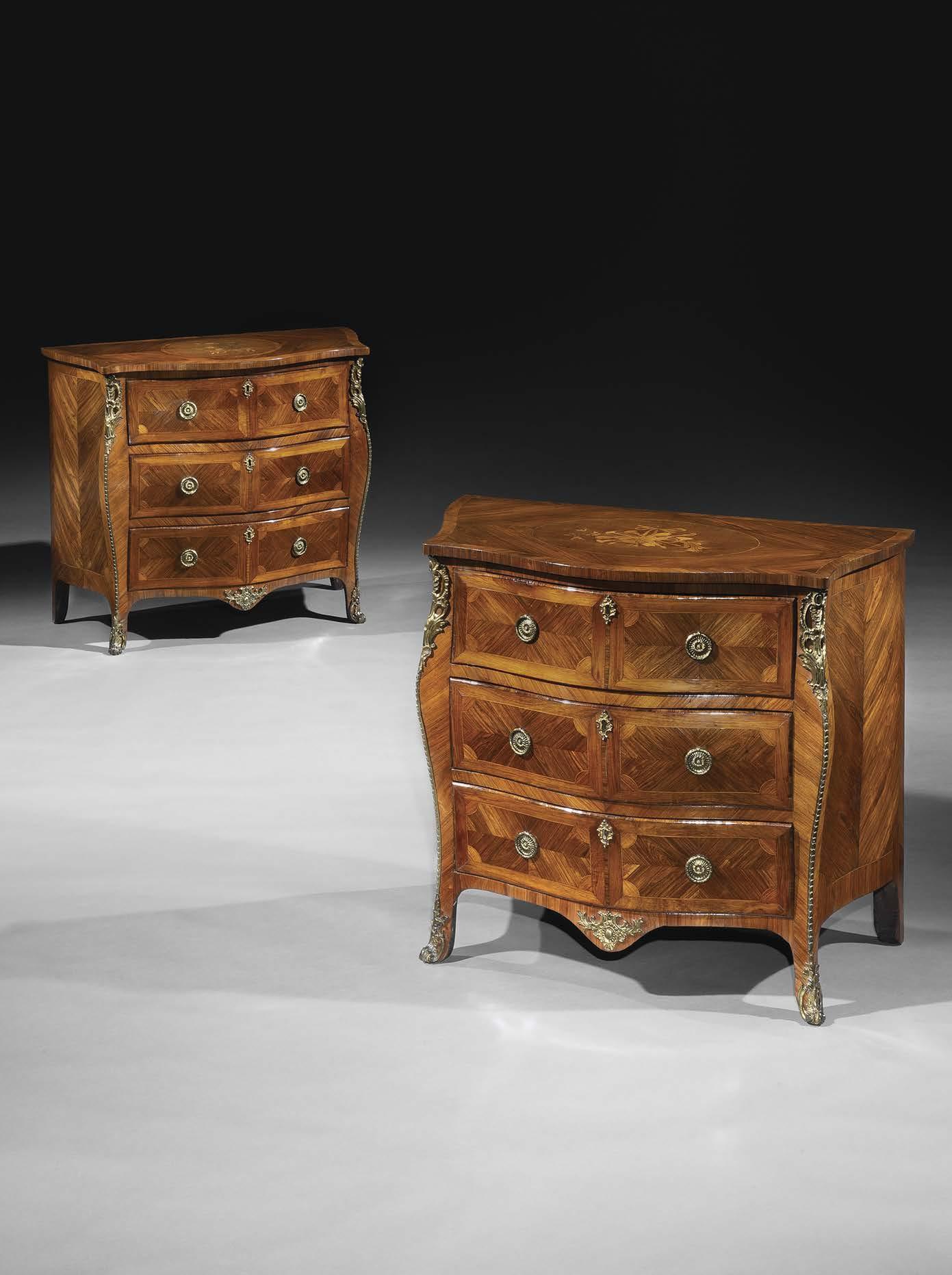
75
A GEORGE III GILTWOOD CONFIDANTE
In the manner of William and John Linnell England, circa 1780
An extremely fine and rare George III giltwood confidante sofa in the French neo-classical taste. The moulded giltwood channelled frame with paterae flanked by a husk pendant cresting, carved in relief with flower-heads, standing on square panelled tapering legs.
Photographed in situ at Powerscourt, circa 1890 in the hall.
Height: 46 in (117 cm)
Width: 128 in (325 cm)
Depth: 30¾ in (78 cm)
Provenance
Almost certainly acquired by the Viscounts Powerscourt and by descent at Powerscourt, Co, Wicklow until the house was sold with the contents to Mr. and Mrs. Ralph Slazenger in 1961 Christie’s, The collection of Mr. and Mrs. Ralph Slazenger, Powerscourt, Enniskerry, Co. Wicklow, Ireland, 24 - 25 September 1984, lot 682
Powerscourt, one of the most celebrated of Irish houses, was largely the creation of Richard Wingfield (d. 1751), 1st Viscount Powerscourt from 1728-43 to designs by Richard Castle, but was extensively remodelled by the 6th and 7th Viscounts Powerscourt in the 19th century, including a suite of drawing rooms redecorated for the visit of King George IV in 1821. The house was sold in 1961 to Mr. and Mrs. Ralph Slazenger. Tragically, the house was gutted by fire in November 1974 just before it was due to be open to the public. Many of the furnishings that survived were sold at the Christie’s house sale in 1984.
The design of this three-part sofa originated in France in the mid18th century supposedly allowing confidential conversations, hence the name ‘confidante’. There are design drawings for this form of tri-partite sofa by William and John Linnell in the collections of the Victoria & Albert Museum. This leading London firm supplied two related confidantes to the Duke of Argyll, circa 1773, for Inverary Castle. George Hepplewhite also produced designs for a ‘Confiante and Sofa’ in his Cabinet-Maker and Upholsterer’s Guide, published in 1788.
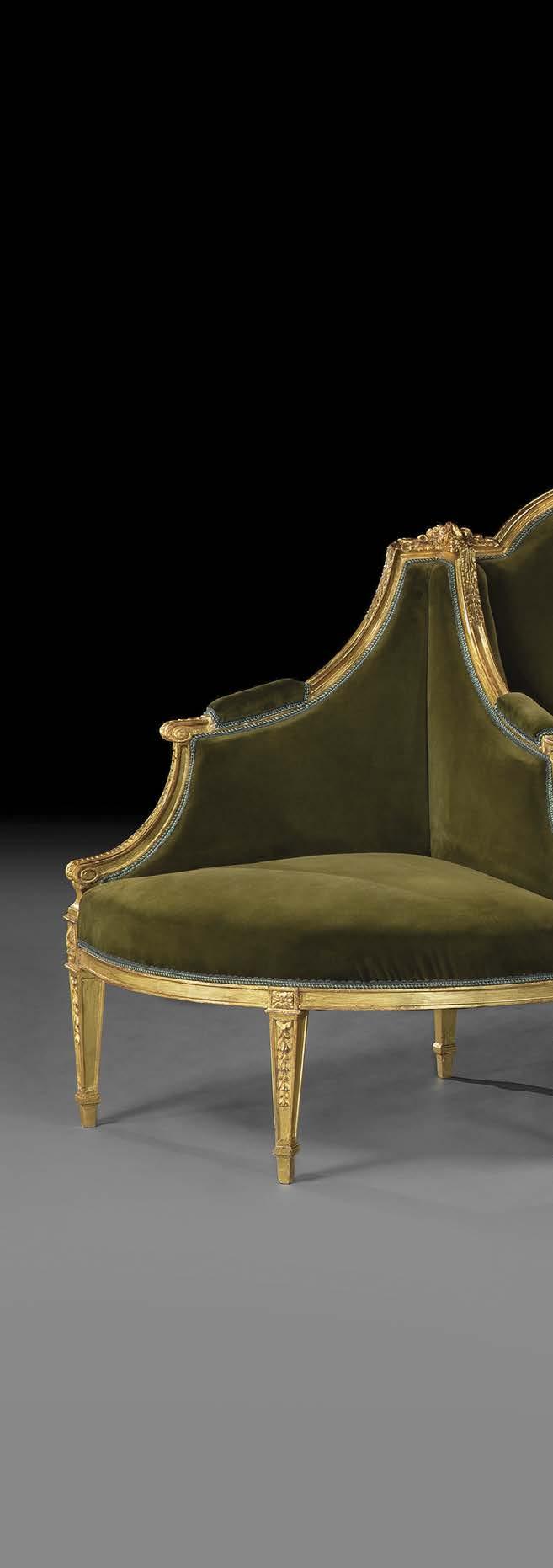
MACKINNON FINE FURNITURE 76
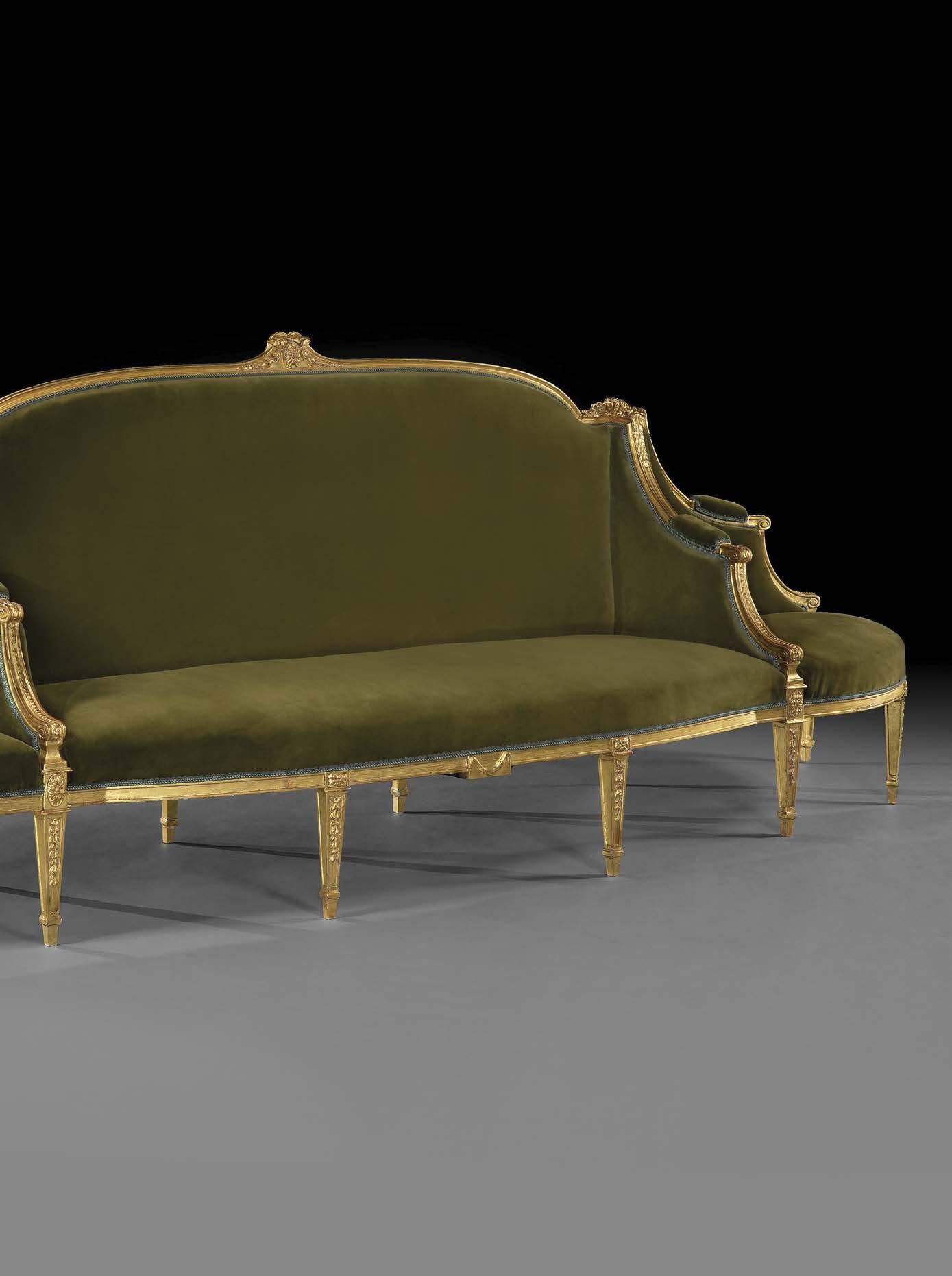
77
A GEORGE III MAHOGANY SERVING TABLE

England, circa 1770
A very fine George III Chippendale period mahogany serving table. The serpentine fronted and sided top carved with sophisticated egg and dart moulded edge, above a plain similarly shaped frieze on bold moulded square section legs.
Wonderful colour and patina to the mahogany throughout.
Height: 36¼ in (92 cm)
Width: 67¾ in (172 cm)
Depth: 28¾ in (73 cm)
MACKINNON FINE FURNITURE 78

79
A GEORGE III TRIPOD TABLE
England, circa 1760
An exceptionally fine George III Chippendale period mahogany tripod table, the wonderfully figured circular mahogany top with moulded edge and a waved gallery, supported on a tilt-top birdcage mechanism with an outstandingly well carved spiral fluted knopped shaft, on a tripod base with elegant cabriole legs carved with hairy paw feet.
Outstanding colour and patina.
Height: 28¾ in (73 cm)
Width: 22½ in (57 cm)
Depth: 22½ in (57 cm)
Provenance
With Norman Adams, Knightsbridge (1999)
Private collection, England
MACKINNON FINE FURNITURE 80
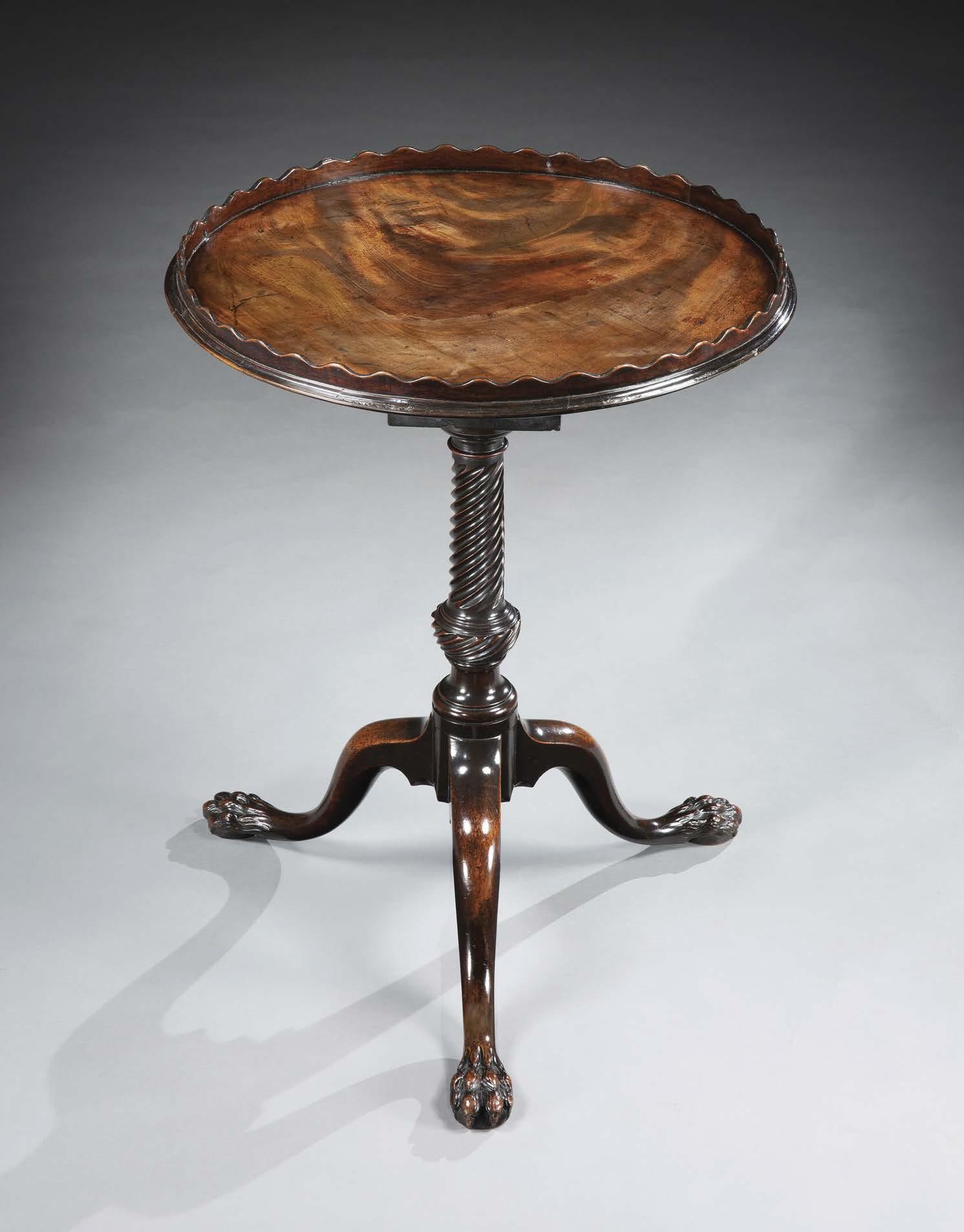
81
A GEORGE III MAHOGANY CORNER CABINET
In the manner of John Cobb England, circa 1770
An extremely fine and rare George III mahogany corner cabinet. In the French taste, the part galleried serpentine top with bookmatched flame veneers of the finest mahogany, above a pair of serpentine cupboard doors, standing on elegant yet bold shell carved scroll-toed cabriole legs joined by a floral and harebell carved shaped frieze.
Of exceptional colour and patination.
Height: 33¾ in (86 cm)
Width: 25¾ in (65 cm)
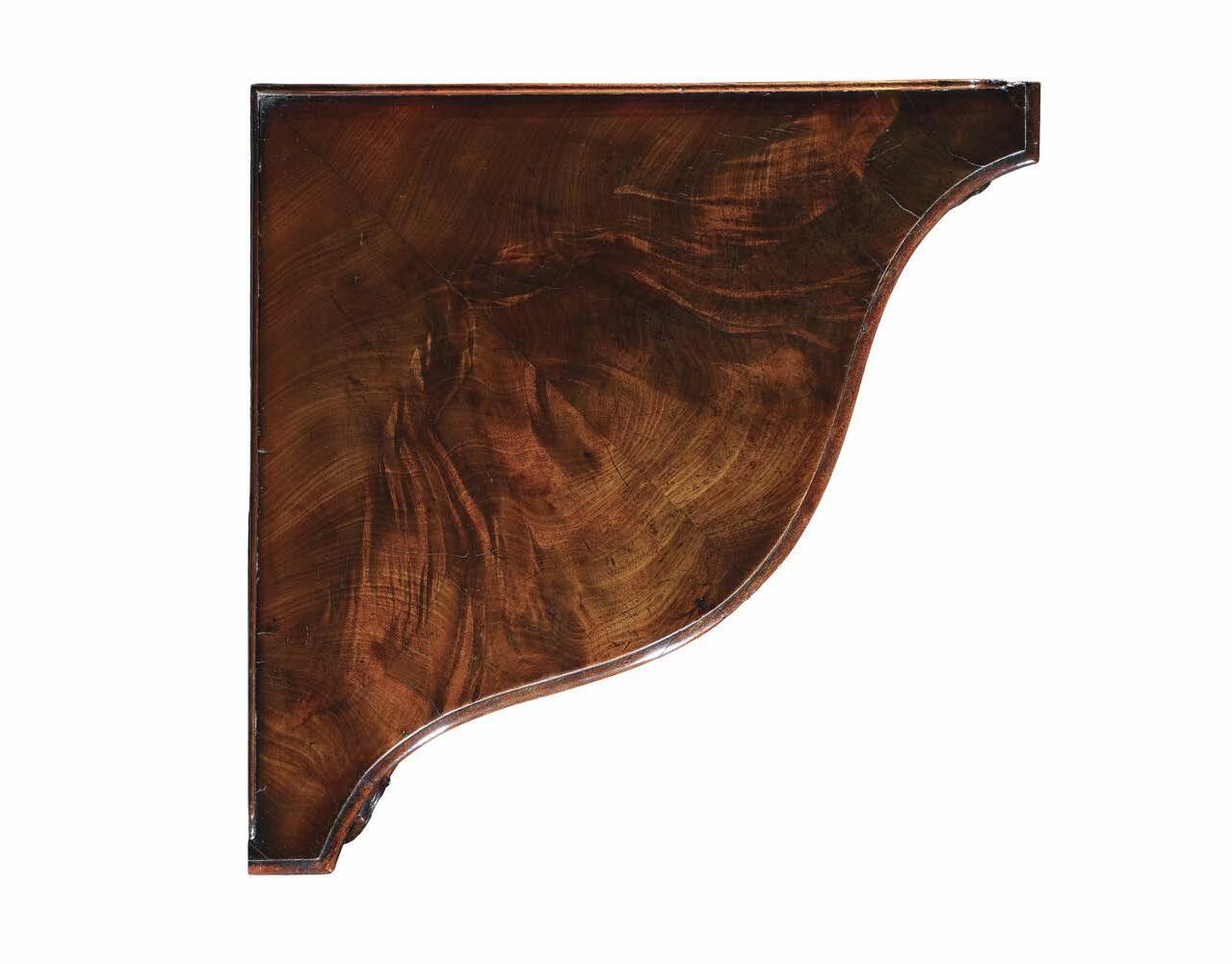
MACKINNON FINE FURNITURE

83
DESIGNED BY ROBERT ADAM, MADE BY JOHN LINNELL
THE SHARDELOES URNS AND PEDESTALS
By John Linnell - The urns designed by Robert Adam England, 1767

A highly important pair of George III gilt bronze mounted carved urns and pedestals by John Linnell, supplied in 1767 to William Drake (d. 1796) for Shardeloes, Buckinghamshire.
Each urn with a removeable tapering lid carved with stop-fluting, foliate details and a guilloche rim, the gilt bronze mounts with a conforming guilloche collar between scrolled handles on satyr masks, the wrythen fluted bodies with acanthus and foliate carved socle. The pedestals with a fluted frieze to three sides within acanthus and guilloche mouldings and centred with paterae. The doors decorated with laurel swags and paterae. On a square plinth base.
Height: 60½ in (154 cm)
Width: 17½ in (44.5 cm)
Depth: 17½ in (44.5 cm)
Provenance
Supplied by John Linnell to William Drake (d. 1767) for Shardeloes, Buckinghamshire in 1767
Thence by descent to Capt. Thomas Tyrwhitt-Drake (1893 – 1956) at Shardeloes
The collection of Dr. Campbell Golding, Upper Wimpole Street, London
Thence by descent until sold Christie’s, Important English Furniture, 27 November 2003, lot 88 (£240,500) Private Collection, UK
Selected Literature
A.T. Bolton, ‘Shardeloes – Buckinghamshire’, Country Life, 5 July 1913, p.22 (shown in situ in the Dining-Room)
Arthur Bolton, The Architecture of Robert & James Adam, 1922, vol. I, p.151
John Harris, ‘Shardeloes: A lasting tribute to a remarkable restoration’, The Connoisseur, July - December 2006, p. 269, p. 275
J. Musson, Robert Adam - Country House Design, Decoration & the Art of Elegance, 2017, pp. 86-87
E. Harris, The Genius of Robert Adam - His Interiors, 2001, p.160-161 and fig. 231
H. Hayward and P. Kirkham, William and John Linnell - Eighteenth Century Furniture Makers, vol. I, pp. 96 - 102 and vol. II, pp. 154155, figs. 299-300
David King, The Complete Works of Robert & James Adam, 2001, p. 197
Robert Osresko, The Works in Architecture of Robert & James Adam, 1975, p. 89
G. Eland, Shardeloes Papers of the 17th and 18th Centuries, 1947, pp. 19-20
M. Jourdain, ‘A Chimney-Glass by John Linnell’, Country Life, 9 December 1949, p. 1736 Country Life, 30 December 1949, p. 1959
MACKINNON FINE FURNITURE 84
The Works in Architecture of Robert and James Adam (1779), showing the exact design of the urns on the right
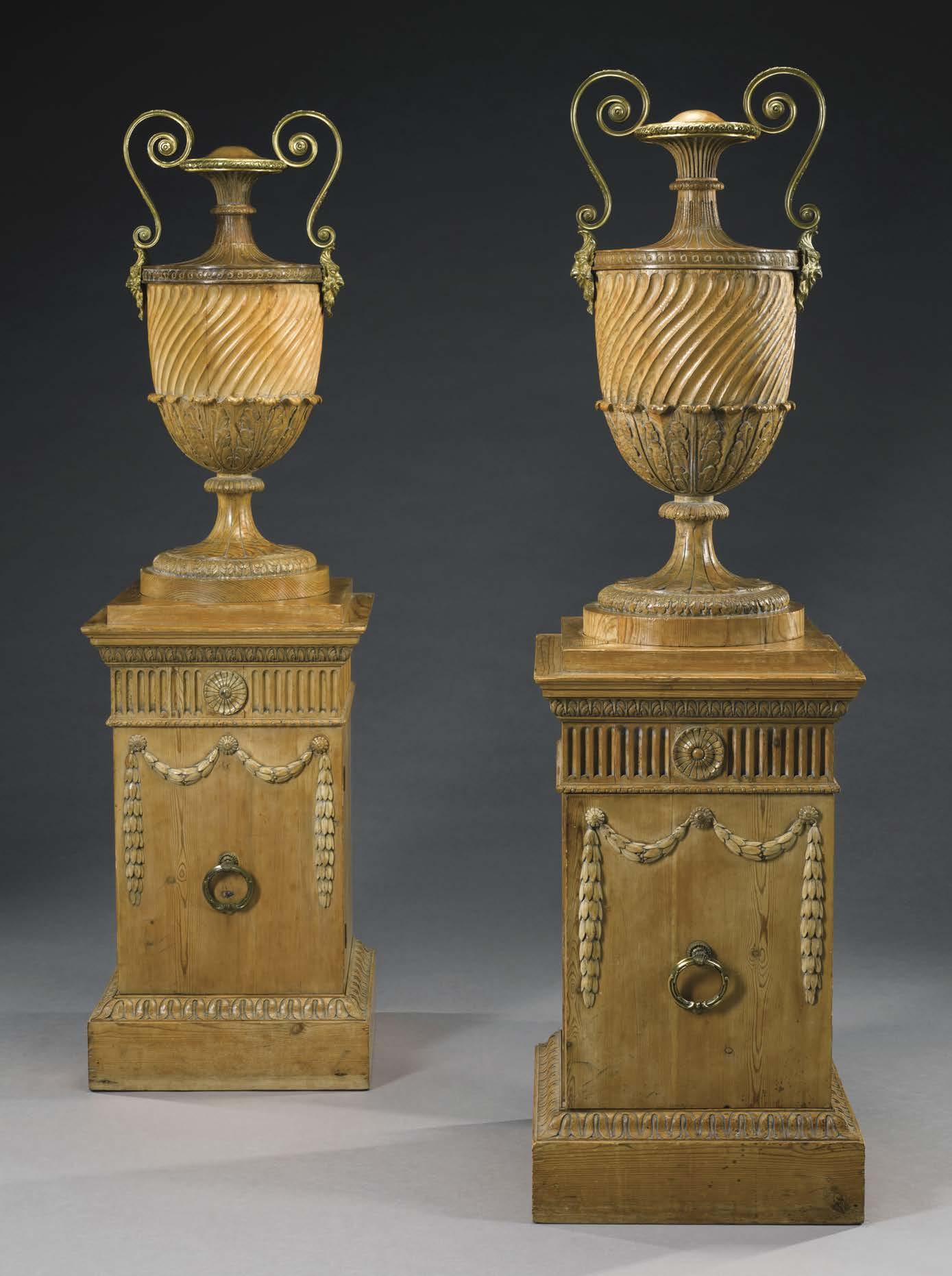
85
These magnificent sculptural neo-classical urns standing on their original matching pedestals formed part of one of the early commissions that would confirm Robert Adam’s reputation as the leading driver of taste and fashion in 18th century Britain. Their outstandingly well-documented provenance means they can be firmly traced back to Shardeloes, the seat of the Drake family in Buckinghamshire, as part of the original commission of architecturally informed fine furniture executed there by John Linnell in the 1750s and 60s to designs by Robert Adam.
John Linnell (1729-1796) was one of the foremost cabinetmakers of the 18th century, joining his father William’s firm after training at St Martin’s Lane Academy, and becoming sole owner of the company on his father’s death in 1763. The Linnell firm enjoyed the patronage of leading members of fashionable society including Lord Scarsdale at Kedleston, Robert Child at Osterley, the Duke of Argyll at Inverary Castle and the Howard family at Castle Howard in Yorkshire. William Drake had initially commissioned William Linnell to furnish his London residence in Grosvenor Square, continuing his patronage of the family firm uninterrupted after his son took over.
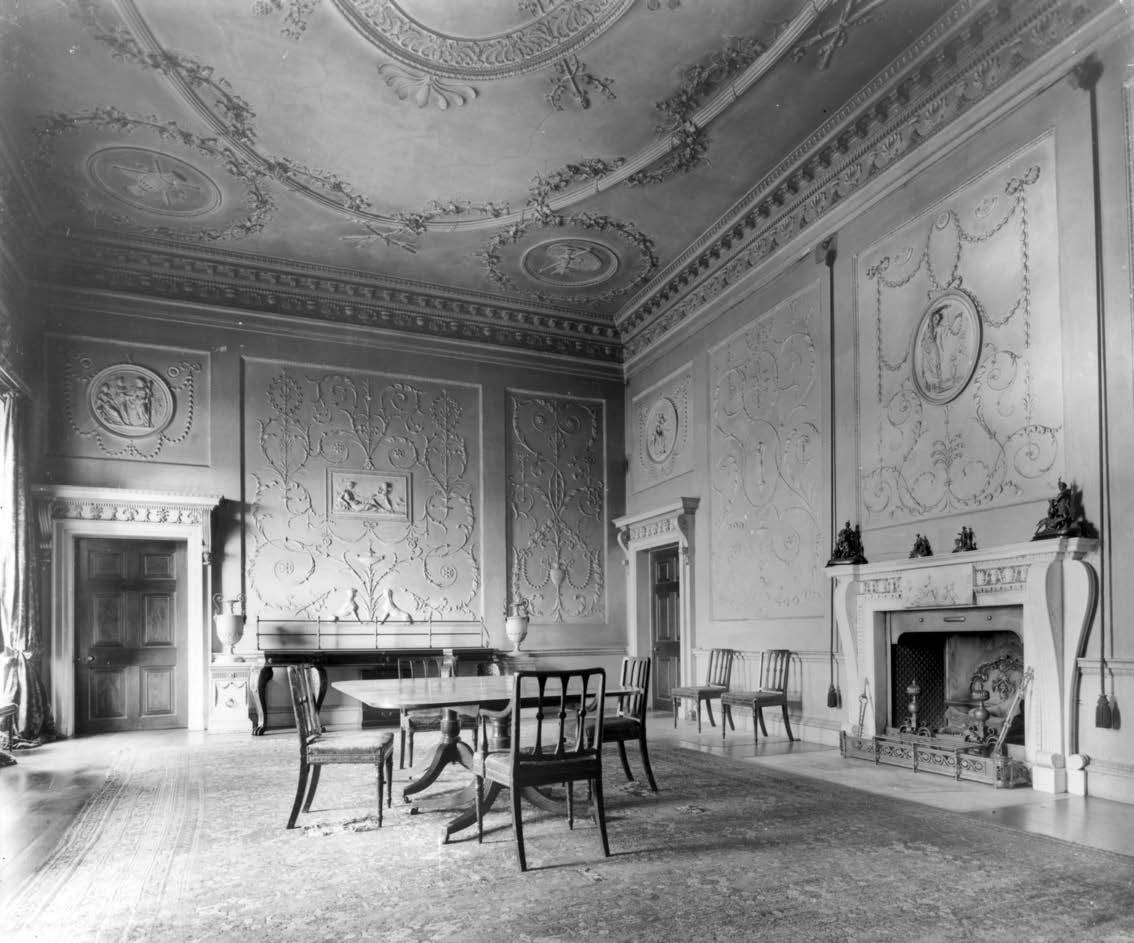
The original invoice for these urns and pedestals from John Linnell of the 2nd October 1767 itemises the:
‘making and carving [of] 2 coopers the tops in form of vases and large brass handles like Mr. Childs one lin’d with lead to hold water and the other top sham and a pot cupboard underneath’.
The reference to Mr Child directly links our urns to the recent Robert Adam commission at Osterley and the related urns and pedestals supplied to Robert Child. These can still be seen at Osterley today, and as promised in the bill, the mounts and carving on the urns match the Shardeloes examples exactly.
MACKINNON FINE FURNITURE 86
The dining room at Sharedloes, showing the urns and pedestals in situ
Credit: Country Life / Further Publishing Ltd.
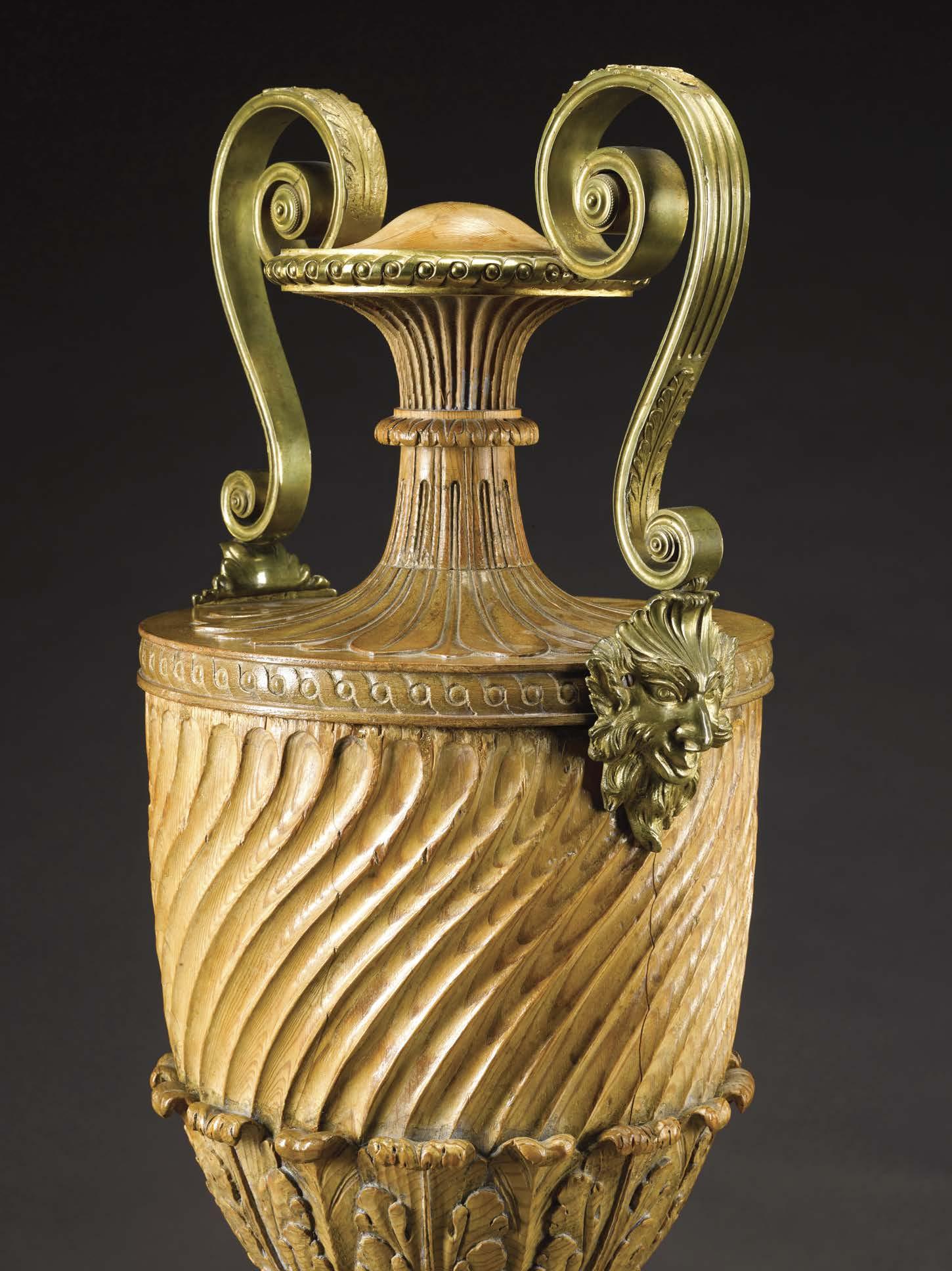
87
A GEORGE III COLLECTOR’S CABINET

England, circa 1790
A very rare George III Sheraton period satinwood, inlaid and painted cabinet on stand. The fall-front opens to reveal a leatherlined writing surface with a bank of seven graduated cedar-lined drawers. The front and sides with oval marine scenes painted in the manner of Dominic Serres R.A. (d. 1793). With the original grey marble top. The oval painted marine scenes are surrounded by borders painted en grisaille with gilt-wood pearl mouldings.
Height: 55½ in (141 cm)
Width: 29¼ in (74 cm)
Depth: 18¾ in (48 cm)
This superb cabinet, intended for a lady’s reception or dressing room, is designed in the French antique fashion popularised by Thomas Sheraton’s The Cabinet-Maker and Upholsterer’s Drawing Book, 1793.
A related bonheur du jour writing table decorated with scenes painted in 1792 by Serres’ son and successor John Thomas Serres (d. 1825) is in the Lady Lever Art Gallery. He worked for a time in Liverpool and his views of its port were published in 179798. A related cabinet incorporating a Wedgwood medallion attributed to Messrs. Seddon, Sons & Shackleton is illustrated in C. Gilbert, ‘Seddons, Son & Shackleton’, Furniture History, 1997, fig. 360.
MACKINNON FINE FURNITURE 88

89
A SET OF FOUR GEORGE III GILTWOOD ARMCHAIRS
England, circa 1780
A fine set of four George III neo-classical giltwood armchairs. The shield shaped backs surmounted by a ribbon motif and finials to the uprights, the armrests terminating in acanthus scrolls, the padded backs and seats upholstered. The serpentine front rail detailed with a carved laurel sprig, the front legs round, fluted, tapered and headed by carved paterae, the back legs elegantly outswept. With cramp cuts and baton holes to the undersides.
Height: 38¼ in (97 cm)
Width: 24¼ in (62 cm)
Depth: 20¼ in (51 cm)
MACKINNON FINE FURNITURE 90

91
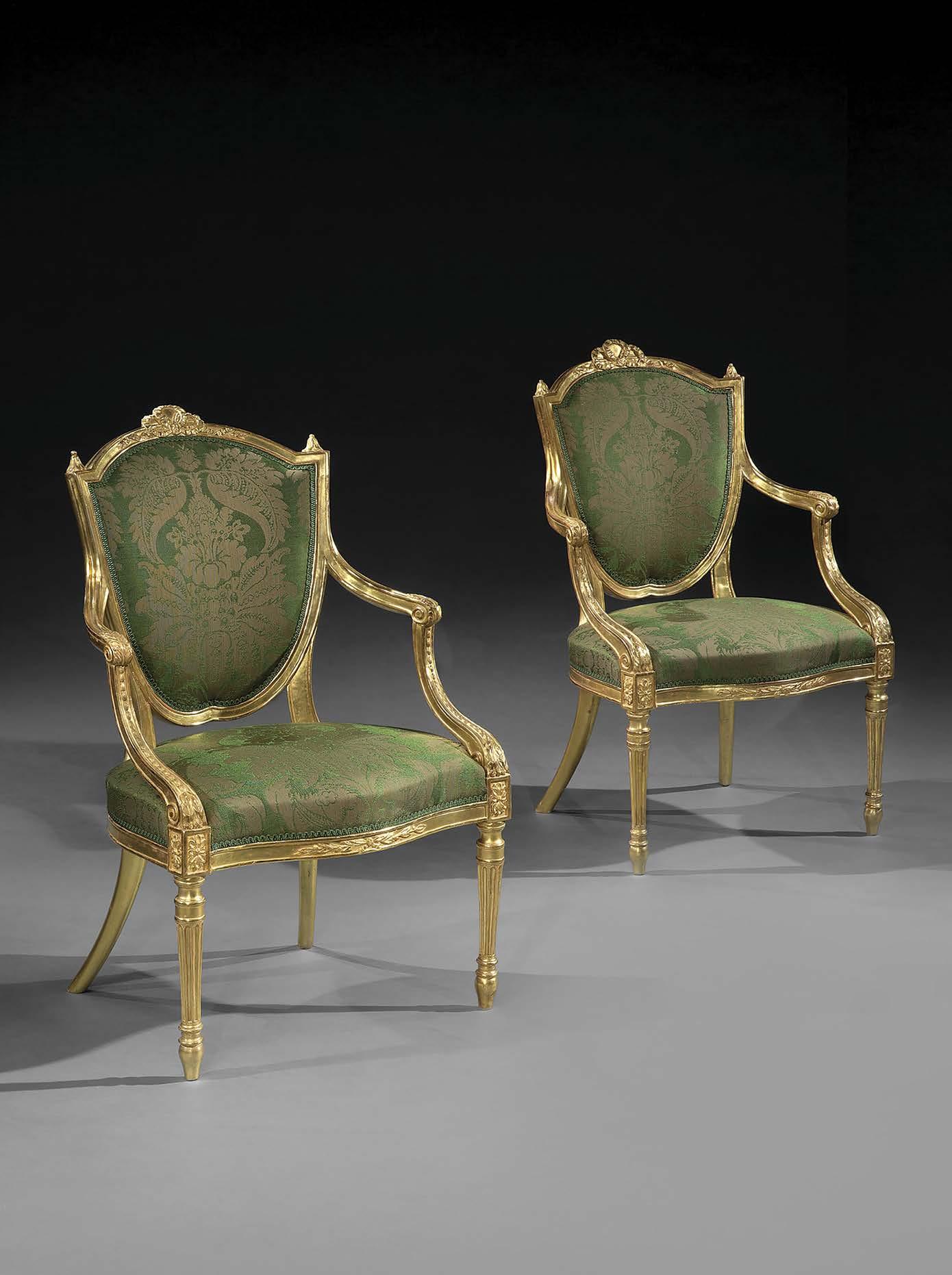
MACKINNON FINE FURNITURE 92
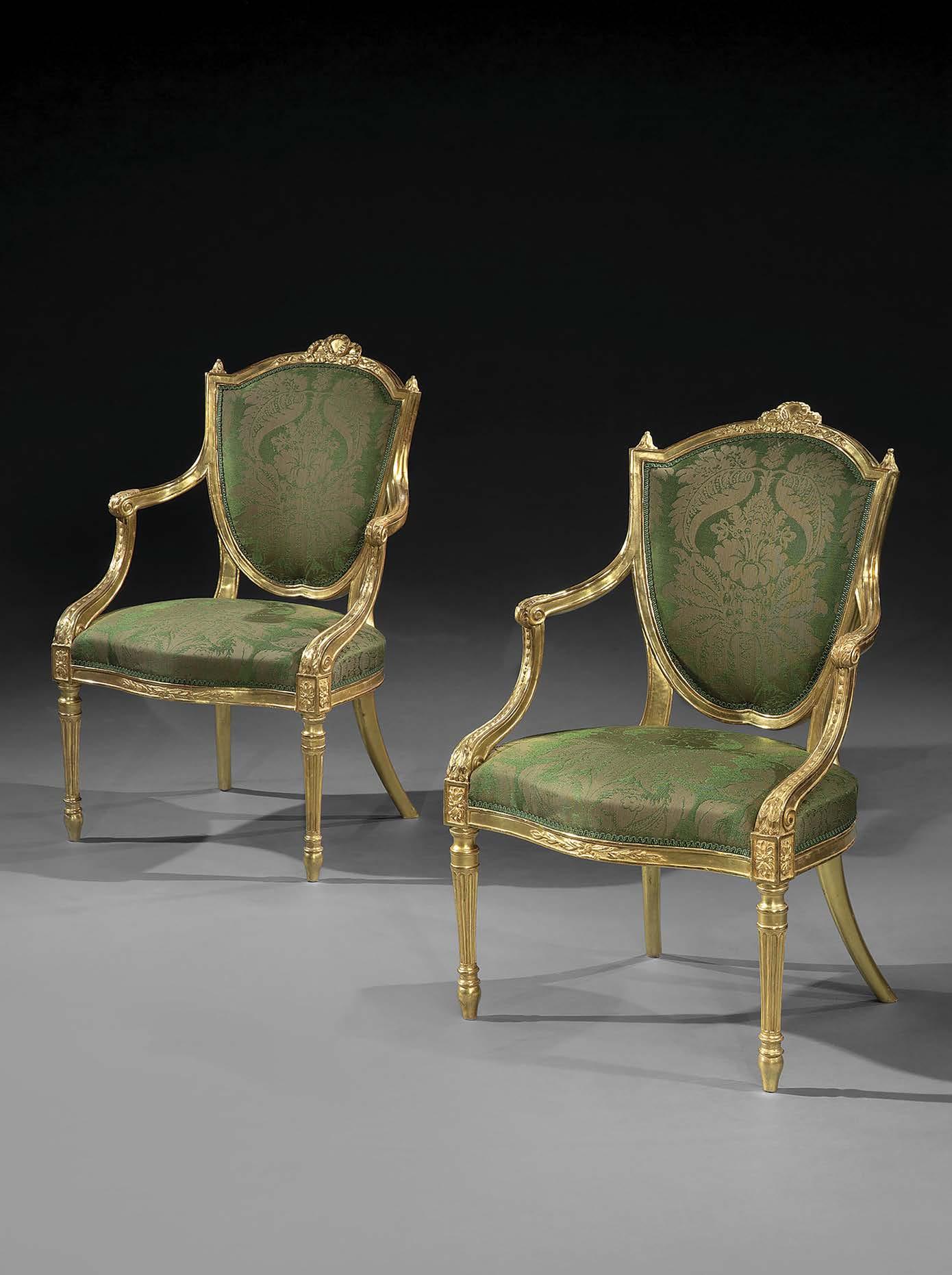
93
A GEORGE III JAPANNED TABLE CLOCK
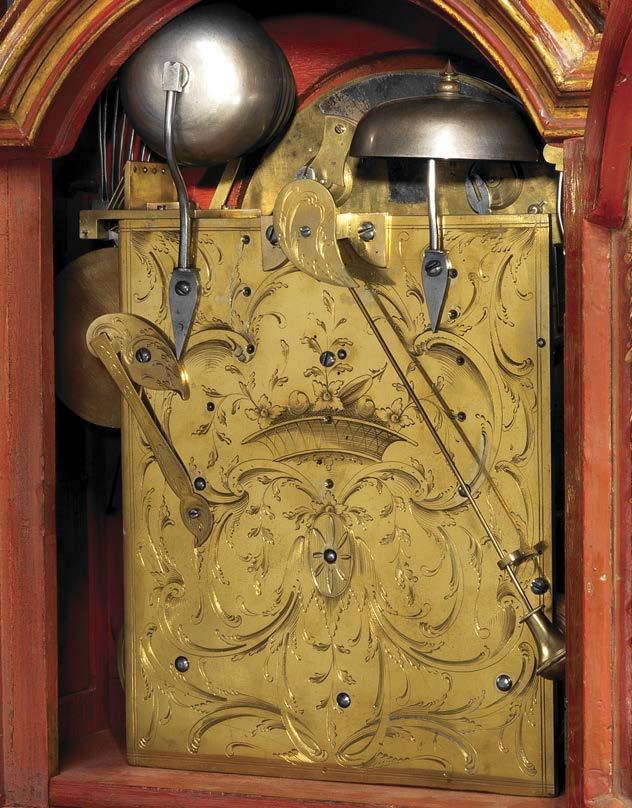 By John Taylor, London England, circa 1780
By John Taylor, London England, circa 1780
A very fine George III red japanned and chinoiserie table clock. The stepped bell-shaped top mounted with five facetted urn finials, each on a pedestal over a boldly moulded cornice and gilt pierced scroll sound frets and side handles, raised on a plinth base and shaped apron.
The 7¾ inch arched brass dial signed in a recessed silvered plaque flanked by subsidiaries for Chime/not Chime and the musical options of Dance/March, over a silvered Roman and Arabic chapter ring framed by scroll spandrels, the finely matted centre with date aperture. The substantial triple gut fusee movement with verge escapement, short pendulum with brass teardrop shaped bob, rack striking the hours on a bell and playing a tune once an hour on eight bells and hammers, the backplate with double line border framing a symmetrical pattern of foliate scrolls, a medallion and basket of fruit including an apple, a plum and pomegranate.
Height: 27¼ in (69 cm)
Width: 15¼ in (39 cm)
Depth: 8¼ in (22 cm)
Provenance
With John Carlton-Smith, London Private Collection, UK
FINE FURNITURE 94
MACKINNON
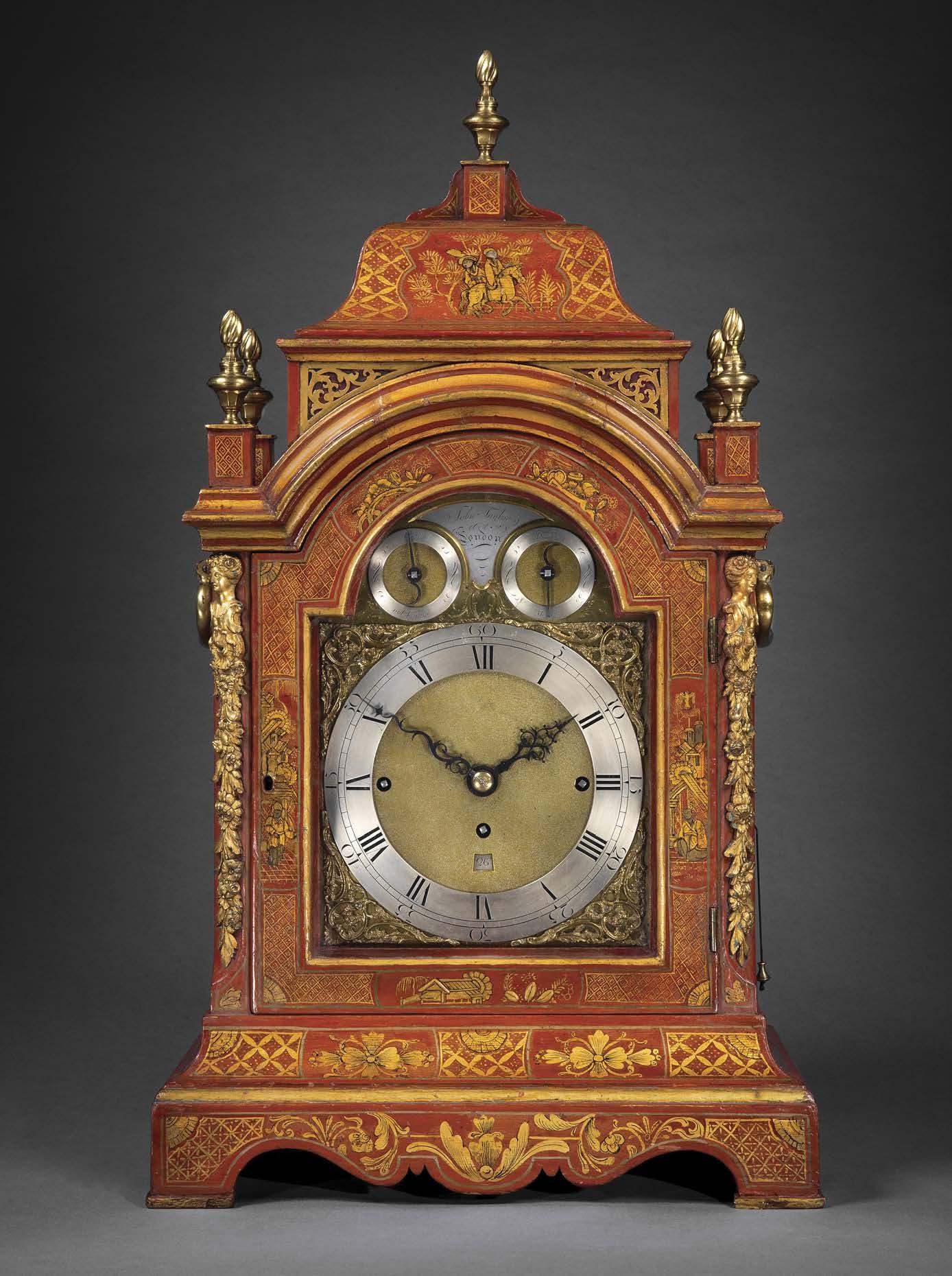
95
A PAIR OF GEORGE III GILTWOOD ARMCHAIRS
Attributed to John Cobb
England, circa 1770
An important pair of George III giltwood armchairs attributed to John Cobb. In the French taste, these exceptional chairs have magnificent gadrooned show-frames. The seat, back and armrests are upholstered with silk damask. The elegant cabriole legs similarly gadrooned and terminating in scroll toes with pad feet. The legs and arms further decorated with distinctive carved C-scroll motifs.
Height: 35¾ in (91 cm)
Width: 27 in (69 cm)
Depth: 20 in (51 cm)
Literature
Partridge Fine Art, Catalogue of Summer Exhibition, 1974, pp. 106-107 offered an identical suite, comprising six armchairs and a settee, with the provenance of the De Souza Collection, Lisbon. L. Synge, Great English Furniture, 1991, pp. 8-9, for a related pair of chairs.
S. Lowndes, ‘English Furniture in Portugal’, Country Life, 24 April 1958, pp. 882 - 883, fig. 2
G. Bernard Hughes, ‘Costly Elegance of Gilded Chairs’, Country Life, 28 November 1963, pp. 1398-1399, fig. 5
The distinctive gadrooned frames and finely carved knees of these chairs relate to a group of seat furniture traditionally attributed to the celebrated Royal cabinetmaker John Cobb of St. Martin’s Lane, ‘upholsterer’ to George III from 1761. Cobb was known to have supplied a closely related suite of six mahogany chairs together with a matching settee to Philip Yorke for Erddig, near Wrexham, which may still be viewed in the house today.
John Cobb
John Cobb was born around 1710 in Ashby, Norfolk. He began his career as an apprentice to Timothy Money, an upholsterer in Norwich, in 1729. Cobb married Sukey, the daughter of renowned cabinetmaker Giles Grendey in 1755. The marriage will likely have provided Cobb with useful connections.
Cobb joined in partnership with William Vile (1700-1767) from 1750 until 1765. They occupied premises at 72 St Martin’s Lane, in Covent Garden and held the Royal Warrant from 1761 through the end of 1764. After Vile died in 1767, Cobb carried on the business with his foreman, Samuel Reynolds (fl. 1751-1785).
In his early career Cobb was better known for his upholstery work while Vile was the primary cabinetmaker. However, Cobb demonstrated great skill at cabinetry throughout the partnership and when he continued the business on his own. While Vile is renowned for his magnificently carved mahogany furniture, Cobb was particularly skilled at impressive marquetry work in exotic woods. Masterpieces of English marquetry inlaid furniture by John Cobb include an ‘Extra neat Inlaid Commode’ supplied along with two pedestals en suite for Paul Methuen at Corsham Court, Wiltshire.
In addition to the Royal Household, Cobb’s notable clients included the 6th Earl of Coventry at Croome Court, Worcestershire, who ordered a large mahogany wardrobe and an extensive suite of seating in the neo-classical taste. He also received commissions for Burton Hall in Lincolnshire, Uppark in West Sussex, Audley End in Essex, and David Garrick’s villa at Hampton, Middlesex. Cobb died in 1778 having maintained a successful business throughout his career.
MACKINNON FINE FURNITURE 96
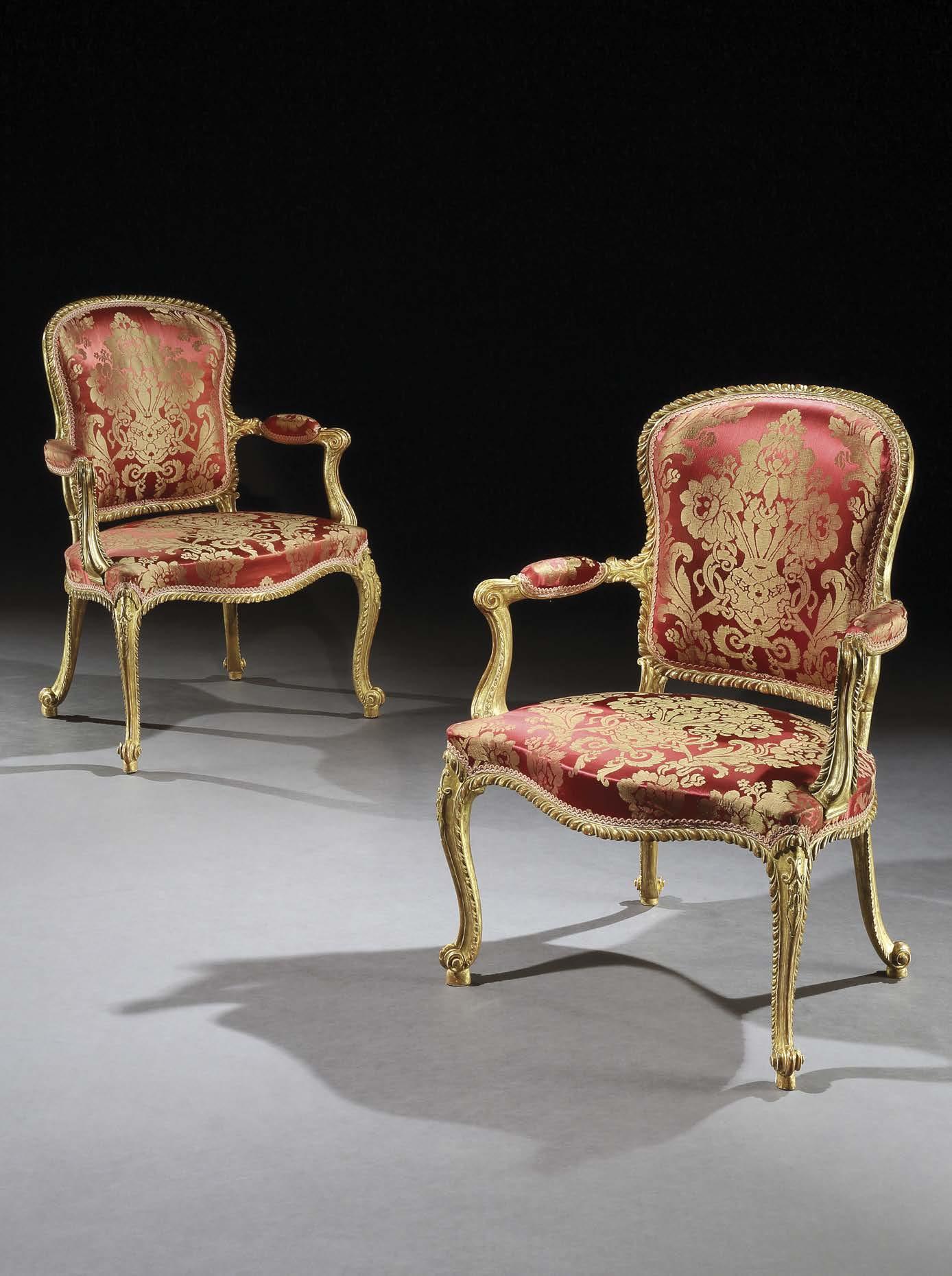
97
A FRENCH BAROQUE ARMCHAIR
France, circa 1680
A magnificent late 17th century French walnut armchair. Upholstered to the seat and back with exceptional 18th century needlepoint. With bold acanthus carved scroll arms and supported on turned and block carved legs joined by elaborately turned stretchers.
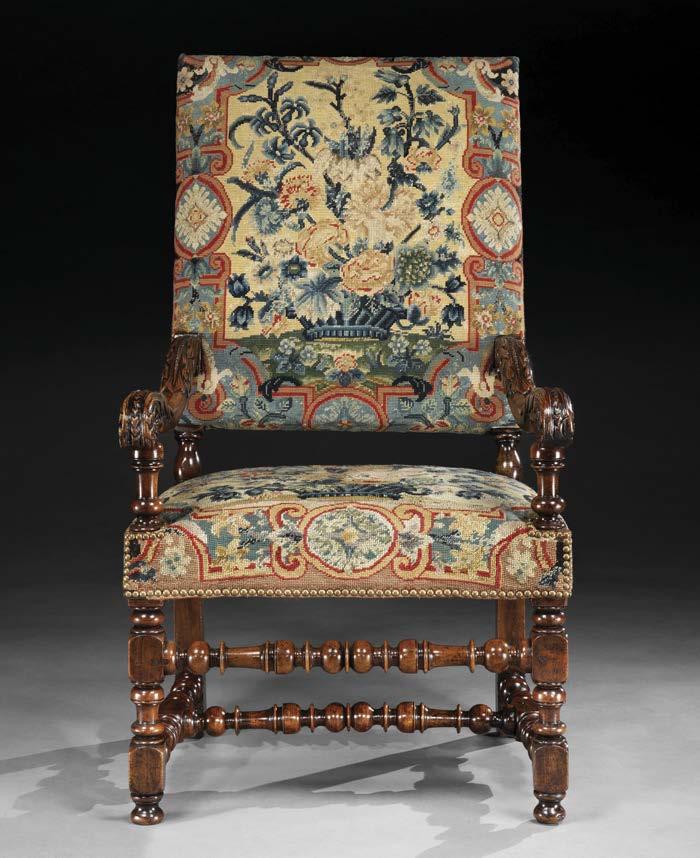
The walnut of wonderful colour and patina. The needlepoint superb.
Height 44½ in (113 cm)
Width: 24¼ in (62 cm)
Depth: 21¾ in (55 cm)
MACKINNON FINE FURNITURE 98
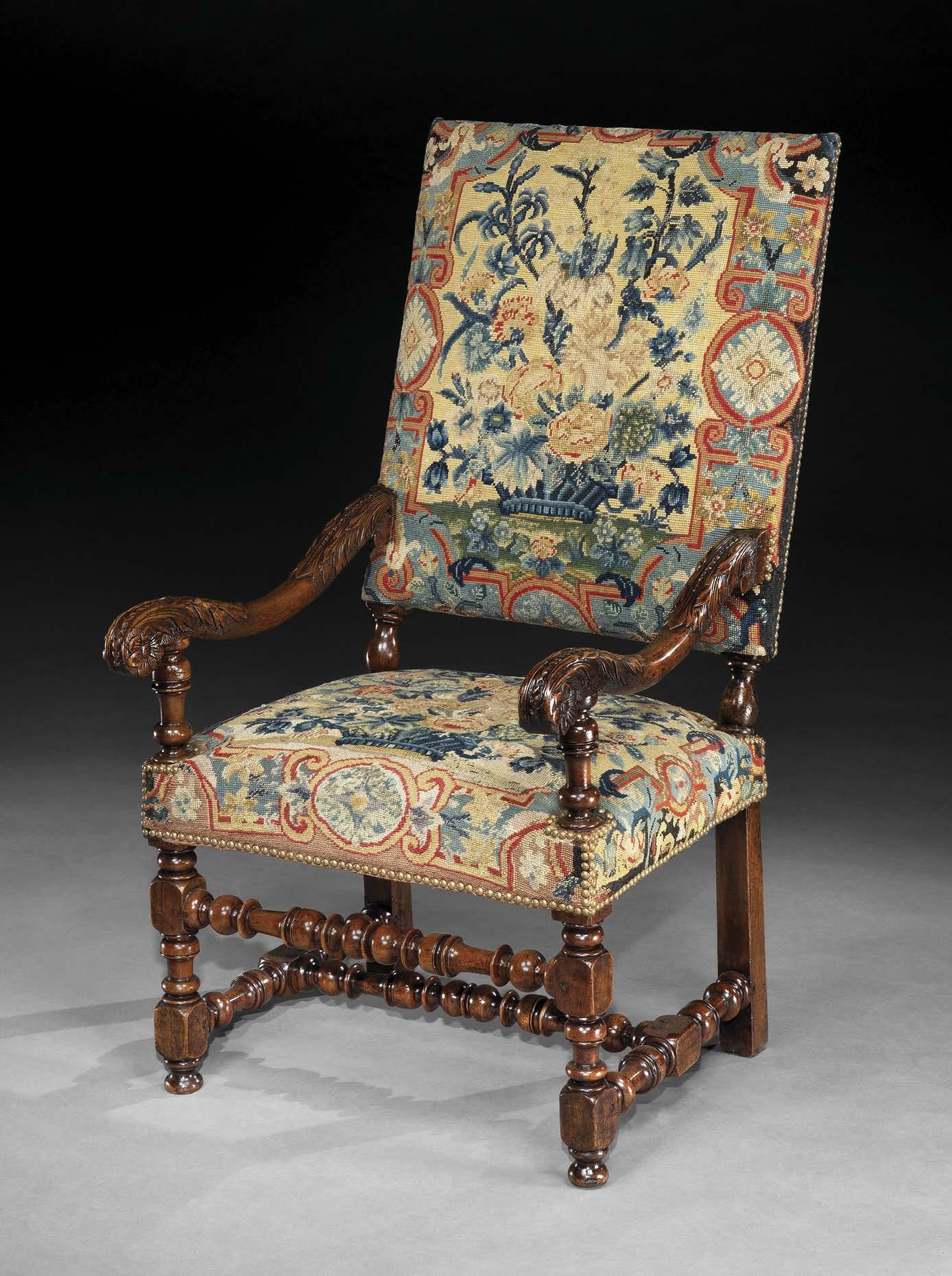
99
AN ORMOLU MOUNTED TORTOISESHELL MIRROR
In the manner of Thomas Parker England, early 19th century
A very fine early 19th century tortoiseshell and engraved brass inlaid pier mirror in the French Louis XIV taste. The rectangular bevelled principal mirror plate with a ‘boulle’ work border frame mounted and embellished with ormolu detailing. The top with an arched mirror plate similar detailed and surmounted by an ormolu acanthus leaf cresting flanked by further scrolling foliate ormolu decoration.
The ormolu mounts of the finest quality throughout.
Height: 54¼ in (138 cm)
Width: 32¾ in (83 cm)
Thomas Parker (fl. 1805-1830) was an English cabinet-maker with workshops in London, and was primarily known for specialising in ‘buhl’ (boulle) work – the art of incorporating pieces of highly decorative engraved brass into a tortoiseshell background, and vice-versa, in the manner of André-Charles Boulle (1642-1732), one of the most celebrated of all French cabinet-makers or ébénistes, employed by the Sun King, Louis XIV of France.
In 1817, Parker’s firm advertised as ‘Cabinet and Buhl Manufacturer to H.R.H. the Prince Regent & Royal Family’. They supplied the Prince Regent, later King George IV, with a pair of tortoiseshell coffers with brass mounts, a pair of buhl drum tables, and ‘rich buhl stands to hold light with carved gilt ornaments’. Other clients included Princess Elizabeth, the 4th Marquess of Bath and the 6th Duke of Bedford.
MACKINNON FINE FURNITURE 100

101
A GEORGE I GILT GESSO SETTEE
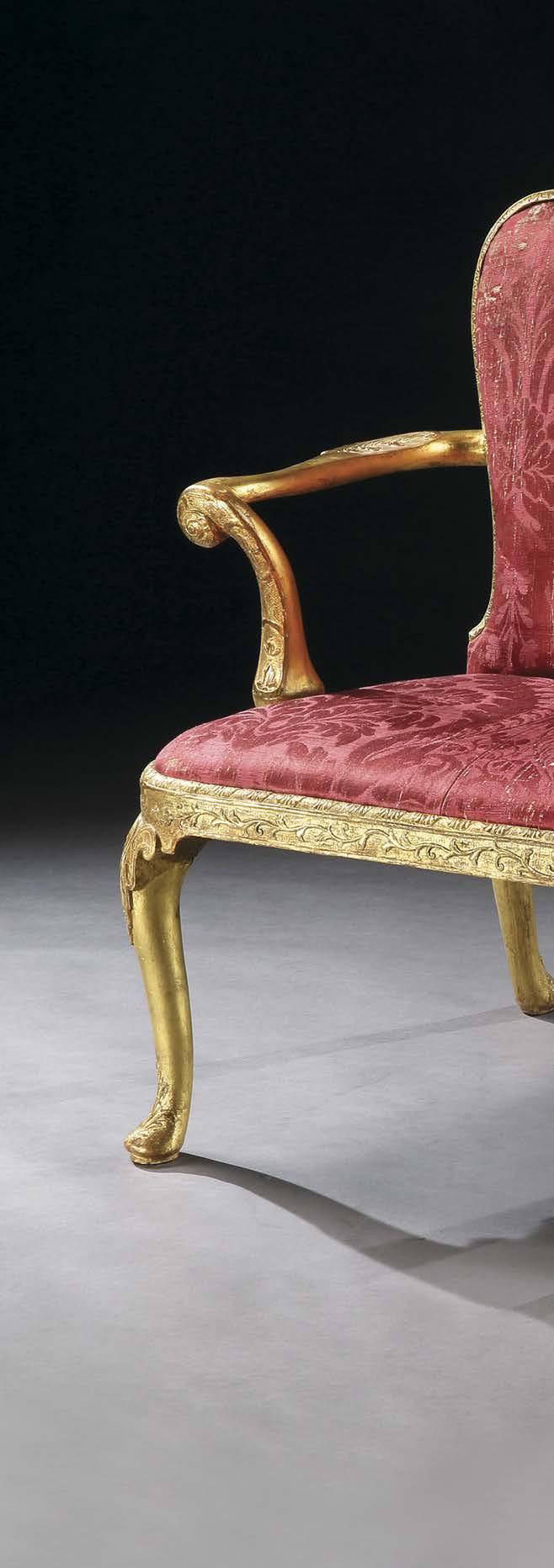
Attributed to James Moore
England, circa 1720
An exceptional and very rare George I carved gilt gesso settee. The frame decorated throughout with outstanding carved gilt gesso detailing, the back and seat upholstered in eighteenth century French silk damask, the arm supports boldly outswept with curled terminals, the gilt gesso seat frieze further embellished with scrolling foliage and circular punchwork detailing, standing on elegant cabriole legs further decorated with acanthus leaves and surmounted by shells, terminating in pad feet similarly decorated.
Height: 49 in (124.5 cm)
Width: 80¾ in (205 cm)
Depth: 25 in (63.5 cm)
Provenance
With Norman Adams, London Private Collection
With Mallett, London Private Collection, USA
Literature
C. Claxton Stevens & S. Whittington, 18th Century English Furniture: The Norman Adams Collection, Woodbridge, 1983, pp. 26-27
L. Synge, Great English Furniture, London, 1991, pp. 83-84, fig. 87
Exhibited Grosvenor House Art & Antiques Fair, London, 1951
‘This settee... is one of the most unusual items of gesso furniture recorded.’
–– C. Claxton Stevens & S. Whittington, 18th Century English Furniture: The Norman Adams Collection, pp. 26-27.
MACKINNON FINE FURNITURE 102

103
THE DUKES OF PORTLAND
A QUEEN ANNE SCARLET JAPANNED BACHELOR’S CHEST
England, circa 1700-1710
An exceptionally rare and highly important Queen Anne japanned bachelor’s chest. Decorated overall with chinoiserie designs on a scarlet red ground, the rectangular hinged top with a silk velvet-lined interior and concealed compartments, above an arched apron and three central drawers, flanked by doors each enclosing five further japanned drawers, the folding top supported by hinged gate legs, the sides similarly decorated and with bold brass carrying handles, on bun feet. The japanning of outstanding quality.

Height: 29¼ in (74 cm)
Width: 37 in (94 cm)
Depth: 14¾ in (37 cm)
Provenance
From the collection of the Dukes of Portland
This exceptional bachelor’s chest is extraordinarily rare. Another example with red japanned decoration was part of the magnificent collections of the Marquess of Cholmondeley from Houghton Hall, Norfolk (sold Christie’s, 8 December 1994, lot 114) and had previously been in the collection of Sir Philip Sassoon, Bt., Trent Park, Hertfordshire. Documented in a photograph of the Blue Room (South Drawing Room) at Trent Park in 1939, that cabinet was subsequently sold by Mallett of New Bond Street.
MACKINNON FINE FURNITURE 104

105
THE LAZCANO PALACE SIDE CHAIRS
 By Giles Grendey England, circa 1735
By Giles Grendey England, circa 1735
An important rare pair of George II scarlet japanned side chairs by Giles Grendey. Each chair with a vase-shaped back splat decorated with chinoiserie figures in landscape scenes with scrolling foliage, birds, and strap work. The bowed seat frames similarly decorated, and with cane-work seats. Raised upon cabriole front legs and outsplayed back legs joined by a serpentine stretcher, on pad feet. Stamped with journey-man’s initials.
Height: 40 in (102 cm)
Width: 21½ in (55 cm)
Depth: 22 in (56 cm)
Provenance
Supplied to either Don Juan Raimundo de Arteaga-Lazcano y Chiriboga, II Marqués de Valmediano (1677-1761), for Lazcano, San Sebastián, Spain, circa 1735-1740, and by descent at Lazcano, or to Don Juan de Dios de Silva Mendoza y Sandival, X Duque del Infantado (1672-1737), or his daughter, Dona Maria Teresa de Silva y Mendoza, XI Duquesa del Infantado (1707-1770), and thence by descent at Lazcano
Part of the suite acquired by Adolfo Loewi, 1930
The Rosen Foundation, Caramoor, New York
Christie’s New York, 14 April 1984, lot 154
Sotheby’s New York, Important English Furniture and Related Decorative Arts – A Private Collection, 22 April 1995, lot 89
The collection of Ann and Gordon Getty, San Francisco
The Lazcano Suite by Giles Grendey
These iconic chairs form part of the most celebrated and elaborate suite of English furniture made during the 18th century. Commissioned from the esteemed London cabinet-maker Giles Grendey, this extensive suite comprises at least seventy-seven scarlet japanned pieces including tables, chairs, daybeds, looking glasses, tripod stands, and several desks and bookcases, part of which can now be found in museums worldwide including the Victoria & Albert Museum in London and the Metropolitan Museum of Art in New York.
For a full bibliography and history, please contact us.
MACKINNON FINE FURNITURE 106
The interior of the Lazcano Palace, showing part of the suite C. de Arteago, La Casa del Infantado, Cabeza de Mendoza, vol. II, 1944
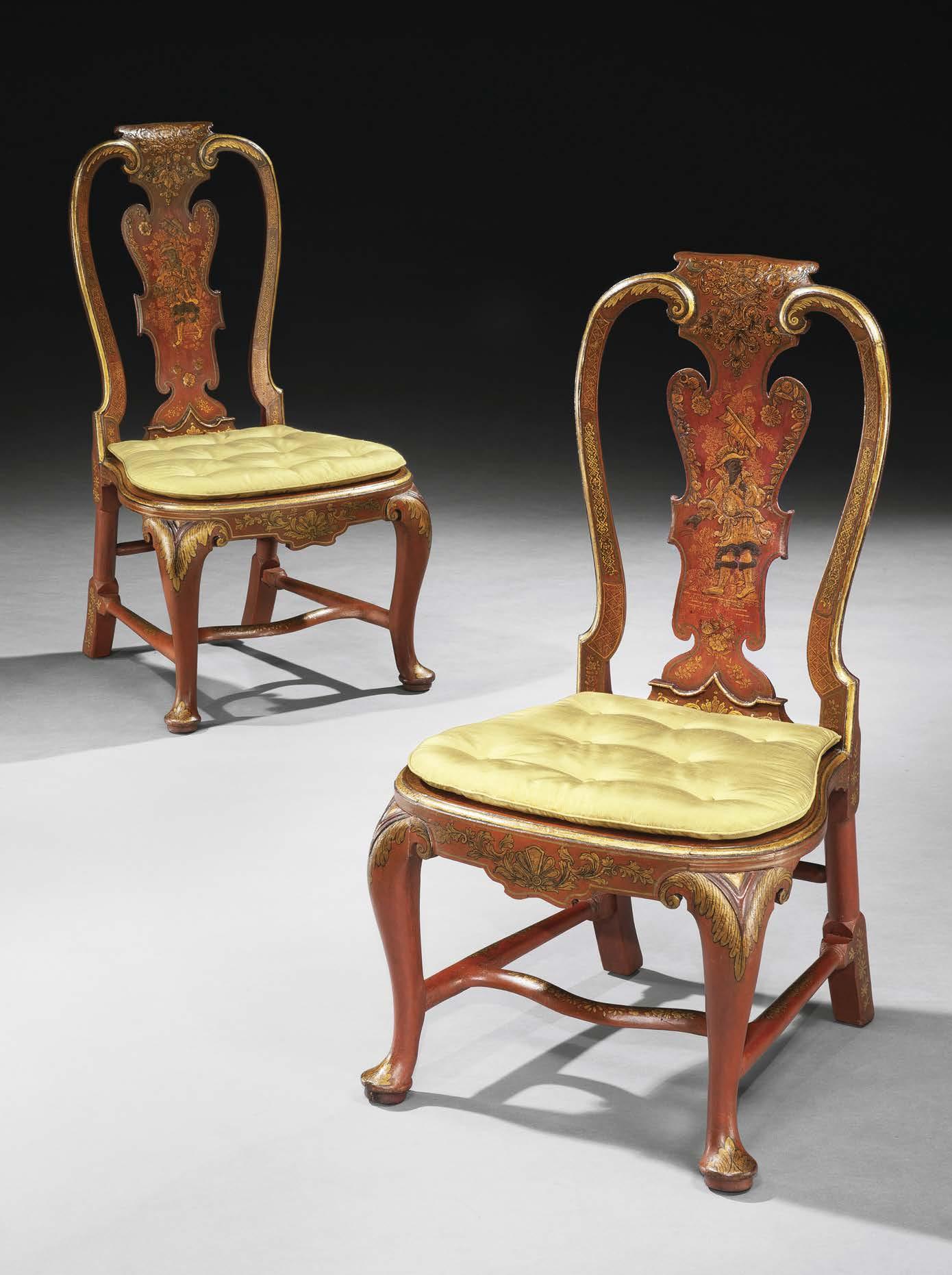
107
A QUEEN ANNE BURR WALNUT CHEST OF DRAWERS
England, circa 1710
An exceptional Queen Anne walnut chest of drawers, veneered in burr walnut of the finest figuring and colour. The caddy top with rare double feather-banded borders and moulded edges, with a brushing slide above two small and three long drawers similarly decorated. With original locks and brass handles, raised on bracket feet.
Height: 30¼ in (77 cm)
Width: 29¼ in (74 cm)
Depth: 18½ in (47 cm)
Provenance
With Mallett, London (1995) Private Collection, USA
Literature
Mallett Catalogue, 1995, pp. 22 - 23 (illustrated)
This beautiful chest of drawers exemplifies the style of furniture that has become synonymous with the Queen Anne period. Small in scale, simple in concept and practical for everyday use, this chest of drawers epitomises the very best of early eighteenth century cabinet-making. The panelled effect of the top created by double lines of feather-banded inlay, with the richness of the burr walnut veneers in between is exceptional. The chest remains in remarkable original condition with the genuine character and patination that can only have developed over three centuries.
MACKINNON FINE FURNITURE 108

109
THOMAS CHIPPENDALE FOR FOREMARK HALL
A GEORGE III PAINTED ARMCHAIR
By Thomas Chippendale England, circa 1766
A very fine George III green and white painted armchair by Thomas Chippendale. In the ‘French’ taste, with a cartouche shaped upholstered back surmounted by a cabochon and acanthus carved cresting, with a channelled frame, upholstered arms with scroll terminals, the upholstered seat over a moulded rail centred by acanthus foliage, supported on cabriole legs headed by C-scrolls and bell-flowers and terminating in scroll feet. Together with a later matching chair.
Height: 35 in (89 cm)
Width: 25 in (63 cm)
Depth: 22 in (56 cm)
Provenance
Supplied by Thomas Chippendale to Sir Robert Burdett (17161797), 4th Baron Bramcote, for Foremark Hall, Derbyshire, in 1766.
Private Collection, USA
Literature
The Chippendale Society, A New Chippendale Discovery - A Settee and Two Chairs from Foremarke Hall, 1 October 2019
Christopher Gilbert, The Life and Works of Thomas Chippendale, 1978
The seat furniture supplied by Thomas Chippendale to Sir Robert Burdett in 1766, for Foremarke Hall in Derbyshire, comprised armchairs, window seats and at least one sofa. The suite was most probably delivered prior to February 1766 when Sir Robert’s account books acknowledged a payment dated 17 February 1766 ‘To Mr Chippendale cabbenet Maker for Chairs, for the Country..... £374 - 0’. Foremarke Hall was extensively remodelled between 1759 and 1762 and John Cobb, Samuel Smith and Thomas Chippendale were amongst the furniture makers commissioned. Accounts suggest that Sir Robert spent close to, if not more than, £1000 with Chippendale including the aforementioned seat furniture as well as overmantel mirrors, globe lamps and a fine secretaire cabinet. The suite of seat furniture was recorded in the Large Drawing Room at Foremark in 1892 and described as ‘The Green and White Painted Cabriole Suite’.
These elegant chairs, lightly enriched with carved Roman acanthus detailing after the antique manner, epitomise the George III ‘French’ fashion introduced by Thomas Chippendale in the 1760s. Their voluted and serpentine frames relate in particular to Chippendale’s drawings for chairs of around 1761, some of which were engraved for his The Gentleman and CabinetMaker’s Director of 1762. Stylistically these chairs fit with Chippendale’s other documented commissions of the periodnotably a set of ten armchairs and three sofas supplied to Sir Lawrence Dundas for 19 Arlington Street and invoiced on 29 January 1766 as ‘10 Large French Armchairs very richly carv’d and gilt in Burnish’d Gold’. A related suite in mahogany were ordered for Lady Winn’s antechamber at Nostell Priory, invoiced on 15 October 1767 as ‘10 Mahaogany french arm Chairs’.
MACKINNON FINE FURNITURE 110
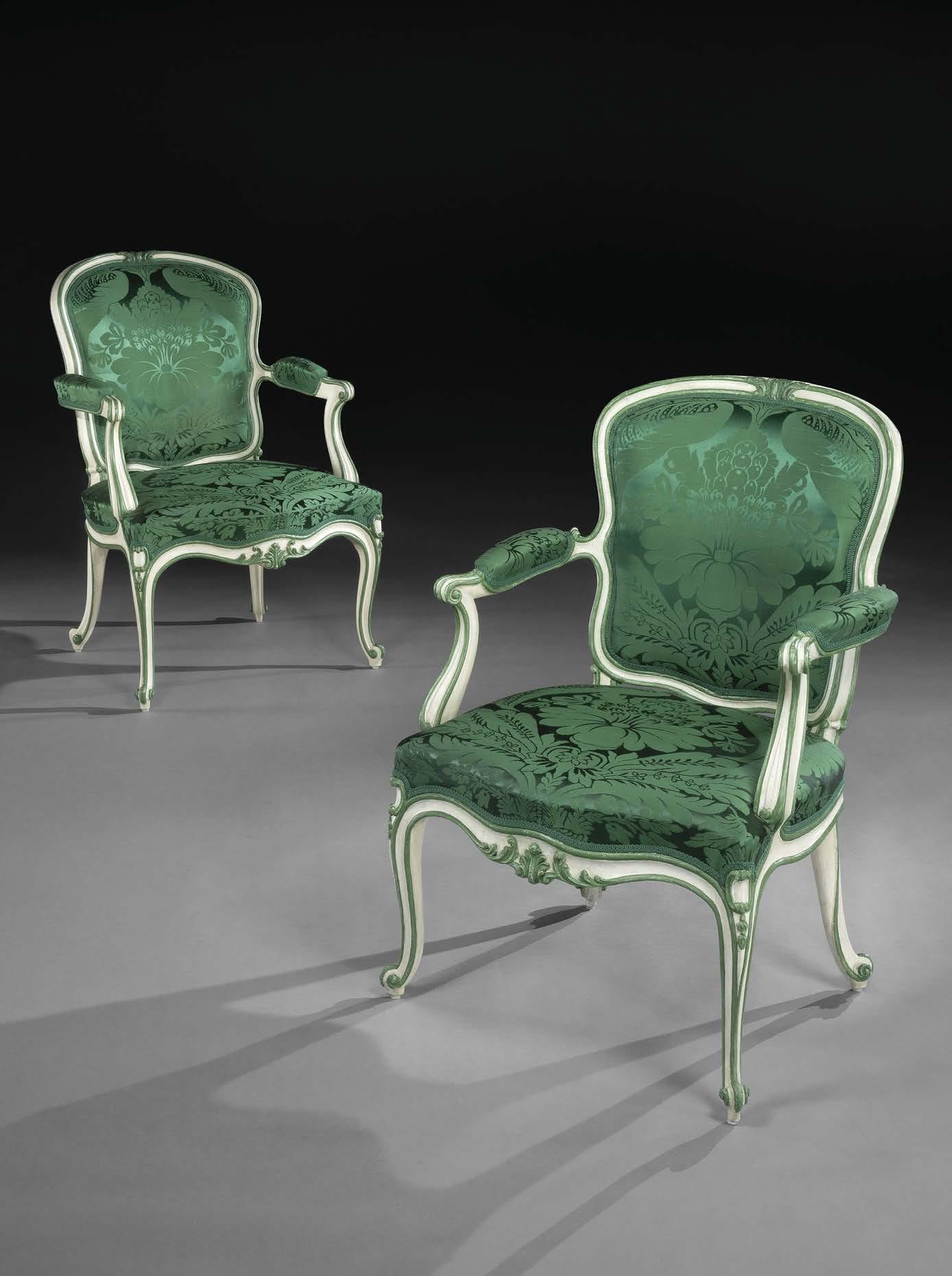
111
A GEORGE III MAHOGANY DRESSING CABINET

A very fine and rare George III Chippendale period mahogany dressing chest- cabinet. The upper section with central glazed display cabinet with a moulded plinth with arcaded cornice, flanked by two mahogany cupboards with fielded panels each opening to reveal six pigeon-holes and a bank of four graduated mahogany lined drawers each with brass axe-head handles. The lower section in the form of a serpentine chest of drawers, with moulded edge, four graduated full width drawers and bold bracket feet. The top drawer fully fitted with brushing slide, a mirror on a ratchet mechanism and numerous compartments.
Height: 69¾ in (177 cm)
Width: 43¼ in (110 cm)
Depth: 24¾ in (63 cm)
The mahogany of particularly fine colour and patina throughout.
This superb piece of 18th century cabinet-furniture bears many features typical with those on documented Chippendale pieces, making an atttribution to Thomas Chippendale highly plausible. In particular, comparisons can be made to some of the furniture supplied to Ninian Home for Paxton and to Lord Dumfries for Dumfries House.
Possibly by Thomas Chippendale England, circa 1765
MACKINNON FINE FURNITURE 112

113
A GEORGE II ROCOCO CARD TABLE
England, circa 1755
An extremely fine and rare George II carved ‘amarillo’ or ‘quilted mahogany’ card table in the Rococo taste. The subtly dished top with fantastic figuring, of inverted breakfront design with square corners. With a gateleg mechanism, the hinged top folding over to reveal a fitted green baize games surface. The shaped frieze with a superb central carved detail, standing on exceptional rocaille and floral tendril carved scrolled cabriole legs that terminate in claw and ball feet.

Height: 28¾ in (73 cm)
Width: 34¾ in (88 cm)
Depth: 17¼ in (43.5 cm)
MACKINNON FINE FURNITURE 114

115
ANTIQUE TABLE LAMPS
Right: A PAIR OF IMARI LAMPS
The vases Japan, circa 1880
An exceptional pair of large late 19th century Japanese vases, decorated in the typical Imari palette of iron reds and blues on a white background with gilded highlights, now mounted as lamps with hand gilded turned bases. Of large scale with rare, facetted panel decoration and superb painted detail.
Height of vases: 19 in (48 cm) including giltwood base, excluding electrical fitment and lampshade.
Below: A PAIR OF GREEN TEA CANISTER LAMPS
The canisters England, circa 1880
A magnificent pair of large late 19th century green and gilt chinoiserie decorated tea canisters of rounded form with pagoda shaped tops, now mounted as lamps with hand gilded turned bases.
Height of canisters: 19¾ in (50cm) including giltwood base, excluding electrical fitment or lampshade.
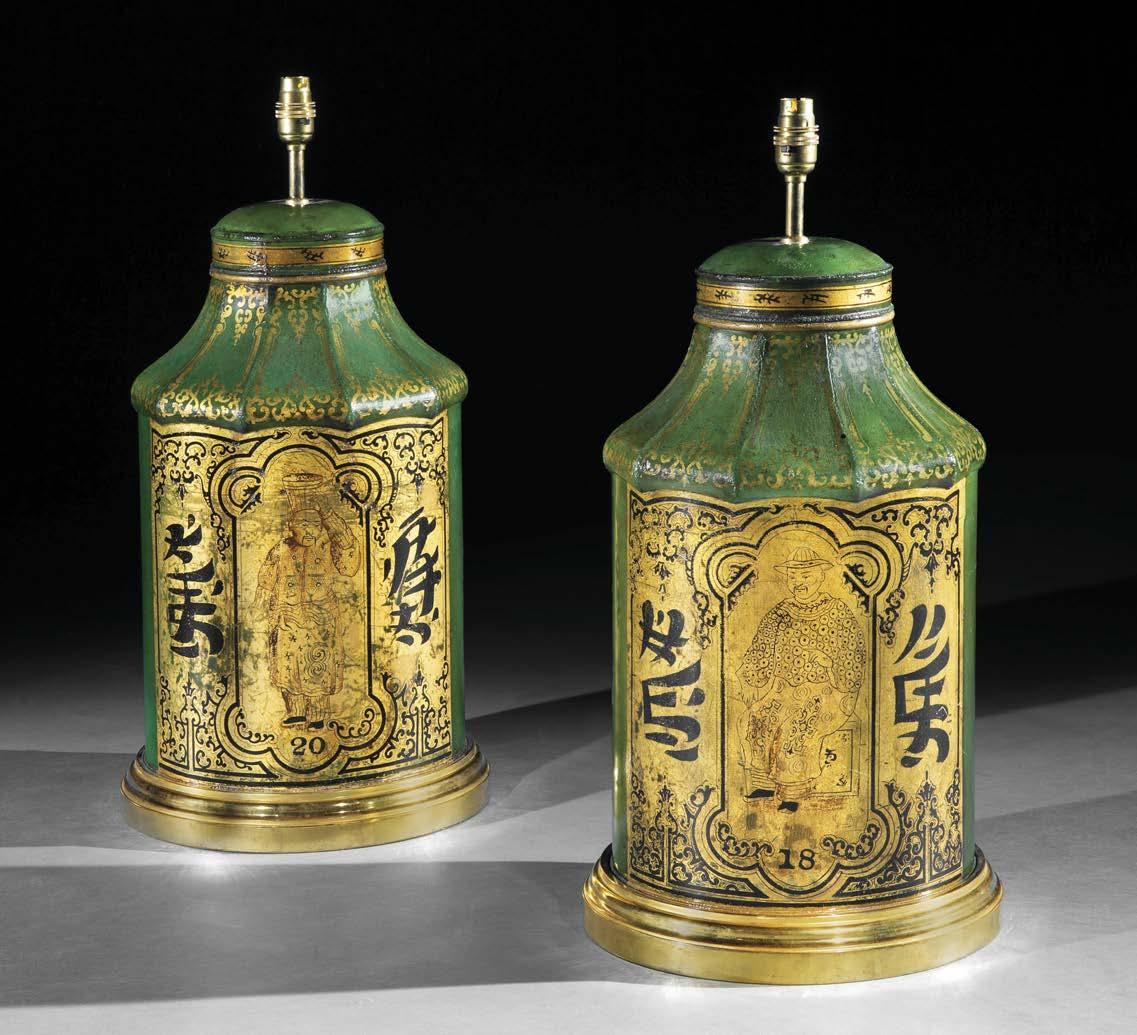
MACKINNON FINE FURNITURE 116
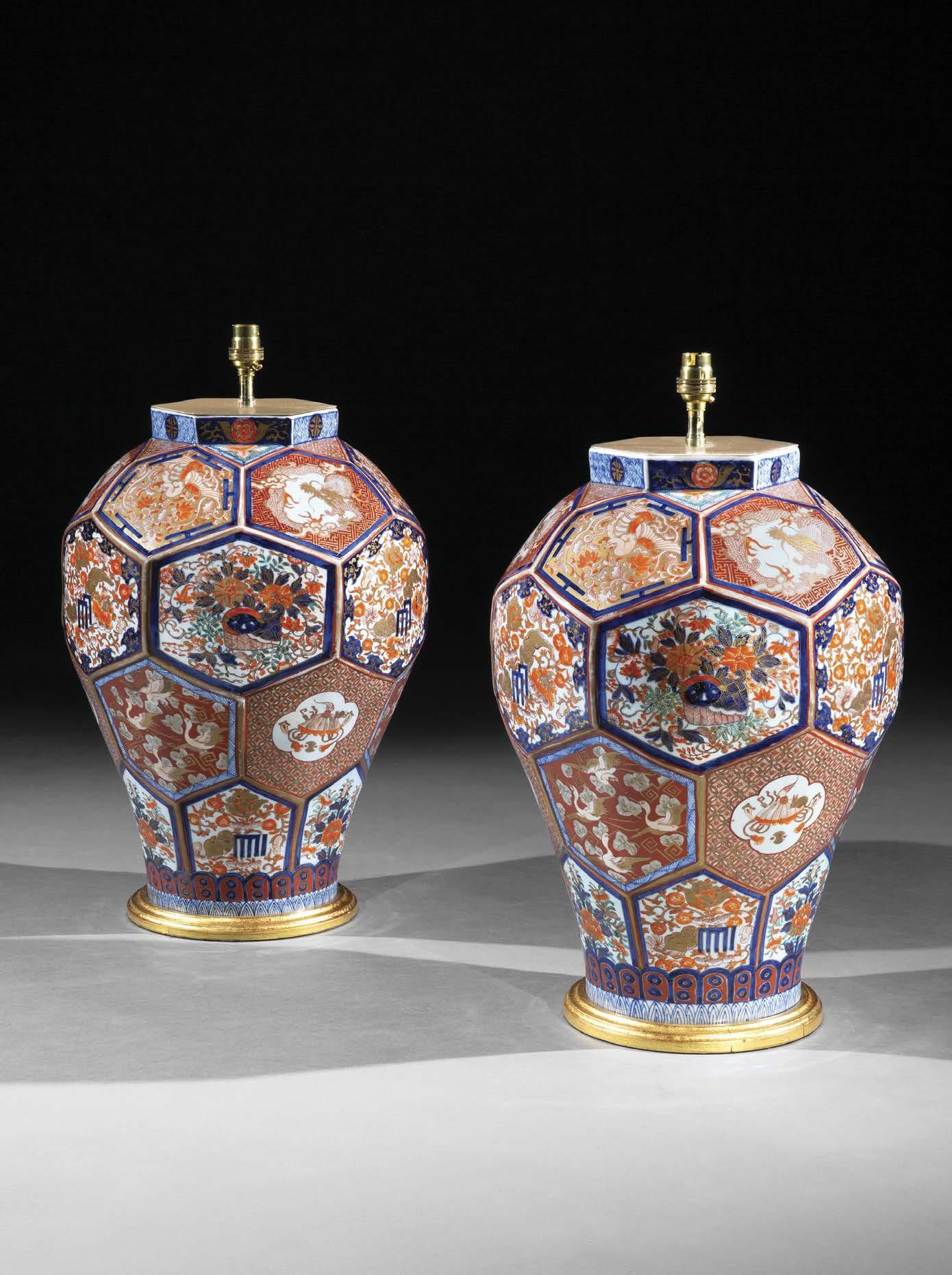
117
ANTIQUE TABLE LAMPS
Right:
A LARGE PAIR OF DELFT DOUBLE GOURD LAMPS
The vases Holland, circa 1850
A magnificent pair of large Dutch Delft vases. Of double gourd form and decorated throughout with exotic birds amongst stylised floral and foliate decoration in tones of blues on a white background, now mounted as lamps with hand-gilded turned bases.
Height of vases: 23 in (59 cm) including giltwood base, excluding electrical fitment or lampshade.
Below: A PAIR OF SAMSON IMARI TABLE LAMPS
The vases France, circa 1880
A superb pair of large 19th century Continental porcelain vases and covers, probably by Samson. Each vase beautifully decorated in the Imari palette, with pavilions on rocky shorelines, reserved against a blue ground painted with stylised flowers and leaves. Now mounted as lamps with hand gilded turned bases.
Height of vases: 20¾ in (53 cm) including giltwood base, excluding electrical fitment or lampshade.
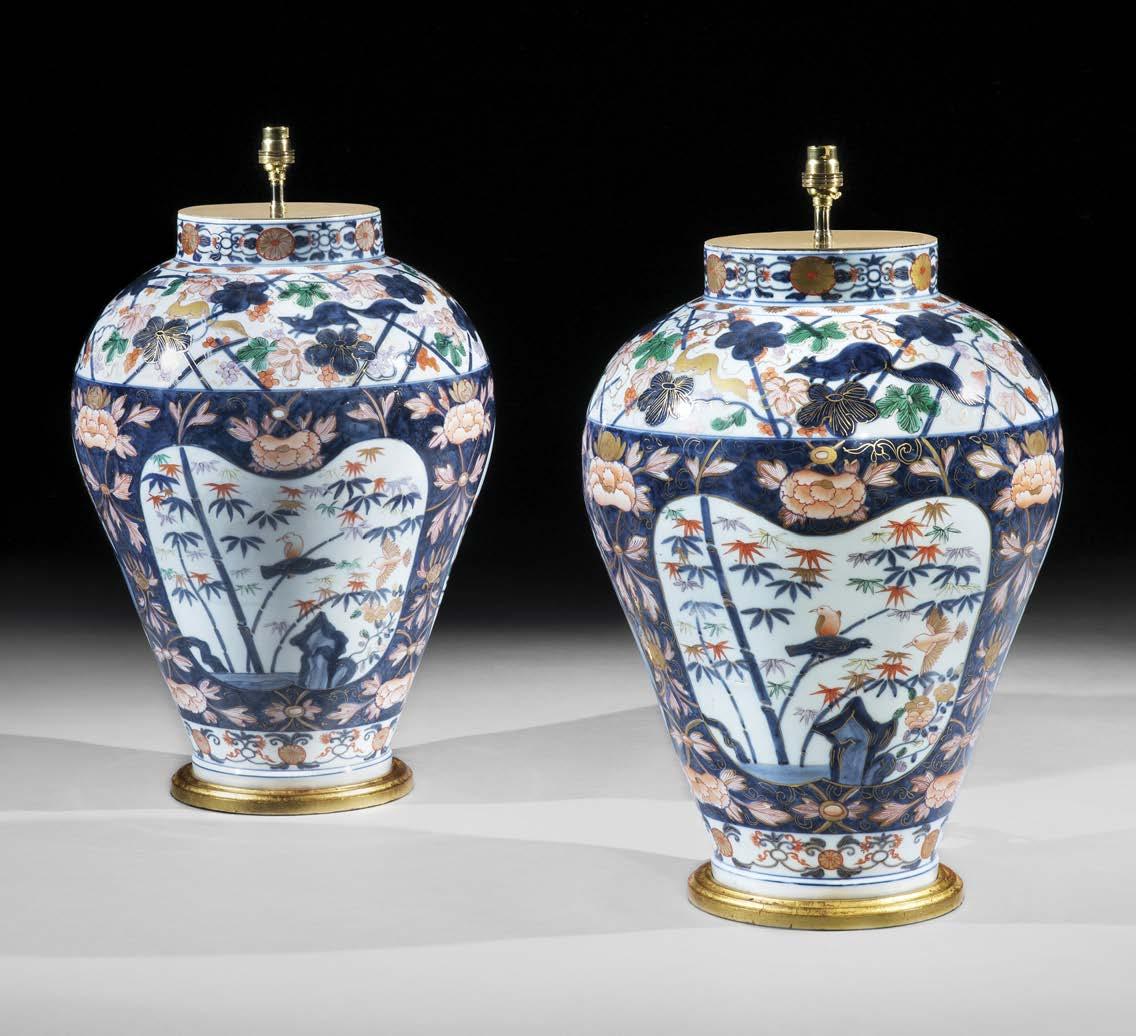
MACKINNON FINE FURNITURE 118
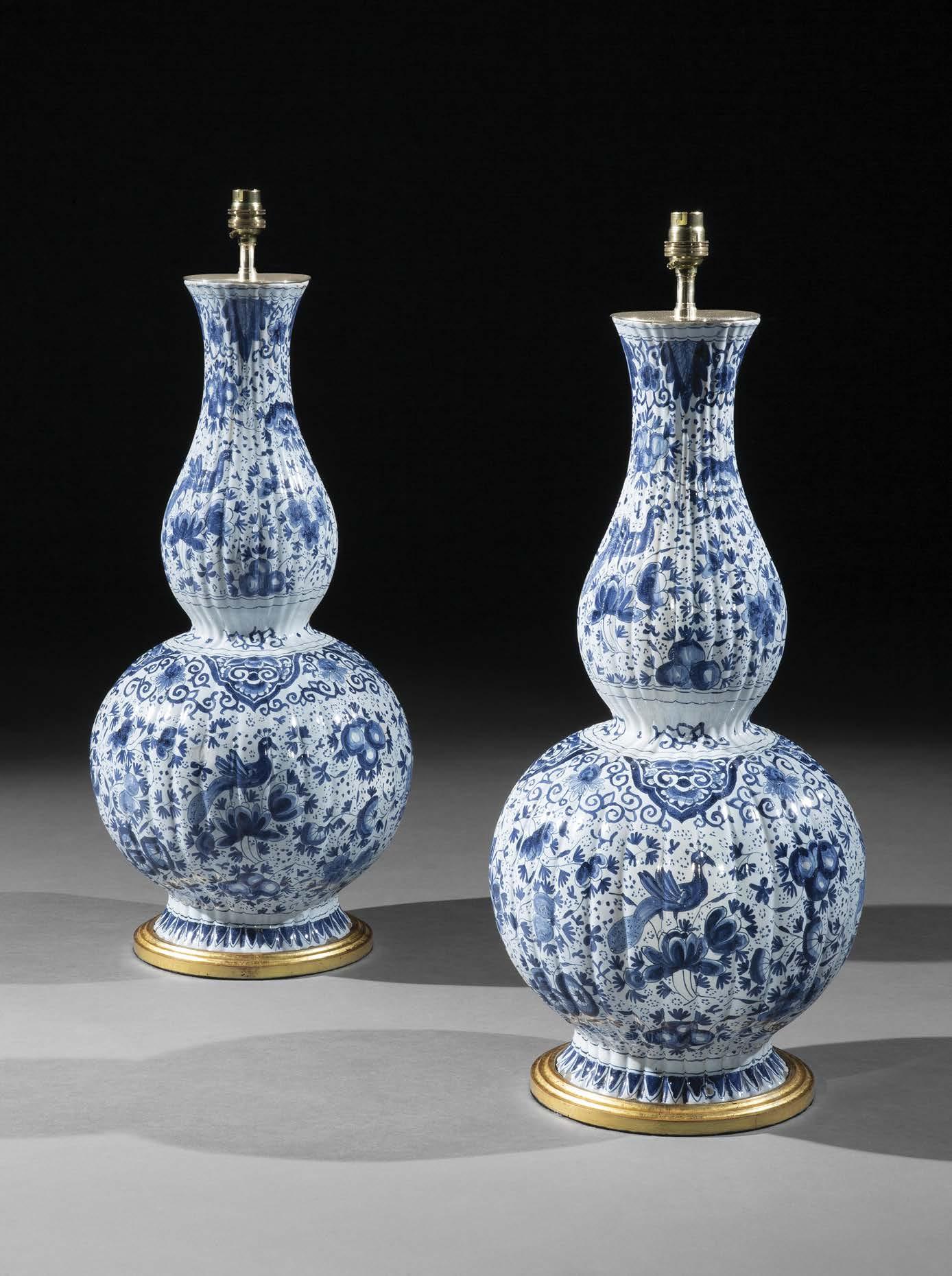
119
OUR SERVICES
We offer a comprehensive service around all aspects of your collection of fine antique furniture. We are particularly well placed in the market to offer advice on matters including sourcing, de-acquisitioning, cataloguing, shipping, restoration, and conservation, as well as interior consultation.
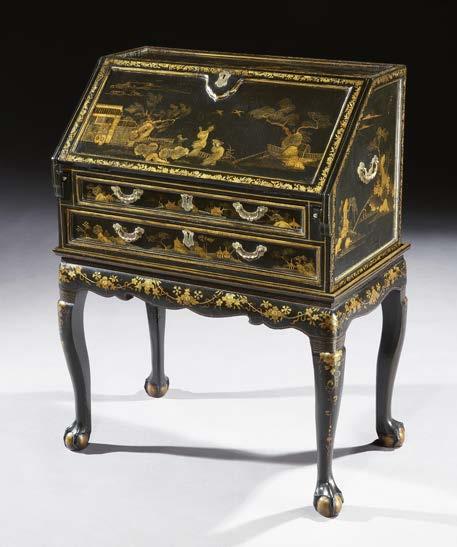
SOURCING
We are often asked to source specific pieces on behalf of our clients. Whether this is at auction, or from our extensive access to private collections not readily available on the market, we are ideally placed to facilitate these requirements.
RESTORATION
We provide a comprehensive restoration and conservation service. Our extensive contacts with a wide range of highly skilled and specialist restorers both in the UK and the USA allow us to carry out restoration on behalf of our clients to meet their specific needs, including polishing and waxing, japanning and lacquer work, gilding, decorative painting, framing, and upholstery. Please contact us for a quote.

Copyright All rights reserved. No part of this publication may be reproduced, stored in any retrieval system or transmitted in any form or by any means electronic, mechanical, photocopying, recording or otherwise, without the prior permission of the publishers.
Terms and Conditions All business transactions are subject to our standard terms and conditions of sale, copies of which are available upon request.
Trading as Mackinnon Fine Art Consultancy Limited, Registered in England & Wales, No. 5747760.
MACKINNON FINE FURNITURE 120
An 18th century Chinese Export lacquer bureau on stand sourced for a client.
Detail of the George II walnut shepherds crook armchair.
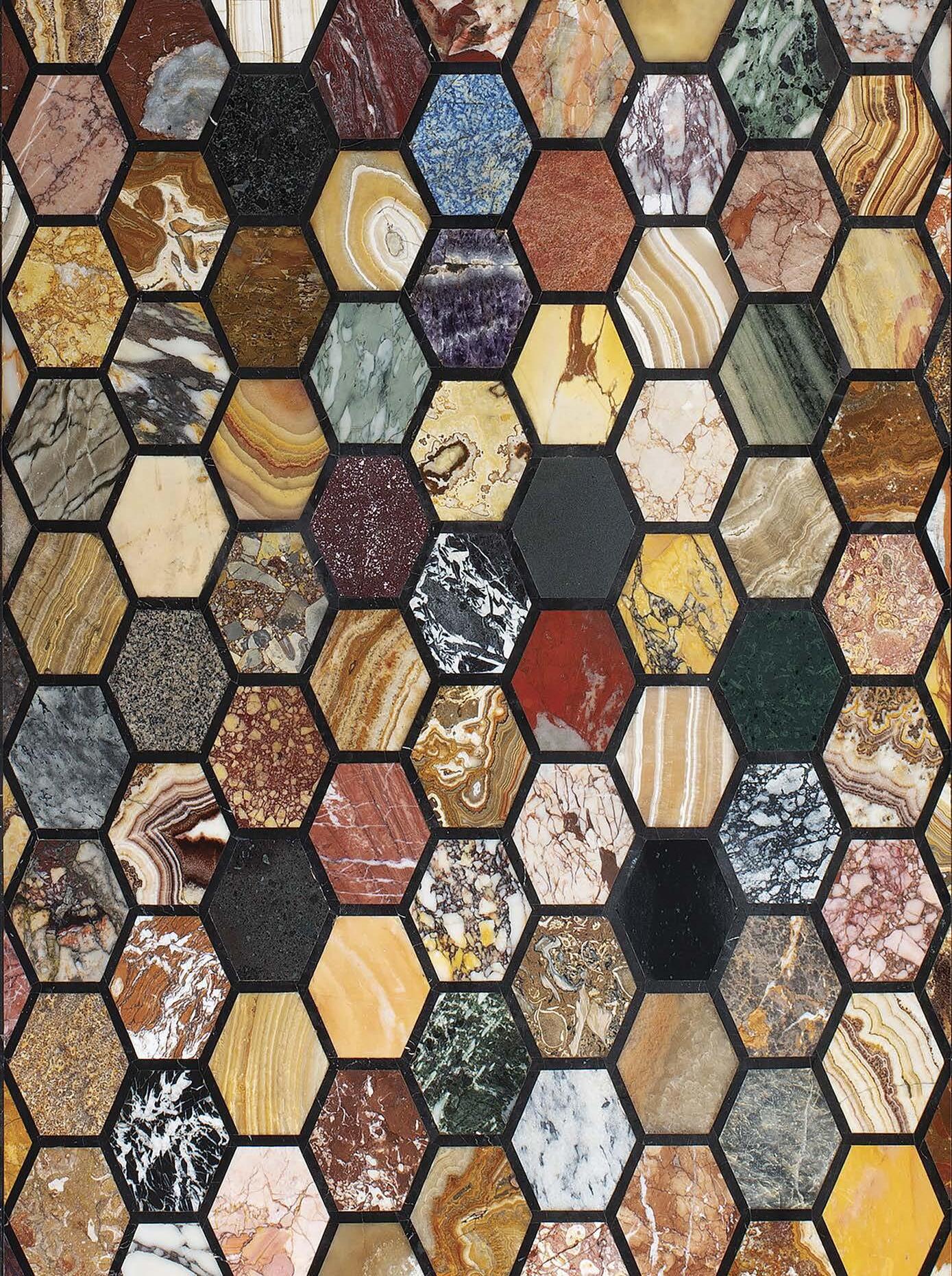



 Charlie Mackinnon Mackinnon
Charlie Mackinnon Mackinnon

















































































 By John Taylor, London England, circa 1780
By John Taylor, London England, circa 1780









 By Giles Grendey England, circa 1735
By Giles Grendey England, circa 1735













